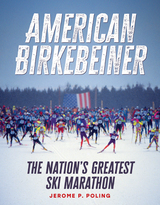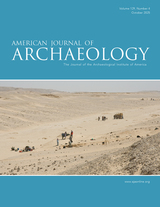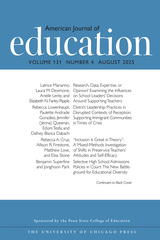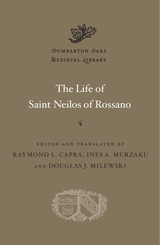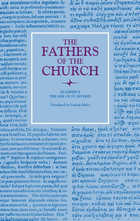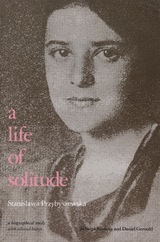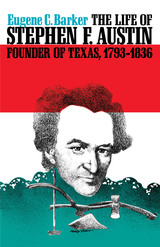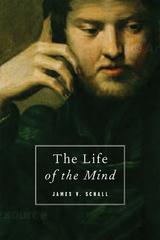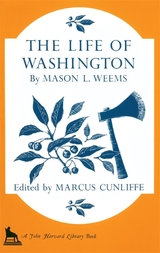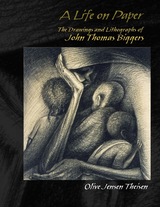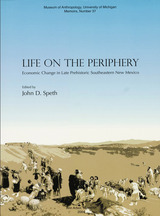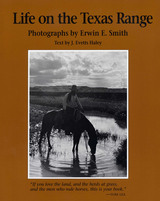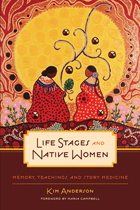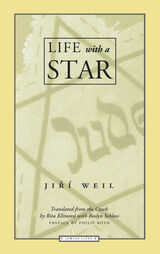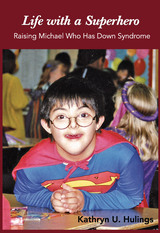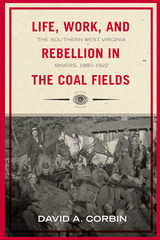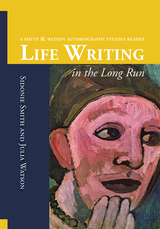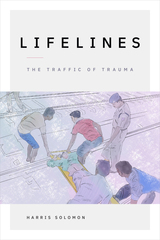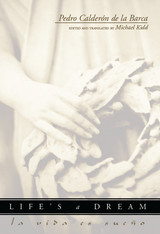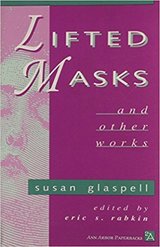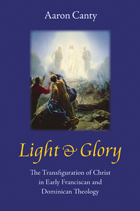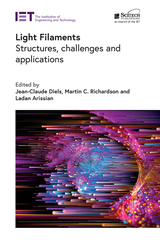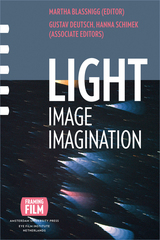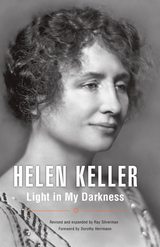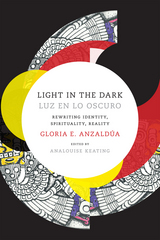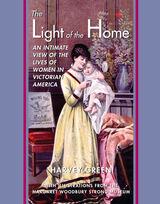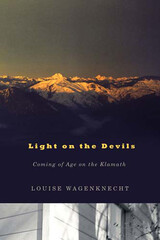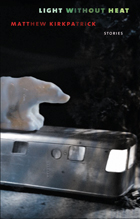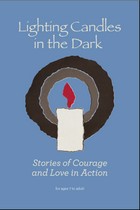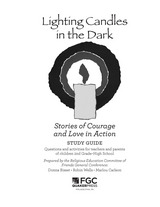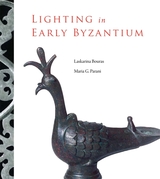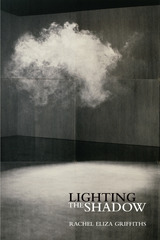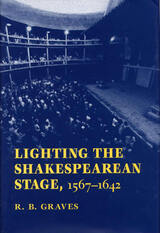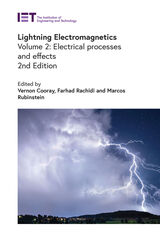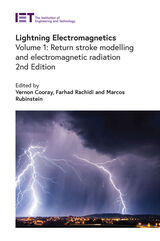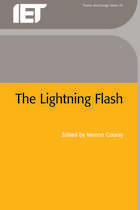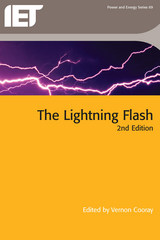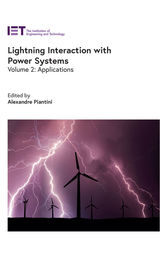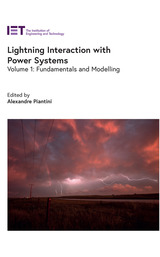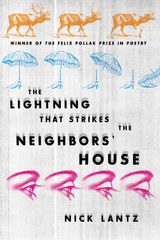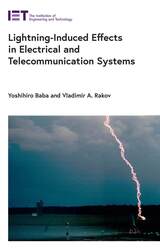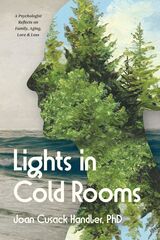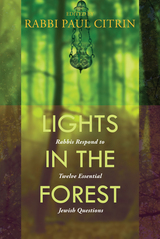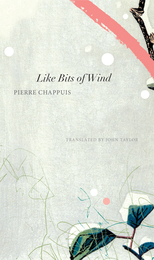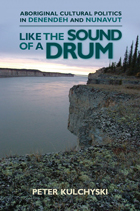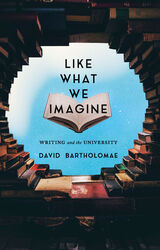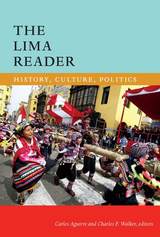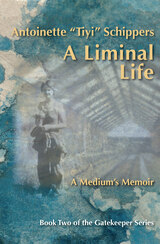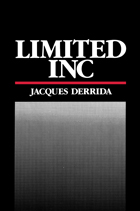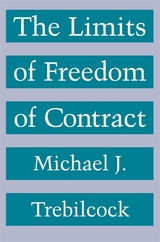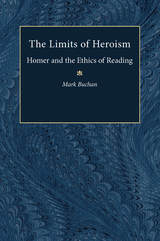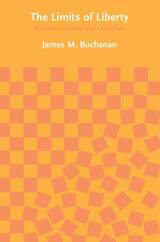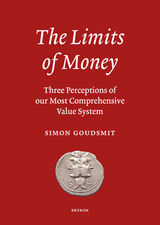The Life of Saint Neilos of Rossano
Raymond L. Capra
Harvard University Press, 2018 The Life of Saint Neilos of Rossano is a masterpiece of historically accurate Italo-Greek monastic literature. Neilos, who died in 1004, vividly exemplifies the preoccupations of Greek monks in southern Italy under the Byzantine Empire. A restless search for a permanent residence, ascetic mortification of the body, and pursuit by enemies are among the concerns this text shares with biographies of other saints from the region. Like many of his peers, Neilos lived in both hermitages and monasteries, torn between the competing conventions of solitude and community. The Life of Neilos offers a snapshot of a distinctive time when Greek and Latin monasticism coexisted, a world that vanished after the schism between the churches of Rome and Constantinople in 1054. This is the first English translation, with a newly revised Greek text.
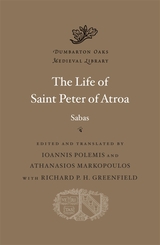 The Life of Saint Peter of Atroa
Sabas
Harvard University Press, 2024 An authoritative new Greek edition and English translation of the life of a notable Byzantine monastic leader.
Saint Peter of Atroa (773–837 CE) was a Byzantine monastic leader, remembered primarily as cofounder and abbot of the influential monastery of Saint Zachariah at Atroa, below the holy mountain of Olympos in Bithynia. Peter sought to live in tranquility and solitude, traveling to the various monasteries he established in northwestern Asia Minor and occasionally joining other notable monastic figures. However, his resistance to the Iconoclast policies of imperial regimes in Constantinople during the first half of the ninth century led to his persecution and the temporary dispersal of his communities. Although he was evidently regarded with suspicion by some of his contemporaries, he gained a reputation as a miracle worker and his tomb became the site of a healing cult in the years after his death.
The Life of Saint Peter of Atroa was written by the saint’s disciple Sabas, also the biographer for Peter’s contemporary and friend Saint Ioannikios, and it survives in two manuscript versions. This volume represents an entirely new edition of the Greek text, establishing the version previously regarded as secondary as the more important of the two, and making the Life accessible to English readers for the first time.
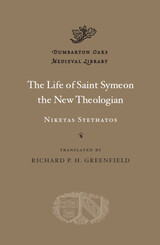 The Life of Saint Symeon the New Theologian
Niketas Stethatos
Harvard University Press, 2013 Today the Byzantine mystic, writer, and monastic leader Symeon the New Theologian (ca. 949 to 1022 ce) is considered a saint by the Orthodox Church and revered as one of its most influential spiritual thinkers. But in his own time a cloud of controversy surrounded him and the suspicion of heresy tainted his reputation long afterward.
The Life was written more than thirty years after Symeon’s death by his disciple and apologist the theologian Niketas Stethatos, who also edited all of Symeon’s spiritual writings. An unusually valuable piece of Byzantine hagiography, it not only presents compelling descriptions of Symeon’s visions, mystical inspiration, and role as a monastic founder, but also provides vivid glimpses into the often bitter and unpleasantly conflicted politics of monasticism and the construction of sanctity and orthodoxy at the zenith of the medieval Byzantine Empire. Although the many volumes of Symeon’s spiritual writings are now readily available in English, the present translation makes the Life accessible to English readers for the first time. It is based on an authoritative edition of the Greek.
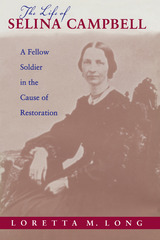 The Life of Selina Campbell: A Fellow Soldier in the Cause of Restoration
Loretta M. Long Hunnicutt
University of Alabama Press, 2001 This first biography of Selina Campbell opens a window onto the experience of women in one of the most dynamic religious groups of 19th-century America
Loretta M. Long examines the life and influence of Selina Campbell, one of the most visible women in the 19th-century Disciples of Christ movement. Best known as the wife of Alexander Campbell, founder of the Disciples, Selina Campbell both shaped and exemplified the role of women in this dynamic religious group (also known as the Stone-Campbell movement). Her story demonstrates the importance of faith in the lives of many women during this era and adds a new dimension to the concept of the “separate spheres” of men and women, which women like Campbell interpreted in the context of their religious beliefs. A household manager, mother, writer, and friend, Campbell held sway primarily in the domestic sphere, but she was not held captive by it. Her relationship with her husband was founded on a deep sense of partnership conditioned by their strong faith in an all-powerful God. Each of them took on complementary roles according to the perceived natural abilities of their genders: Alexander depended on Selina to manage his property and raise the children while he traveled the country preaching. Campbell outlived her husband by 30 years, and during that time published several newspaper articles and supported new causes, such as women in missions. In the end, as Long amply demonstrates, Selina Campbell was neither her husband’s shadow nor solely a domestic worker. She was, in her husband’s eyes, a full partner and a “fellow soldier” in the cause of Restoration.
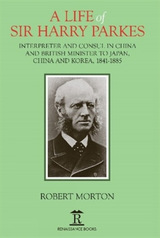 A Life of Sir Harry Parkes: British Minister to Japan, China and Korea, 1865-1885
Robert Morton
Amsterdam University Press, 2020 Harry Parkes was at the heart of Britain’s relations with the Far East from the start of his working life at fourteen, to his death at fifty-seven. Orphaned at the age of five, he went to China on his own as a child and worked his way to the top. God-fearing and fearless, he believed his mission was to bring trade and ‘civilisation’ to East Asia. In his day, he was seen as both a hero and a monster and is still bitterly resented in China for his part in the country’s humiliations at Western hands, but largely esteemed in Japan for helping it to industrialise. Morton’s new biography, the first in over thirty years, and benefiting in part from access to the Parkes’ family and archives, offers a more intimate and informed profile of the personal and professional life of a Victorian titan and one of Britain’s most undiplomatic diplomats in the history of the British Civil Service.
A Life of Solitude: Stanislawa Przybyszewska, a Biographical Study with Selected Letters
Jadwiga Kosicka
Northwestern University Press, 1986 A Life of Solitude is a biography of Polish playwright Stanislawa Przybyszewska (1901–35). One of the finest plays about the French Revolution, The Danton Case, was written by this unknown Polish woman living in obscurity in the free city of Danzig. The illegitimate daughter of writer Stanislaw Przybyszewski, she became a writer against long odds and at the cost of her health, her sanity, and eventually her life. A Life of Solitude shows how she chose her vocation, examine her ideas about writing, and reveal her struggle with material existence. Tragically, she came to substitute creativity for life and clung to her sense of calling with a stubbornness that dulled the instinct for self-preservation and led to her death from morphine and malnutrition at age thirty-four.
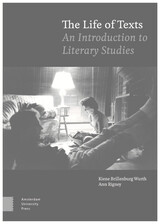 The Life of Texts: An Introduction to Literary Studies
Kiene Brillenburg Wurth
Amsterdam University Press, 2019 This innovative introduction to literary studies takes 'the life of texts' as its overarching frame. It provides a conceptual and methodological toolbox for analysing novels, poems, and all sorts of other texts as they circulate in oral, print, and digital form. It shows how texts inspire each other, and how stories migrate across media. It explains why literature has been interpreted in different ways across time. Finally, it asks why some texts fascinate people so much that they are reproduced and passed on to others in the form of new editions, in adaptations to film and theatre, and, last but not least, in the ways we look at the world and act out our lives.
The Life of Texts is designed around particular issues rather than the history of the discipline as such. Each chapter concentrates on a different aspect of 'the life of texts' and introduces the key debates and concepts relevant to its study. The issues discussed range from aesthetics and narrative to intertextuality and intermediality, from reading practices to hermeneutics and semiotics, popular culture to literary canonisation, postcolonial criticism to cultural memory. Key concepts and schools in the field have been highlighted in the text and then collected in a glossary for ease of reference. All chapters are richly illustrated with examples from different language areas.
 Life of the 381st Bomb Group: The WWII Diary of 8th Air Force Chaplain James Good Brown
Bob Korkuc
University of Missouri Press, 2026 Life of the 381st Bomb Group depicts the daily life of the men of the 381st Bombardment Group (H) of the Mighty Eighth Air Force during World War II as revealed by its chaplain, James Good Brown, who kept a diary during his time with the bomb group from 1943 until 1945. In his entries, Brown describes with extraordinary candor his observations of the inner workings of the unit during wartime, delighting in the aircrewmen's successes and grieving their many losses. Serving overseas with the 381st Bomb Group while in his early forties, Brown greatly revered the young men, some of them twenty years his junior, who flew the combat missions. More than an unvarnished depiction of the daily activities of a bomb group that participated in 297 bombing raids over Europe fighting against the Luftwaffe, Brown’s diary provides in-depth character assessments of the many men with whom he served.
In addition to judiciously transcribing and paring down Brown’s original document for readability, Korkuc conducted original research to prepare a highly unique appendix to the document, what he calls an Index of Names, in which he tracks down the fate of every member of the many aircrews with whom Brown served. With his Index of Names, Korkuc finishes what Brown started but could not finish by listing the fate of each airman, including those killed in combat, those downed but not accounted for during the war, and those who survived the war. Life of the 381st in World War II provides a rare, firsthand perspective on the early history of the Mighty Eighth Air Force, and on one man’s dedication to his brave team of young airmen. The immediacy of Brown’s narration, combined with Korkuc’s meticulous editing and original contributions, make this a promising new resource to scholars in the field.
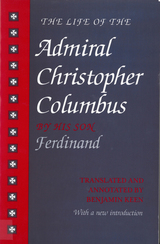 The Life of the Admiral Christopher Columbus: by his son Ferdinand
Keen, Benjamin
Rutgers University Press, 1959 This revised edition (originally published in 1959) of the famous biography of Columbus by his son Ferdinand was published to coincide with the Columbus quincentenary celebrations. Benjamin Keen's introduction traces the changing assessments of Columbus and his Discovery over almost five centuries, as reflected in the writings of historians, other social scientists, novelists, and poets, and shows how these assessments were influenced by varying political, social, and intellectual conditions. Keen has also revised his translation and notes to reflect new information and viewpoints. Ferdinand's book is a moving and personal document. Provoked in part by the Spanish Crown's attempts to diminish Columbus's role as discoverer, it reveals the restrained emotions of a loving son jealous of his father's honor. Ferdinand had access to all of his father's papers. At the age of thirteen, he accompanied Columbus on the last voyage and participated in many of the events he relates here. The narrative has the irresistible excitement of an adventure story: shipwreck, storms, and battles with mutineers or Indians. Ferdinand's imaginative insight into the many-faceted personality of the discoverer and his artistry with words make this biography, as Henry Vignaud has said, "the most important of our sources of information on the life of the discoverer of America." Benjamin Keen is Professor Emeritus of Latin American history at Northern Illinois University. He is the author of The Aztec Image in Western Thought (Rutgers University Press) and many other books.
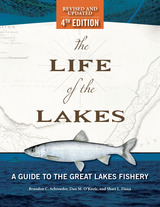 The Life of the Lakes, 4th Ed.: A Guide to the Great Lakes Fishery
Brandon C. Schroeder, Dan M. O'Keefe, and Shari L. Dann
University of Michigan Press, 2019 One of the Great Lakes region’s most precious natural resources is its fishery, with its intricate web of aquatic life, the environments it inhabits, and the people who use and enjoy these areas. The Great Lakes fishery supports not only an important commercial fishing industry but also tourism in eight different states and two countries, attracting millions of recreational anglers each year. As valuable as the fishery is, it is equally fragile. Since the 1950s, state, provincial, and federal agencies have coordinated efforts to manage the fishery and protect it from a range of threats, from the spread of invasive species to nutrient pollution to habitat destruction.
Now in its fourth edition, The Life of the Lakes examines the complex portrait of the Great Lakes fishery, including the history of the fishery’s exploitation and management, the current health of the Lakes, and the outlook for the future. Featuring more graphics, photos, and illustrations than ever, all printed in full color, the new edition of this engaging book is a perfect resource for general readers, teachers, and students looking for an easy-to-follow guide to the Great Lakes fishery. This book is published in collaboration with Michigan Sea Grant (www.michiganseagrant.org), a cooperative program of the University of Michigan and Michigan State University.
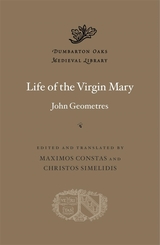 Life of the Virgin Mary
John Geometres
Harvard University Press, 2023 The first complete, modern translation of one of the most important Byzantine works of Marian doctrine and devotion.
John Geometres (ca. 935–ca. 1000) was one of the most highly esteemed poets and authors in Byzantium; yet his most important text, the Life of the Virgin Mary, remains largely unknown today. This literary and rhetorical masterpiece stands as a work of outstanding theological sophistication, animated by deeply felt devotion to the Mother of God. Geometres’s distinctive and idiosyncratic narrative offers a comprehensive biography, from Mary’s ancestry to her death and beyond, with special emphasis on her direction of Christ’s female disciples, her active participation in the passion and resurrection, and her leadership of the nascent Church. The Life has been rightly considered a critical missing piece in a larger puzzle connecting early Marian writings with later works. Based on a completely new edition of the Byzantine Greek text, this is the first complete translation of Life of the Virgin Mary into a modern language.
The Life of Washington
Mason L. Weems
Harvard University Press The effect of this “single, immortal, and dubious anecdote,” and others like it, has made this book one of the most influential in the history of American folklore. Originally published as an eighty-page pamphlet entitled The Life and Memorable Actions of George Washington, it quickly attained immense popularity. In 1806 a so-called fifth edition was published which contained for the first time the tale of George Washington and the cherry tree; the book has survived to this day, although largely on the basis of that episode. This volume follows the text of the ninth (1809) printing, which included all the famous anecdotes. This republication is unique in its detailed commentary on Mason Weems and other biographers of Washington.
 The Life of Yeasts: Second Edition, Revised and Enlarged
H. J. Phaff, M. W. Miller, and E. M. Mrak
Harvard University Press, 1978 Praised as "one of those rare scientific books that can be read both for pleasure and instruction" when it was first published, The Life of Yeasts now appears in a new edition incorporating the exciting developments of the last decade. Nowhere else is there an introduction to this complex group of organisms that is as succinct, clear, and useful. Reviewing the first edition in Nature, A. H. Cook welcomed it as a "simple but wide-ranging account of a field which for various reasons has hitherto mostly been described only in a few specialized texts or in many respects only piecemeal in original publications."
This book is written for the nonspecialist who wishes to understand the yeasts, but not necessarily to become an expert on them. The new edition covers recent and major advances in the morphology, physiology, genetics, and ecology of these organisms, which have long been important in commerce and medicine and are ever more studied in the laboratory as prototypical eukaryotes.
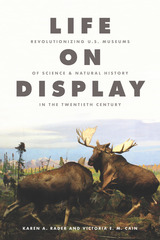 Life on Display: Revolutionizing U.S. Museums of Science and Natural History in the Twentieth Century
Karen A. Rader and Victoria E. M. Cain
University of Chicago Press, 2014 Rich with archival detail and compelling characters, Life on Display uses the history of biological exhibitions to analyze museums’ shifting roles in twentieth-century American science and society. Karen A. Rader and Victoria E. M. Cain chronicle profound changes in these exhibitions—and the institutions that housed them—between 1910 and 1990, ultimately offering new perspectives on the history of museums, science, and science education.
Rader and Cain explain why science and natural history museums began to welcome new audiences between the 1900s and the 1920s and chronicle the turmoil that resulted from the introduction of new kinds of biological displays. They describe how these displays of life changed dramatically once again in the 1930s and 1940s, as museums negotiated changing, often conflicting interests of scientists, educators, and visitors. The authors then reveal how museum staffs, facing intense public and scientific scrutiny, experimented with wildly different definitions of life science and life science education from the 1950s through the 1980s. The book concludes with a discussion of the influence that corporate sponsorship and blockbuster economics wielded over science and natural history museums in the century’s last decades.
A vivid, entertaining study of the ways science and natural history museums shaped and were shaped by understandings of science and public education in the twentieth-century United States, Life on Display will appeal to historians, sociologists, and ethnographers of American science and culture, as well as museum practitioners and general readers.
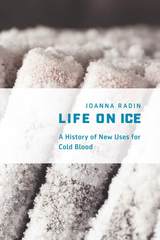 Life on Ice: A History of New Uses for Cold Blood
Joanna Radin
University of Chicago Press, 2017 After the atomic bombing at the end of World War II, anxieties about survival in the nuclear age led scientists to begin stockpiling and freezing hundreds of thousands of blood samples from indigenous communities around the world. These samples were believed to embody potentially invaluable biological information about genetic ancestry, evolution, microbes, and much more. Today, they persist in freezers as part of a global tissue-based infrastructure. In Life on Ice, Joanna Radin examines how and why these frozen blood samples shaped the practice known as biobanking.
The Cold War projects Radin tracks were meant to form an enduring total archive of indigenous blood before it was altered by the polluting forces of modernity. Freezing allowed that blood to act as a time-traveling resource. Radin explores the unique cultural and technical circumstances that created and gave momentum to the phenomenon of life on ice and shows how these preserved blood samples served as the building blocks for biomedicine at the dawn of the genomic age. In an era of vigorous ethical, legal, and cultural debates about genetic privacy and identity, Life on Ice reveals the larger picture—how we got here and the promises and problems involved with finding new uses for cold human blood samples.
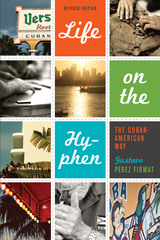 Life on the Hyphen: The Cuban-American Way
By Gustavo Pérez Firmat
University of Texas Press, 2012 An expanded, updated edition of the classic study of Cuban-American culture, this engaging book, which mixes the author’s own story with his reflections as a trained observer, explores how both famous and ordinary members of the “1.5 Generation” (Cubans who came to the United States as children or teens) have lived “life on the hyphen”—neither fully Cuban nor fully American, but a fertile hybrid of both. Offering an in-depth look at Cuban-Americans who have become icons of popular and literary culture—including Desi Arnaz, Oscar Hijuelos, musician Pérez Prado, and crossover pop star Gloria Estefan, as well as poets José Kozer and Orlando González Esteva, performers Willy Chirino and Carlos Oliva, painter Humberto Calzada, and others—Gustavo Pérez Firmat chronicles what it means to be Cuban in America. The first edition of Life on the Hyphen won the Eugene M. Kayden National University Press Book Award and received honorable mentions for the Modern Language Association’s Katherine Singer Kovacs Prize and the Latin American Studies Association’s Bryce Wood Book Award.
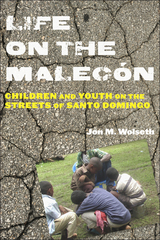 Life on the Malecón: Children and Youth on the Streets of Santo Domingo
Jon M. Wolseth
Rutgers University Press, 2013 Life on the Malecón is a narrative ethnography of the lives of street children and youth living in Santo Domingo, Dominican Republic, and the non-governmental organizations that provide social services for them. Writing from the perspective of an anthropologist working as a street educator with a child welfare organization, Jon M. Wolseth follows the intersecting lives of children, the institutions they come into contact with, and the relationships they have with each other, their families, and organization workers. Often socioeconomic conditions push these children to move from their homes to the streets, but sometimes they themselves may choose the allure of the perceived freedoms and opportunities that street life has to offer. What they find, instead, is violence, disease, and exploitation—the daily reality through which they learn to maneuver and survive. Wolseth describes the stresses, rewards, and failures of the organizations and educators who devote their resources to working with this population. The portrait of Santo Domingo’s street children and youth population that emerges is of a diverse community with variations that may be partly related to skin color, gender, and class. The conditions for these youth are changing as the economy of the Dominican Republic changes. Although the children at the core of this book live and sleep on avenues and plazas and in abandoned city buildings, they are not necessarily glue- and solvent-sniffing beggars or petty thieves on the margins of society. Instead, they hold a key position in the service sector of an economy centered on tourism. Life on the Malecón offers a window into the complex relationships children and youth construct in the course of mapping out their social environment. Using a child-centered approach, Wolseth focuses on the social lives of the children by relating the stories that they themselves tell as well as the activities he observes.
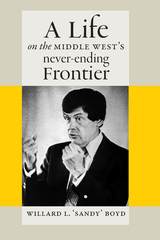 A Life on the Middle West's Never-Ending Frontier
Willard L. Boyd
University of Iowa Press, 2019 University of Iowa legend Willard L. “Sandy” Boyd is a proud middle westerner. His decades of service to the university began in 1954, when he arrived as a law professor. He later became president of the University of Iowa from 1969 to 1981, and led the school through times that were fraught not just for the university but for the country. During the intense polarization of the late sixties and early seventies, Sandy’s compassion and steady leadership ensured that dissent on campus would be honored and would not stop the university’s educational mission. He quickly became admired, not simply for his professional achievements but also for his personal integrity.
His memoir, interspersed with personal wisdom gleaned over more than six decades of service and leadership, encapsulates Sandy’s shrewd yet optimistic view of the public university as an institution. At every stage in his life—in the U.S. Navy during World War II, while practicing law or teaching, and in leadership positions at Chicago’s Field Museum and the University of Iowa— Sandy relied on his principles of open disclosure, inclusiveness, and respect for differences to guide him on issues that matter.
This chronicle of Sandy’s experiences throughout his life shows us the evolution both of the University of Iowa and of the nation writ large. More importantly, this book gives us a lens through which to examine our present situation, whether debating free speech on campus, the role of the arts and humanities in civil society, or the importance of funding for educational and cultural institutions.
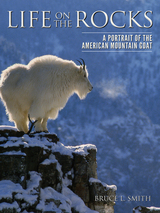 Life on the Rocks: A Portrait of the American Mountain Goat
Bruce L. Smith
University Press of Colorado, 2014 The American mountain goat is one of the most elusive and least familiar species of hoofed mammals in North America. Confined to the remote and rugged mountains of the western United States and Canada, these extraordinary mountaineers are seldom seen or encountered, even by those who patiently study them. Life on the Rocks offers an intimate portrayal of this remarkable animal through the eyes and lens of field biologist and photographer Bruce Smith. Color photographs and accounts of Smith's personal experiences living in Montana's Selway-Bitterroot Wilderness Area accompany descriptions of the American mountain goat's natural history. Smith explores their treacherous habitat, which spans the perilous cliffs and crags of the Rocky, Cascade, and Coast mountain ranges. The physical and behavioral adaptations of these alpine athletes enable them to survive a host of dangers, including six-month-long winters, scarce food sources, thunderous avalanches, social strife, and predators like wolves, bears, lions, wolverines, and eagles. Smith also details the challenges these animals face as their territory is threatened by expanding motorized access, industrial activities, and a warming climate. Life on the Rocks showcases the elegance and charm of this little-known creature, thriving in some of North America's harshest wilderness. Smith's volume will appeal to wildlife enthusiasts, wildland travelers, and conservationists interested in the future of the American mountain goat. 2014 National Outdoor Book Award winner: Nature & Environment and co-winner: Design and Artistic Merit
Life on the Texas Range
Photographs by Erwin E. SmithText by J. Evetts Haley
University of Texas Press, 1952 First published in 1953, this photographic record of the real life and work of cowboys remains a perennial favorite. Erwin E. Smith was the outstanding cowboy photographer of the West, and these eighty photographs were among those he chose for an exhibit of his best work at the 1936 Texas Centennial. The text by J. Evetts Haley, a noted historian of the range, skillfully complements Smith's visual record of a vanishing way of life.
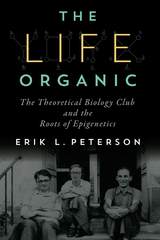 The Life Organic: The Theoretical Biology Club and the Roots of Epigenetics
Erik L. Peterson
University of Pittsburgh Press, 2016 As scientists debated the nature of life in the nineteenth century, two theories predominated: vitalism, which suggested that living things contained a “vital spark,” and mechanism, the idea that animals and humans differed from nonliving things only in their degree of complexity. Erik Peterson tells the forgotten story of the pursuit of a “third way’ in biology, known by many names, including “the organic philosophy,” which gave rise to C. H. Waddington’s work in the subfield of epigenetics: an alternative to standard genetics and evolutionary biology that captured the attention of notable scientists from Francis Crick to Stephen Jay Gould. The Life Organic chronicles the influential biologists, mathematicians, philosophers, and biochemists from both sides of the Atlantic who formed Joseph Needham’s Theoretical Biology Club, defined and refined “third way” thinking through the 1930s, and laid the groundwork for some of the most cutting-edge achievements in biology today. By tracing the persistence of organicism into the twenty-first century, this book also raises significant questions about how we should model the development of the discipline of biology going forward.
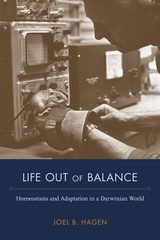 Life Out of Balance: Homeostasis and Adaptation in a Darwinian World
Joel B. Hagen
University of Alabama Press, 2021 Traces historical developments in scientific conceptions of physiology, ecology, behavior, and evolutionary biology during the mid-twentieth century
Life Out of Balance focuses on a period in history when new ideas of self-regulation, adaptation, and fitness became central to a variety of biological disciplines. During the decades surrounding World War II, these ideas developed in several quite different contexts and led to greater debates about the merits of such models as applied to larger systems, including society at large. Particularly in its later cybernetic form, homeostasis seemed to provide new ways of discussing balance and regulation that avoided discredited approaches of earlier champions of vitalism and mechanism. It provided a common perspective and terminology for discussing self-regulating “systems,” whether biological, mechanical, or social. Although enormously fruitful and influential, homeostatic perspectives also generated numerous controversies when critics questioned the degree to which biological systems are characterized by balance and self-regulation. Resolving these controversies continues to be a challenge in modern biology.
If natural selection constitutes the first law of biology, scientists who champion homeostasis as a theoretical model claim that it is a second law, equally important and closely related to the first. Such claims notwithstanding, homeostasis has generated a series of controversies since it was formalized by Walter Cannon in the late 1920s. Critics contended that Cannon took a too-optimistic view of life, not only ignoring pathological deviations from normality but also failing to adequately explain the ability of living things to respond adaptively to environmental challenges.
Underlying these controversies was the unresolved problem of integrating physiology and other areas of functional biology with the emerging evolutionary synthesis of Mendelian genetics and Darwinian natural selection. The physiological idea of homeostasis as the adaptive “fit” between the organism and its environment and the Darwinian idea of adaptation and fitness in terms of reproductive success might seem to be complementary in an unproblematic way, but historically they have had an uneasy relationship.
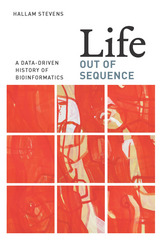 Life Out of Sequence: A Data-Driven History of Bioinformatics
Hallam Stevens
University of Chicago Press, 2013 Thirty years ago, the most likely place to find a biologist was standing at a laboratory bench, peering down a microscope, surrounded by flasks of chemicals and petri dishes full of bacteria. Today, you are just as likely to find him or her in a room that looks more like an office, poring over lines of code on computer screens. The use of computers in biology has radically transformed who biologists are, what they do, and how they understand life. In Life Out of Sequence, Hallam Stevens looks inside this new landscape of digital scientific work. Stevens chronicles the emergence of bioinformatics—the mode of working across and between biology, computing, mathematics, and statistics—from the 1960s to the present, seeking to understand how knowledge about life is made in and through virtual spaces. He shows how scientific data moves from living organisms into DNA sequencing machines, through software, and into databases, images, and scientific publications. What he reveals is a biology very different from the one of predigital days: a biology that includes not only biologists but also highly interdisciplinary teams of managers and workers; a biology that is more centered on DNA sequencing, but one that understands sequence in terms of dynamic cascades and highly interconnected networks. Life Out of Sequence thus offers the computational biology community welcome context for their own work while also giving the public a frontline perspective of what is going on in this rapidly changing field.
Life Pig
Alan Shapiro
University of Chicago Press, 2016 From Let Me Hear You
Outside is inside now.
The pyramid whose point
we are is weightless
and invisible
and has become itself the night
in which alone
together
on a high plateau
we go on shouting
out whatever name
those winds keep blowing back
into the mouth that’s shouting it.
Alan Shapiro’s newest book of poetry is situated at the intersection between private and public history, as well as individual life and the collective life of middle-class America in the twentieth and twenty-first centuries. Whether writing about an aged and dying parent or remembering incidents from childhood and adolescence, Shapiro attends to the world in ways that are as deeply personal as they are recognizable and freshly social—both timeless and utterly of this particular moment.
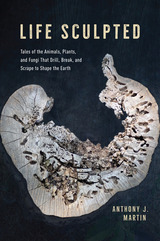 Life Sculpted: Tales of the Animals, Plants, and Fungi That Drill, Break, and Scrape to Shape the Earth
Anthony J. Martin
University of Chicago Press, 2023 "There is much to love between this book’s covers. . . . There are many eureka moments in Life Sculpted—and some truly beautiful ones."—Eugenia Bone, Wall Street Journal
Meet the menagerie of lifeforms that dig, crunch, bore, and otherwise reshape our planet.
Did you know elephants dig ballroom-sized caves alongside volcanoes? Or that parrotfish chew coral reefs and poop sandy beaches? Or that our planet once hosted a five-ton dinosaur-crunching alligator cousin? In fact, almost since its fascinating start, life was boring. Billions of years ago bacteria, algae, and fungi began breaking down rocks in oceans, a role they still perform today. About a half-billion years ago, animal ancestors began drilling, scraping, gnawing, or breaking rocky seascapes. In turn, their descendants crunched through the materials of life itself—shells, wood, and bones. Today, such “bioeroders” continue to shape our planet—from the bacteria that devour our teeth to the mighty moon snail, always hunting for food, as evidenced by tiny snail-made boreholes in clams and other moon snails.
There is no better guide to these lifeforms than Anthony J. Martin, a popular science author, paleontologist, and co-discoverer of the first known burrowing dinosaur. Following the crumbs of lichens, sponges, worms, clams, snails, octopi, barnacles, sea urchins, termites, beetles, fishes, dinosaurs, crocodilians, birds, elephants, and (of course) humans, Life Sculpted reveals how bioerosion expanded with the tree of life, becoming an essential part of how ecosystems function while reshaping the face of our planet. With vast knowledge and no small amount of whimsy, Martin uses paleontology, biology, and geology to reveal the awesome power of life’s chewing force. He provokes us to think deeply about the past and present of bioerosion, while also considering how knowledge of this history might aid us in mitigating and adapting to climate change in the future. Yes, Martin concedes, sometimes life can be hard—but life also makes everything less hard every day.
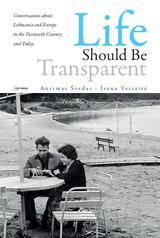 Life should be Transparent: Conversations about Lithuania and Europe in the Twentieth Century and Today
Aurimas Svedas
Central European University Press, 2020 This book of thirteen conversations introduces us to the life of an exceptional person—theatre critic, Germanist, and long-time chair of the Open Lithuania Fund board—Irena Veisaitė. The dialogue between Lithuanian historian Aurimas Švedas and a woman who reflects deeply on her experiences reveals both one individual’s historically dramatic life and the fate of Europe and Lithuania in the twentieth century. Through the complementary lenses of history and memory, we confront with Veisaitė the horrific events of the Holocaust, which brought about the end of the Lithuanian Jewish world. We also meet an array of world-class cultural figures, see fragments of legendary theatre performances, and hear meaningful words that were spoken or heard decades ago. This book’s interlocutors do not so much seek to answer the question “What was it like?” but instead repeatedly ask each other: “What, how, and why do we remember? What is the meaning of our experiences? How can history help us to live in the present and create the future? How do we learn to understand and forgive?” A series of Veisaitė’s texts, statements, and letters, presented at the end of the book suggest further ways of answering these questions.
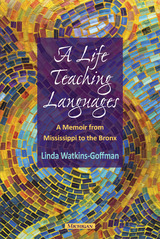 A Life Teaching Languages: A Memoir from Mississippi to the Bronx
Linda Watkins-Goffman
University of Michigan Press, 2015 Everyone faces crossroads. While not everyone meets at the same crossroads, we all juggle multiple identities. It is these roles--sometimes conflicting and other times fitting together seamlessly--that Linda Watkins-Goffman explores in A Life Teaching Languages: A Memoir from Mississippi to the Bronx.
In this memoir of an educator, Watkins-Goffman offers insights she has gained from her years of traveling, teaching, and writing and shares how her experiences have shaped her teaching philosophy. According to Watkins-Goffman, teachers must communicate authentically to teach effectively and, to accomplish this, they must connect their own experiences in some way with those of their students. The stories she tells are sure to resonate with pre-service and practicing teachers alike. Her reflections about her own experiences will be useful to readers who plan to become ESL educators, or those who simply seek inspiration about teaching.
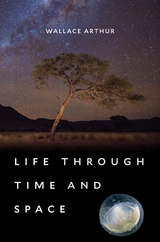 Life through Time and Space
Wallace Arthur
Harvard University Press, 2017 All humans share three origins: the beginning of our individual lives, the appearance of life on Earth, and the formation of our planetary home. Life through Time and Space brings together the latest discoveries in both biology and astronomy to examine our deepest questions about where we came from, where we are going, and whether we are alone in the cosmos.
A distinctive voice in the growing field of astrobiology, Wallace Arthur combines embryological, evolutionary, and cosmological perspectives to tell the story of life on Earth and its potential to exist elsewhere in the universe. He guides us on a journey through the myriad events that started with the big bang and led to the universe we inhabit today. Along the way, readers learn about the evolution of life from a primordial soup of organic molecules to complex plants and animals, about Earth’s geological transformation from barren rock to diverse ecosystems, and about human development from embryo to infant to adult. Arthur looks closely at the history of mass extinctions and the prospects for humanity’s future on our precious planet.
Do intelligent aliens exist on a distant planet in the Milky Way, sharing the three origins that characterize all life on Earth? In addressing this question, Life through Time and Space tackles the many riddles of our place and fate in the universe that have intrigued human beings since they first gazed in wonder at the nighttime sky.
A Life under Russian Serfdom: The Memoirs of Savva Dmitrievich Purlevskii, 1800–68
Boris B. Gorshkov
Central European University Press, 2005 This is a translation of one of very few Russian serfs' memoirs. Savva Purlevskii recollects his life in Russian serfdom and life of his grandparents, parents, and fellow villagers. He describes family and communal life and the serfs' daily interaction with landlords and authorities. Purlevskii came from an initially prosperous family that later became impoverished. Early in his childhood, he lost his father. Purlevskii did not have a chance to gain a formal education. He lived under serfdom until 1831 when at the age of 30 he escaped his servitude.Gorshkov's introduction provides some basic knowledge about Russian serfdom and draws upon the most recent scholarship. Notes provide references and general information about events, places and people mentioned in the memoirs.
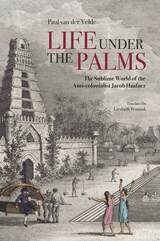 Life Under the Palms: The Sublime World of the Anti-colonialist Jacob Haafner
Paul van der Velde
National University of Singapore Press, 2019 Jacob Gotfried Haafner (1754–1809) was one of the most popular European travel writers of the early nineteenth century, writing in the Romantic mode. A Dutch citizen, Haafner spent more than twenty years of his early life living outside of Europe, in India, Ceylon, Mauritius, Java, and South Africa. Books like his popular Travels in a Palanquin were translated into the major European languages, and his essays against the work of Christian missionaries in Asia stirred up great controversy. Haafner worked to spread understanding of the cultures he’d come to know in his journeys, promoting European understanding of Indian literature, myth, and religion, translating the Ramayana into Dutch.
With the help of generous excerpts from Haafner's own writings, including material newly translated into English, Paul van der Velde tells an affecting story of a young man who made a world for himself along the Coromandel Coast, in Ceylon and Calcutta, but who returned to Europe to live the last years of his life in Amsterdam, suffering an acute nostalgia for Asia. This will be compelling reading for anyone interested in European response to the cultures of Asia.
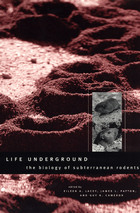 Life Underground: The Biology of Subterranean Rodents
Edited by Eileen A. Lacey, James L. Patton, and Guy N. Cameron
University of Chicago Press, 2000 Many mammals like to dig in the dirt, but few call it home. Those that do, such as mole-rats, zokors, and tuco-tucos, have developed novel adaptations to their subterranean life, including bones and muscles modified for efficient digging and ways to "see" underground without using their eyes. These unusual traits, adopted independently by unrelated groups around the world, also make subterranean rodents fascinating subjects for biologists.
Life Underground provides the first comprehensive review of the biology of subterranean rodents. Arranged by topic rather than by taxon to facilitate cross-species comparisons, chapters cover such subjects as morphology, physiology, social behavior, genetic variation, and evolutionary diversification. Two main questions run throughout the book. First, to what extent has subterranean life shaped the biology of these animals, leading to similar adaptations among otherwise dissimilar species? Second, how have the distinct evolutionary histories of these groups led to different solutions to the challenges posed by life underground?
 Life Undocumented: Latinx Youth Navigating Place and Belonging
Edelina M. Burciaga
University of Arizona Press, 2025 Life Undocumented captures the compelling stories of Latinx undocumented young adults growing up and living in two distinct sociopolitical contexts: California, which provides legal pathways into higher education for undocumented youth, and Georgia, which does not.
The book is about how undocumented young adults in these two contexts navigate the pathway to and through adulthood, and the powerful role state laws and policies play in shaping their prospects for social mobility and their sense of belonging. Edelina M. Burciaga examines how state laws and policies in California and Georgia shape the pathways to adulthood for these individuals. California, with its supportive legal frameworks, contrasts sharply with Georgia’s restrictive environment, highlighting the significant impact of state-level immigration policies.
The book highlights the complexities and contradictions that emerge from these distinct legal ecologies, which include the intersections of federal, state, local, familial, and individual dynamics, and shape the daily lives and future orientations of undocumented young adults. This book underscores the resilience and agency of undocumented youth as they confront and resist the structural constraints imposed by immigration laws, offering a vivid portrayal of their emotional and social journeys. This book is a vital resource for anyone committed to creating equitable and inclusive systems for undocumented students.
Life with a Star
Jiri Weil
Northwestern University Press, 1998 In Nazi-occupied Prague, ex-bank clerk Josef Roubick discovers that the prosaic world he has always inhabited is suddenly off-limits to him because he is a Jew. When he begins to observe his new, increasingly skewed, and macabre environment with resigned detachment, his life becomes centered on survival and on the surprisingly small things he clings to in order to persevere.
 Life with AIDS
Rose Weitz
Rutgers University Press, 1991 Rose Weitz presents a holistic picture of the experiences of people with HIV disease, using their own words and focusing on the issues that they consider important. Her information comes from in-depth interviews with women and men who have HIV disease--from those who are asymptomatic but infected to those who have full-blown AIDS--and from interviews with doctors who treat persons with HIV disease.
Weitz describes how these people are affected by and respond to the changes in their bodies and their social relationships, from the time when they realize that they are at risk of infection to the time when death approaches. It covers such issues as how individuals obtain diagnoses, develop their initial ideas about what the future will bring, and come to terms with their impending deaths. To put this into a broader context, she also explores the moral status of illness in general and looks at why some illnesses, including HIV disease, have become especially stigmatized.
The author also explores how doctors are affected by and cope with the unique pressures of treating persons with HIV disease. The concluding chapter theorizes about how changes in the social construction, demographic distribution, and treatment of HIV disease are changing the lives of people with AIDS.
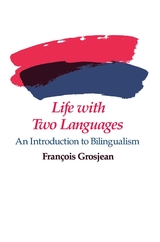 Life with Two Languages: An Introduction to Bilingualism
François Grosjean
Harvard University Press, 1982 Many people consider bilinguals to be exceptional, yet almost half the world’s population speaks more than one language. Bilingualism is found in every country of the world, in every class of society, in all age groups. Life with Two Languages is the first book to provide a complete and authoritative look at the nature of the bilingual experience. François Grosjean, himself a bilingual, covers the topic from each of its many angles in order to provide a balanced introduction to this fascinating phenomenon.
Grosjean discusses the political and social situations that arise when languages come into contact and the policies nations have established toward their linguistic minorities in the domains of education and governance. Of particular interest is his detailed account of the psychological and social factors that lead a bilingual to choose one of her languages when speaking to another bilingual or to use both languages in the fascinating phenomenon of code-switching. The author explains how children become bilingual as quickly as they become monolingual, describes the organization of languages in the bilingual brain, and examines the legacy of bilingualism on language, as exemplified in word borrowings.
Above all, Life with Two Languages puts the emphasis on the bilingual person. In a series of first-hand reports scattered throughout the book, bilinguals tell what it is like to live with two languages and describe the educational and social experiences they have undergone.
Written in a clear and informative style, Life with Two Languages will appeal to professionals and students in linguistics, education, sociology, and psychology, as well as to the more casually curious.
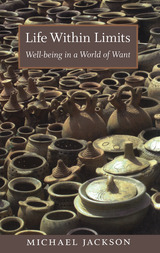 Life Within Limits: Well-being in a World of Want
Michael Jackson
Duke University Press, 2011 The sense that well-being remains elusive, transitory, and unevenly distributed is felt by the rich as well as the poor, and in all societies. To explore this condition of existential dissatisfaction, the anthropologist Michael Jackson traveled to Sierra Leone, described in a recent UN report as the “least livable” country in the world. There he revisited the village where he did his first ethnographic fieldwork in 1969–70 and lived in 1979. Jackson writes that Africans have always faced forces from without that imperil their lives and livelihoods. Though these forces have assumed different forms at different times—slave raiding, warfare, epidemic illness, colonial domination, state interference, economic exploitation, and corrupt government—they are subject to the same mix of magical and practical reactions that affluent Westerners deploy against terrorist threats, illegal immigration, market collapse, and economic recession. Both the problem of well-being and the question of what makes life worthwhile are grounded in the mystery of existential discontent—the question as to why human beings, regardless of their external circumstances, are haunted by a sense of insufficiency and loss. While philosophers have often asked the most searching questions regarding the human condition, Jackson suggests that ethnographic method offers one of the most edifying ways of actually exploring those questions.
Life without Father: Compelling New Evidence That Fatherhood and Marriage Are Indispensable for the Good of Children and Society
David Popenoe
Harvard University Press The American family is changing. Divorce, single parents, and stepfamilies are redefining the way we live together and raise our children. Is this a change for the worse? David Popenoe sets out the case for fatherhood and the two-parent family as the best arrangement for ensuring the well-being and future development of children.
His argument has two critical assumptions, which he supports with evidence from a variety of disciplines, including anthropology, biology, and history. The first is that children flourish best when raised by a father and a mother with their differing psychological and behavioral traits. The second is that marriage, which serves to hold fathers to the mother-child bond, is an institution we must strengthen if the decline of fatherhood is to be reversed.
 Life Without Money: Building Fair and Sustainable Economies
Edited by Anitra Nelson and Frans Timmerman
Pluto Press, 2011 The money-based global economy is failing. The credit crunch undermined capitalism's ability to ensure rising incomes and prosperity while market-led attempts to combat climate change are fought tooth and nail by business as environmental crises continue.
We urgently need to combat those who say 'there is no alternative' to the current system, but what would an alternative look like? The contributors to Life Without Money argue that it is time radical, non-market models were taken seriously. The book brings together diverse voices presenting strong arguments against our money-based system's ability to improve lives and prevent environmental disaster. Crucially, it provides a direct strategy for undercutting capitalism by refusing to deal in money, and offers money-free models of governance and collective sufficiency.
Life Without Money is written by high-profile activist scholars, including Harry Cleaver, Ariel Salleh and John O'Neill, making it an excellent text for political economy and environmental courses, as well as an inspiring manifesto for those who want to take action.
Life, Work, and Rebellion in the Coal Fields: The Southern West Virginia Miners, 1880-1922 2nd Edition
David Corbin
West Virginia University Press, 2015 Between 1880 and 1922, the coal fields of southern West Virginia witnessed two bloody and protracted strikes, the formation of two competing unions, and the largest armed conflict in American labor history—a week-long battle between 20,000 coal miners and 5,000 state police, deputy sheriffs, and mine guards. These events resulted in an untold number of deaths, indictments of over 550 coal miners for insurrection and treason, and four declarations of martial law. Corbin argues that these violent events were collective and militant acts of aggression interconnected and conditioned by decades of oppression. His study goes a long way toward breaking down the old stereotypes of Appalachian and coal mining culture. This second edition contains a new preface and afterword by author David A. Corbin.
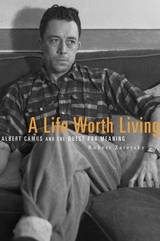 A Life Worth Living: Albert Camus and the Quest for Meaning
Robert Zaretsky
Harvard University Press, 2013 In his Nobel Prize acceptance speech, Albert Camus declared that a writer's duty is twofold: "the refusal to lie about what one knows and the resistance against oppression." These twin obsessions help explain something of Camus' remarkable character, which is the overarching subject of this sympathetic and lively book. Through an exploration of themes that preoccupied Camus--absurdity, silence, revolt, fidelity, and moderation--Robert Zaretsky portrays a moralist who refused to be fooled by the nobler names we assign to our actions, and who pushed himself, and those about him, to challenge the status quo.
Though we do not face the same dangers that threatened Europe when Camus wrote The Myth of Sisyphus and The Stranger, we confront other alarms. Herein lies Camus' abiding significance. Reading his work, we become more thoughtful observers of our own lives. For Camus, rebellion is an eternal human condition, a timeless struggle against injustice that makes life worth living. But rebellion is also bounded by self-imposed constraints--it is a noble if impossible ideal. Such a contradiction suggests that if there is no reason for hope, there is also no occasion for despair--a sentiment perhaps better suited for the ancient tragedians than modern political theorists but one whose wisdom abides. Yet we must not venerate suffering, Camus cautions: the world's beauty demands our attention no less than life's train of injustices. That recognition permits him to declare: "It was the middle of winter, I finally realized that, within me, summer was inextinguishable."
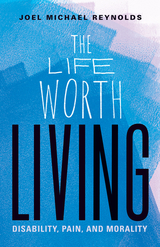 The Life Worth Living: Disability, Pain, and Morality
Joel Michael Reynolds
University of Minnesota Press, 2022 A philosophical challenge to the ableist conflation of disability and pain More than 2,000 years ago, Aristotle said: “let there be a law that no deformed child shall live.” This idea is alive and well today. During the past century, Supreme Court Justice Oliver Wendell Holmes Jr. argued that the United States can forcibly sterilize intellectually disabled women and philosopher Peter Singer argued for the right of parents to euthanize certain cognitively disabled infants. The Life Worth Living explores how and why such arguments persist by investigating the exclusion of and discrimination against disabled people across the history of Western moral philosophy. Joel Michael Reynolds argues that this history demonstrates a fundamental mischaracterization of the meaning of disability, thanks to the conflation of lived experiences of disability with those of pain and suffering. Building on decades of activism and scholarship in the field, Reynolds shows how longstanding views of disability are misguided and unjust, and he lays out a vision of what an anti-ableist moral future requires. The Life Worth Living is the first sustained examination of disability through the lens of the history of moral philosophy and phenomenology, and it demonstrates how lived experiences of disability demand a far richer account of human flourishing, embodiment, community, and politics in philosophical inquiry and beyond. Accessibility features: Retail e-book files for this title are screen-reader friendly with images accompanied by short alt text and/or extended descriptions.
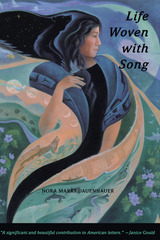 Life Woven with Song
Nora Marks Dauenhauer
University of Arizona Press, 2000 The Tlingit Indians of southeastern Alaska are known for their totem poles, Chilkat blankets, and ocean-going canoes. Nora Marks Dauenhauer is a cultural emissary of her people and now tells the story of her own life within the context of her community's. Life Woven with Song re-creates in written language the oral tradition of the Tlingit people as it records memories of Dauenhauer's heritage--of older relatives and Tlingit elders, of trolling for salmon and preparing food in the dryfish camps, of making a living by working in canneries. She explores these recurring themes of food and land, salmon and rainforest, from changing perspectives--as a child, a mother, and a grandmother--and through a variety of literary forms.
In prose, Dauenhauer presents stories such as "Egg Boat"--the tale of a twelve-year-old girl fishing the North Pacific for the first time alone--and an autobiographical piece that reveals much about Tlingit lifeways. Then in a section of short lyrical poems she offers crystalline tributes to her land and people. In a concluding selection of plays, Dauenhauer presents three Raven stories that were adapted as stage plays from oral versions told in Tlingit by three storytellers of her community. These plays were commissioned by the Naa Kahidi Theater and have been performed throughout America and Europe. They take the form of a storyteller delivering a narrative while other members of the cast act and dance in masks and costumes.
Collectively, Dauenhauer's writings form an "autoethnography," offering new insight into how the Tlingit have been affected by modernization and how Native American culture perseveres in the face of change. Despite the hardships her people have seen, this woman affirms the goodness of life as found in family and community, in daily work and play, and in tribal traditions.
Life Writing in the Long Run: A Smith and Watson Autobiography Studies Reader
Sidonie Smith and Julia Watson
Michigan Publishing, 2016 Life Writing in the Long Run gathers twenty-one essays by Sidonie Smith and Julia Watson written in collaboration or solo and published over the last quarter-century. It includes the introductions to their five edited collections; essays focused on such autobiographical genres as autoethnography, Bildungsroman, diary, digital life writing, genealogy, graphic memoir, human rights witnessing, manifesto; and essays engaging the key concepts of authenticity, performativity, postcoloniality, relationality, and visuality.
Available in print, eBook, and open access versions, this collection captures decades of exciting developments in the field, making it indispensable reading for courses on modes and media of self-presentation in cultural, gender, and literary studies and feminist theory.
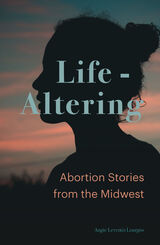 Life-Altering: Abortion Stories from the Midwest
Angie Leventis Lourgos
University of Missouri Press, 2023 The demise of Roe v. Wade dramatically altered abortion access across the United States, igniting a new era of polarization over reproductive rights as roughly half of all states moved to ban or significantly restrict terminating a pregnancy. Yet even before the U.S. Supreme Court case Dobbs v. Jackson Women’s Health Organization eliminated the constitutional right to an abortion on June 24, 2022, people across large swaths of the country were already facing enormous obstacles to ending a pregnancy, including mandatory waiting periods, early gestational limits, and a dearth of abortion providers. Life-Altering: Abortion Stories from the Midwest shares the narratives of women who have terminated pregnancies, despite these barriers, chronicling how laws and court cases can shape the lives and reproductive decisions of individuals.
Based on her coverage of reproductive rights for the Chicago Tribune, veteran journalist Angie Leventis Lourgos explores these personal accounts to delve into the most nuanced aspects of abortion, from life-threatening cases to terminations later in gestation to restrictions for minors. The reporting spans the time before Roe and continues through the first year after the landmark Supreme Court case’s stunning reversal, which spurred some of the most stringent abortion laws of the past half-century—as well as new and innovative means of access.
From interviews Lourgos conducted with women across the Midwest, Life-Altering examines different facets of abortion from the perspectives of those who ended their pregnancies, illustrating how court cases, state legislation, and religious beliefs can affect the lives and reproductive choices of ordinary people. By looking at myriad factors that influence the decision whether or not to abort a pregnancy— be they socio-economic, religious, legal, or medical—the accounts collected in this volume challenge the conventional labels of “pro-life” and “pro-choice .”
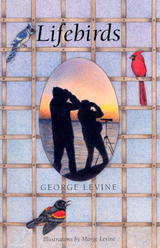 Lifebirds
Levine, George
Rutgers University Press, 1995 In the tradition of Annie Dillard, this book is a set of meditations on nature, in this case specifically on the way birds and birding are entangled with life, with work, family, and friends. While it delicately narrates loving engagement with birds, it is not a field guide. Its author is a birder, not a professional ornithologist. Although the book does in fact offer a surprising amount of detail about birds, it is primarily a consideration of the experience and human significance of seeing birds, rather than of the birds in themselves as objects of systematic study. It attempts to convey something of the extraordinary variety and excitement of birding, the complications and subtleties of bird identification, the implication of birding in the imagination and the world against which it is usually defined.
While one doesn’t have to be interested in birds to read it with pleasure, it attempts to seduce the reader into the birding experience through a series of autobiographical memoirs with birds at their center. It is not meant for experts, except as experts might be interested in how a journeyman experiences their more significantly constructed world. In the end the book is about a lot more than birds. It is about “lifebirds,” with all the many meanings that word might seem to imply.
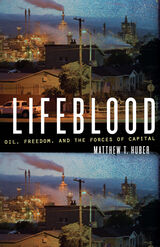 Lifeblood: Oil, Freedom, and the Forces of Capital
Matthew T. Huber
University of Minnesota Press, 2013 If our oil addiction is so bad for us, why don’t we kick the habit? Looking beyond the usual culprits—Big Oil, petro-states, and the strategists of empire—Lifeblood finds a deeper and more complex explanation in everyday practices of oil consumption in American culture. Those practices, Matthew T. Huber suggests, have in fact been instrumental in shaping the broader cultural politics of American capitalism. How did gasoline and countless other petroleum products become so central to our notions of the American way of life? Huber traces the answer from the 1930s through the oil shocks of the 1970s to our present predicament, revealing that oil’s role in defining popular culture extends far beyond material connections between oil, suburbia, and automobility. He shows how oil powered a cultural politics of entrepreneurial life—the very American idea that life itself is a product of individual entrepreneurial capacities. In so doing he uses oil to retell American political history from the triumph of New Deal liberalism to the rise of the New Right, from oil’s celebration as the lifeblood of postwar capitalism to increasing anxieties over oil addiction. Lifeblood rethinks debates surrounding energy and capitalism, neoliberalism and nature, and the importance of suburbanization in the rightward shift in American politics. Today, Huber tells us, as crises attributable to oil intensify, a populist clamoring for cheap energy has less to do with American excess than with the eroding conditions of life under neoliberalism.
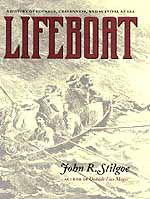 Lifeboat
John R. Stilgoe
University of Virginia Press, 2003 The fire extinguisher; the airline safety card; the lifeboat. Until September 11, 2001, most Americans paid homage to these appurtenances of disaster with a sidelong glance, if at all. But John Stilgoe has been thinking about lifeboats ever since he listened with his father as the kitchen radio announced that the liner Lakonia had caught fire and sunk in the Atlantic. It was Christmas 1963, and airline travel and Cold War paranoia had made the images of an ocean liner's distress--the air force dropping supplies in the dark, a freighter collecting survivors from lifeboats--seem like echoes of a bygone era.
But Stilgoe, already a passionate reader and an aficionado of small-boat navigation, began to delve into accounts of other disasters at sea. What he found was a trunkful of hair-raising stories--of shipwreck, salvation, seamanship brilliant and inept, noble sacrifice, insanity, cannibalism, courage and cravenness, even scandal. In nonfiction accounts and in the works of Conrad, Melville, and Tomlinson, fear and survival animate and degrade human nature, in the microcosm of an open boat as in society at large.
How lifeboats are made, rigged, and captained, Stilgoe discovered, and how accounts of their use or misuse are put down, says much about the culture and circumstances from which they are launched. In the hands of a skillful historian such as Stilgoe, the lifeboat becomes a symbol of human optimism, of engineering ingenuity, of bureaucratic regulation, of fear and frailty. Woven through Lifeboat are good old-fashioned yarns, thrilling tales of adventure that will quicken the pulse of readers who have enjoyed the novels of Patrick O'Brian, Crabwalk by Günter Grass, or works of nonfiction such as The Perfect Storm and In the Heart of the Sea. But Stilgoe, whose other works have plumbed suburban culture, locomotives, and the shore, is ultimately after bigger fish. Through the humble, much-ignored lifeboat, its design and navigation and the throes of its ultimate purpose, he has found a peculiar lens on roughly the past two centuries of human history, particularly the war-tossed, technology-driven history of man and the sea.
--------------------------------------------------------------------------------
John Stilgoe, Robert and Lois Orchard Professor in the History of Landscape at Harvard University, is the author of numerous books, including Borderland, Metropolitan Corridor, and most recently, Outside Lies Magic and Alongshore. He lives on the coast of Massachusetts, where he sails a ship's lifeboat from Newfoundland, built in 1935.
 Lifebuoy Men, Lux Women: Commodification, Consumption, and Cleanliness in Modern Zimbabwe
Timothy Burke
Duke University Press, 1996 How do people come to need products they never even knew they wanted? How, for example, did indigenous Zimbabweans of the 1940s begin to believe that they required Lifebuoy soap? Offering a glimpse into the intimate workings of modern colonialism and global capitalism, Timothy Burke takes up these questions in Lifebuoy Men, Lux Women, a study of post-World War II commodity culture in Zimbabwe.
With particular attention to cosmetic products and the contrast between colonial and pre-colonial ideas of cleanliness, Burke examines the role played by commodity culture, changing patterns of consumption, and the spread of advertising in the making of modern Zimbabwe. His work combines history, anthropology, and political economy to show how the development of commodification in the region relates to the social history of hygiene. Within this framework, and drawing on a wide variety of historical sources, Burke explores dense interactions between commodity culture and embodied aspects of race, gender, sexuality, domesticity, health, and aesthetics in a colonial society. Rather than viewing the production of needs simply as an imposition from above, Lifebuoy Men, Lux Women shows what heterogeneous and complex processes, involving the aims and histories of both colonizers and colonized, produced these changes in Zimbabwean society.
Integrating political economy, cultural studies, and a wide range of the social sciences, Lifebuoy Men, Lux Women will find readers among scholars of colonialism, African history, and ethnography as well those for whom the problem of commodification is a significant theoretical issue.
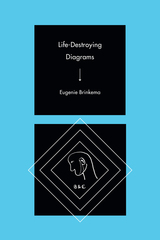 Life-Destroying Diagrams
Eugenie Brinkema
Duke University Press, 2021 In Life-Destroying Diagrams, Eugenie Brinkema brings the insights of her radical formalism to bear on supremely risky terrain: the ethical extremes of horror and love. Through close readings of works of film, literature, and philosophy, she explores how diagrams, grids, charts, lists, abecedaria, toroids, tempos, patterns, colors, negative space, lengths, increments, and thresholds attest to formal logics of torture and cruelty, violence and finitude, friendship and eros, debt and care. Beginning with a wholesale rethinking of the affect of horror, orienting it away from entrenched models of feeling toward impersonal schemes and structures, Brinkema moves outward to consider the relation between objects and affects, humiliation and metaphysics, genre and the general, bodily destruction and aesthetic generation, geometry and scenography, hatred and value, love and measurement, and, ultimately, the tensions, hazards, and speculative promise of formalism itself. Replete with etymological meditations, performative typography, and lyrical digressions, Life-Destroying Diagrams is at once a model of reading without guarantee and a series of generative experiments in the writing of aesthetic theory.
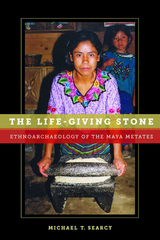 The Life-Giving Stone: Ethnoarchaeology of Maya Metates
Michael T. Searcy
University of Arizona Press, 2011 In The Life-Giving Stone, Michael Searcy provides a thought-provoking ethnoarchaeological account of metate and mano manufacture, marketing, and use among Guatemalan Maya for whom these stone implements are still essential equipment in everyday life and diet.
Although many archaeologists have regarded these artifacts simply as common everyday tools and therefore unremarkable, Searcy’s methodology reveals how, for the ancient Maya, the manufacture and use of grinding stones significantly impacted their physical and economic welfare. In tracing the life cycle of these tools from production to discard for the modern Maya, Searcy discovers rich customs and traditions that indicate how metates and manos have continued to sustain life—not just literally, in terms of food, but also in terms of culture. His research is based on two years of fieldwork among three Mayan groups, in which he documented behaviors associated with these tools during their procurement, production, acquisition, use, discard, and re-use.
Searcy’s investigation documents traditional practices that are rapidly being lost or dramatically modified. In few instances will it be possible in the future to observe metates and manos as central elements in household provisioning or follow their path from hand-manufacture to market distribution and to intergenerational transmission. In this careful inquiry into the cultural significance of a simple tool, Searcy’s ethnographic observations are guided both by an interest in how grinding stone traditions have persisted and how they are changing today, and by the goal of enhancing the archaeological interpretation of these stones, which were so fundamental to pre-Hispanic agriculturalists with corn-based cuisines.
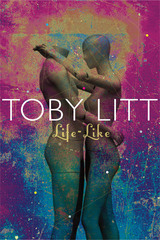 Life-Like
Toby Litt
Seagull Books, 2014 Emotionally compelling and formally innovative, Life-Like is Toby Litt’s most ambitious collection of short stories to date, bringing to fruition themes first aired in his previous books, Adventures in Capitalism, Exhibitionism, and I Play the Drums in a Band Called Okay. Life-Like is a book about our globalizing and atomizing world—with stories set in India, Sweden, Australia, and Iran—that also looks at how we meet and fail to meet and what connects us to one another, as well as waste and communication, and, in turn, communication through waste.
The twenty-six stories begin with Paddy and Agatha, an English couple last seen in Litt’s Ghost Story. Following the stillbirth of their second child, their marriage has gently begun to collapse. Paddy and Agatha both meet someone else. First, Paddy meets Kavita, and Agatha meets John. Then each of these four engages with a different new person—and so on, through a doubling and redoubling of intimately interconnected stories. The remaining short stories exemplify Litt’s impressive, unflinching prose.
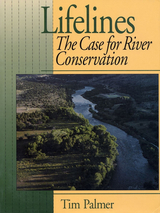 Lifelines: The Case For River Conservation
Tim Palmer
Island Press, 1994 In Lifelines, Tim Palmer addresses the fate of our waterways. While proposals for gigantic federal dams are no longer common, and some of the worst pollution has been brought under control, myriad other concerns have appeared—many of them more subtle and complex than the threats of the past. Palmer examines the alarming condition of rivers in today's world, reports on the success in restoring some of our most polluted streams and in stopping destructive dams, and builds the case for what must be done to avoid the collapse of riparian ecosystems and to reclaim qualities we cannot do without. He documents the needs for a new level of awareness and suggests ways to avert the plunder of our remaining river legacy. Lifelines offers a fresh perspective on: - the values of natural rivers
- current threats to streams and possibilities for reform
- the continuing challenge of hydropower development
- water quality, instream flows, and riparian habitat
- ecosystem management and watershed protection
- the need for vision, hope, and action
Lifelines: The Traffic of Trauma
Harris Solomon
Duke University Press, 2022 In Lifelines Harris Solomon takes readers into the trauma ward of one of Mumbai’s busiest public hospitals, narrating the stories of the patients, providers, and families who experience and care for traumatic injuries due to widespread traffic accidents. He traces trauma’s moves after the accident: from scenes of road and railway injuries to ambulance interiors; through emergency triage, surgery, and intensive care; and from the morgue for patients who do not survive into the homes of those who do. These pathways reveal how trauma shifts inequalities, infrastructures, and institutions through the lives and labors of clinical spaces. Solomon contends that medicine itself must be understood in terms of lifelines: patterns of embodied movement that determine survival. In reflecting on the centrality of traffic to life, Lifelines explores a fundamental question: How does medicine move us?
Life's a Dream (La Vida es Sueño)
Pedro Calderón de la Barca
University Press of Colorado, 2004 A beautiful and haunting tale of love, betrayal, knowledge, and power, Life's a Dream (La vida es sueño, 1636) is the best known and most widely admired play of Catholic Europe's greatest dramatist, Pedro Calderón de la Barca (1600-1681). Calderón's long life witnessed both the pinnacle and collapse of Spanish political power as well as the great flowering of Spanish classical literature. Michael Kidd's new prose translation renders Calderón's masterpiece into a transparent, modern American idiom that preserves the beauty and complexity of Calderón's Baroque Spanish. The result is a highly readable and adaptable text that is enhanced by a generous selection of supporting materials, including a thorough critical introduction and glossary.
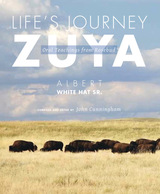 Life's Journey—Zuya: Oral Teachings from Rosebud
Albert White Hat Sr
University of Utah Press, 2012 “Our people are very lucky to be here,” says Albert White Hat Sr. He has lived through a time when Indians were sent to boarding schools and were not permitted to practice their own rituals. Although the Lakota people can practice their beliefs openly once again, things have changed and old ways have been forgotten. As a teacher at Sinte Gleska University in South Dakota, White Hat seeks to preserve the link the Lakota people have with their past. In Life’s Journey—Zuya, White Hat has collected and translated the stories of medicine men, retaining the simplicity of their language so as not to interpret their words through a Western lens. This is Zuya, oral history that is lived and handed down over the generations. White Hat also shares stories from his own experience. Using anecdotes he shows not only how the Lakota lifestyle has been altered but also how Lakota words have begun to take on new meanings that lack their original connotations and generate a different picture of Lakota philosophy. Language, interwoven with history, tells the people where they came from and who they are. By gathering the traditions and ceremonies in a single volume, with the history of how they evolved, he has secured the meaning of these practices for futre generations. Filled with warmth and humor, Life’s Journey—Zuya is an enjoyable and enlightening read.
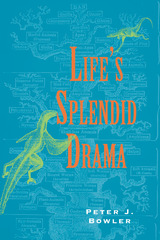 Life's Splendid Drama: Evolutionary Biology and the Reconstruction of Life's Ancestry, 1860-1940
Peter J. Bowler
University of Chicago Press, 1996 The story of life's splendid drama has captivated generations of the general public, just as it has intrigued biologists, especially those who began to try to solve evolutionary puzzles in the years immediately after the publication of Darwin's Origin of Species in 1859. Yet histories of the Darwinian revolution have paid far more attention to theoretical debates and have largely ignored the researchers who struggled to comprehend the deeper evolutionary significance of fossil bones and the structures of living animals. Peter J. Bowler recovers some of this lost history in Life's Splendid Drama, the definitive account of evolutionary morphology and its relationships with paleontology and bio-geography.
"Intriguing and insightful."—William Kimler, American Scientist
"[A] volume of impressive scholarship and extensive references."—Library Journal
"One of Bowler's best."—Kevin Padian, Nature
"[Bowler's] comprehensive review of the various debates and ideas in taxonomy, morphology, and vertebrate evolution . . . deserves the attention of biologists and other scholars interested in the history of ideas."—Choice
"The persistence of pre-Darwinian modes of thought in contemporary biology underlines the importance of Bowler's book. Its value is not only in the history it provides, but also in the way it illumines the present."—Peter J. Causton, Boston Book Review
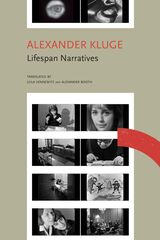 Lifespan Narratives: Ten Stories from a Time of Disruption; Chronicle of Emotions, Notebook 3
Alexander Kluge
Seagull Books, 2025 A poignant exploration of post–World War II life, blending fictional and non-fictional stories that challenge traditions and reflect on the enduring impact of historical disruptions. Lifespan Narratives has to do with stories, fictitious and not, which present a sad chronicle and question tradition from several different perspectives. Originally comprising Alexander Kluge’s first book, these stories were written between the years 1958 and 1962, in which he emphasizes the importance of continuously questioning our past. He underscores the necessity of recounting lifespan narratives even from today’s viewpoint, proposing that “life in a time of disruption” should be viewed as a constant experiential substance, transcending any single era. In Lifespan Narratives, readers are invited to explore the enduring impact of historical disruptions through Kluge’s masterful storytelling, which remains as relevant today as it was in the years following the Second World War. For this edition, the English translation of a selection of stories by Leila Vennewitz has been expanded by Alexander Booth in conjunction with the author.
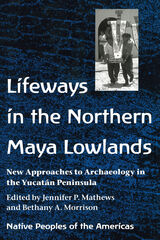 Lifeways in the Northern Maya Lowlands: New Approaches to Archaeology in the Yucatán Peninsula
Edited by Jennifer P. Mathews and Bethany A. Morrison
University of Arizona Press, 2006 The flat, dry reaches of the northern Yucatán Peninsula have been largely ignored by archaeologists drawn to the more illustrious sites of the south. This book is the first volume to focus entirely on the northern Maya lowlands, presenting a broad cross-section of current research projects in the region by both established and up-and-coming scholars. To address the heretofore unrecognized importance of the northern lowlands in Maya prehistory, the contributors cover key topics relevant to Maya studies: the environmental and historical significance of the region, the archaeology of both large and small sites, the development of agriculture, resource management, ancient politics, and long-distance interaction among sites. As a volume in the series Native Peoples of the Americas, it adds a human dimension to archaeological findings by incorporating modern ethnographic data.
By exploring various social and political levels of Maya society through a broad expanse of time, Lifeways in the Northern Maya Lowlands not only reconstructs a little-known past, it also suggests the broad implications of archaeology for related studies of tourism, household economies, and ethnoarchaeology. It is a benchmark work that pointedly demonstrates the need for researchers in both north and south to ignore modern geographic boundaries in their search for new ideas to further their understanding of the ancient Maya.
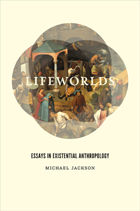 Lifeworlds: Essays in Existential Anthropology
Michael Jackson
University of Chicago Press, 2012 Michael Jackson’s Lifeworlds is a masterful collection of essays, the culmination of a career aimed at understanding the relationship between anthropology and philosophy. Seeking the truths that are found in the interstices between examiner and examined, world and word, and body and mind, and taking inspiration from James, Dewey, Arendt, Husserl, Sartre, Camus, and, especially, Merleau-Ponty, Jackson creates in these chapters a distinctive anthropological pursuit of existential inquiry. More important, he buttresses this philosophical approach with committed empirical research. Traveling from the Kuranko in Sierra Leone to the Maori in New Zealand to the Warlpiri in Australia, Jackson argues that anthropological subjects continually negotiate—imaginatively, practically, and politically—their relations with the forces surrounding them and the resources they find in themselves or in solidarity with significant others. At the same time that they mirror facets of the larger world, they also help shape it. Stitching the themes, peoples, and locales of these essays into a sustained argument for a philosophical anthropology that focuses on the places between, Jackson offers a pragmatic understanding of how people act to make their lives more viable, to grasp the elusive, to counteract external powers, and to turn abstract possibilities into embodied truths.
 Life-Writing in the History of Archaeology: Critical perspectives
Edited by Clare Lewis and Gabriel Moshenska
University College London, 2023 A study of life-writing as a vital part of the history of archaeology and a growing field of scholarship within the discipline.
Travels and adventures of the “great archaeologists” have generated centuries worth of bestselling books that, in turn, have shaped the public perception of archaeology. The lives of archaeologists are entangled with histories of museums and collections, developments in science and scholarship, and narratives of nationalism and colonialism into the present. In recent years, life-writing has played an important role in the surge of new research in the history of archaeology, including ground-breaking studies of discipline formation, institutionalization, and social and intellectual networks. Sources such as diaries, wills, film, and the growing body of digital records are powerful tools for highlighting the contributions of hitherto marginalized archaeological lives including many pioneering women, hired laborers, and other “hidden hands.”
This book brings together critical perspectives on life-writing in the history of archaeology from leading figures in the field. These include studies of archive formation and use, the concept of “dig-writing” as a distinctive genre of archaeological creativity, and reviews of new sources for already well-known lives. Several chapters reflect on the experience of life-writing, review the historiography of the field, and assess the intellectual value and significance of life-writing as a genre. Together, they work to problematize underlying assumptions about this genre, foregrounding methodology, social theory, ethics, and other practice-focused frameworks in conscious tension with previous practices.
 Lift Every Voice: African American Oratory, 1787-1901
Philip S. Foner
University of Alabama Press, 1997 This comprehensive anthology will be the standard source for the
study of African American public address for years to come. For Americans of the 19th century, as W. E. B. Du Bois observed, eloquent
speeches were 'the shining lights of civilization' that both expressed
and sought to improve the lives and communities from which they sprang.
Through political speeches, sermons, lectures, oral testimonies, and ceremonial
addresses, African Americans offered diverse responses to the issues and
events of their times, including not only slavery and racial equality but
also women's rights, education, religion, immigration, socialism, war,
Indian policy, and labor organization, among others. The speeches in this
collection are among the most powerful expressions of African American
opinions on these issues and were delivered on occasions and before audiences
where the speakers believed their words might be transformative. Lift Every Voice is a completely revised, updated, and expanded
version of Philip Foner's 1972 classic Voice of Black America, which Library
Journal hailed as "indispensable.""This well-edited and
richly inclusive work," wrote Benjamin Quarles, "unveils the
full sweep of Black expression as found in platform addresses" by
"men and women who join eloquence with reason in articulating their
grievances and their aspirations and in arousing their listeners with their
ringing and prophetic challenges." This new collection includes over
60 additional texts and revised and expanded introductory essays that provide
historical, biographical, and critical information for each speech. Containing more than 150 speeches, this anthology represents the most
extensive and diverse collection of African American oratory of the 18th
and 19th centuries ever published. Lift Every Voice makes readily
accessible not only the classic orations of such well-known figures
as Frederick Douglass, Sojourner Truth, and Booker T. Washington but also
dozens of lesser-known but important speeches deserving greater recognition
and study. Many of these speeches are previously unpublished, uncollected,
or long out of print.
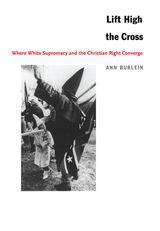 Lift High the Cross: Where White Supremacy and the Christian Right Converge
Ann Burlein
Duke University Press, 2002 Both the Christian right and right-wing white supremacist groups aspire to overcome a culture they perceive as hostile to the white middle class, families, and heterosexuality. The family is threatened, they claim, by a secular humanist conspiracy that seeks to erase all memory of the nation’s Christian heritage by brainwashing its children through sex education, multiculturalism, and pop culture. In Lift High the Cross Ann Burlein looks at two groups that represent, in one case, the “hard” right, and in the other, the “soft” right—Pete Peters’s “Scriptures for America” and James Dobson’s “Focus on the Family”—in order to investigate the specific methods these groups rely on to appeal to their followers.
Arguing that today’s right engenders its popularity not by overt bigotry or hatred but by focusing on people’s hopes for their children, Burlein finds a politics of grief at the heart of such rhetoric. While demonstrating how religious symbols, rituals, texts, and practices shape people’s memories and their investment in society, she shows how Peters and Dobson each construct countermemories for their followers that reframe their histories and identities—as well as their worlds—by reversing mainstream perspectives in ways that counter existing power relations. By employing the techniques of niche marketing, the politics of scandal, and the transformation of political issues into “gut issues” and by remasculinizing the body politic, Burlein shows, such groups are able to move people into their realm of influence without requiring them to agree with all their philosophical, doctrinal, or political positions.
Lift High the Cross will appeal to students and scholars of religion, American cultural studies, women’s studies, sociology, and gay and lesbian studies, as well as to non-specialists interested in American politics and, specifically, the right.
Lifted Masks and Other Works
Susan Glaspell
University of Michigan Press, 1993 A singular collection of short stories unveiling aspects of the human condition
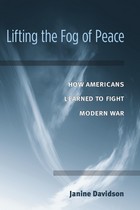 Lifting the Fog of Peace: How Americans Learned to Fight Modern War
Janine Davidson
University of Michigan Press, 2011 "Lifting the Fog of Peace is a captivating study of an agile and adaptive military evolving through the chaos of the post-9/11 world. In what is certain to be regarded as the definitive analysis of the reshaping of American combat power in the face of a complex and uncertain future, Dr. Janine Davidson firmly establishes herself as a rising intellectual star in government and politics. A thoroughly captivating study of organizational learning and adaptation—a 'must read' for leaders in every field."
---LTG William B. Caldwell, IV, Commanding General, NATO Training Mission - Afghanistan "In Lifting the Fog of Peace, Dr. Janine Davidson explains how the American military has adapted itself to succeed in the wars in Afghanistan and Iraq that are the most likely future face of combat. The book is informed by her experience of these wars in the Department of Defense, where she now plays a critical role in continuing the process of learning that has so visibly marked the military's performance in today's wars. Highly recommended."
---John A. Nagl, President, Center for a New American Security "Janine Davidson’s Lifting the Fog of Peace is a superb, concise, and well-written book that makes important contributions in three areas. It advances our knowledge of organizational learning in the Armed Forces. It also accurately captures the rich post-Vietnam operational and doctrinal history of the Army and the Marine Corps. The simplistic cartoon of dim-witted generals fixated on the Fulda Gap is replaced here by a more accurate version, where engaged senior officers studied the security environment, absorbed important lessons, and began to improve the learning capacity of the military services. Finally, Lifting the Fog of Peace assesses the state of contemporary stability operations and what must be done to further prepare our Armed Forces for modern war on the low end of the spectrum of conflict. It will be a 'must read' on the E-Ring of the Pentagon and in security studies programs across the nation."
---Joseph J. Collins, Professor, National War College, and former Deputy Assistant Secretary of Defense for Stability Operations Counterinsurgency and stability operations in Iraq and Afghanistan are only the most recent examples of the U.S. Armed Forces fighting insurgents, building infrastructure, enforcing laws, and governing cities. For more than two centuries, these assignments have been a regular part of the military's tasks; yet until recently the lessons learned from the experiences have seldom been formally incorporated into doctrine and training. As a result, each generation of soldiers has had to learn on the job. Janine Davidson traces the history of the U.S. military's involvement in these complex and frustrating missions. By comparing the historical record to the current era, Davidson assesses the relative influence of organizational culture and processes, institutional structures, military leadership, and political factors on the U.S. military's capacity to learn and to adapt. Pointing to the case of Iraq, she shows that commanders serving today have benefited at the tactical level from institutional changes following the Vietnam War and from the lessons of the 1990s. Davidson concludes by addressing the question of whether or not such military learning, in the absence of enhanced capabilities and capacity in other U.S. government agencies, will be sufficient to meet the complex challenges of the 21st century. Janine Davidson, a former Air Force pilot, is a professor of national security at George Mason University, currently serving in the Pentagon as Deputy Assistant Secretary of Defense for Plans. The views presented in this book are those of the author and do not necessarily represent the views of the Department of Defense or its Components.
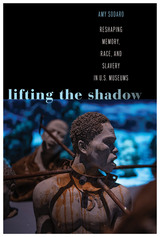 Lifting the Shadow: Reshaping Memory, Race, and Slavery in U.S. Museums
Amy Sodaro
Rutgers University Press, 2025 Lifting the Shadow: Reshaping Memory, Race, and Slavery in U.S. Museums examines a small but significant wave of new U.S. memorial museums that focus on slavery and its ongoing violent legacies, including the Smithsonian National Museum of African American History and Culture, Montgomery’s Legacy Museum: From Enslavement to Mass Incarceration, and Greenwood Rising, which commemorates the 1921 Tulsa Race Massacre. These museums are challenging historical narratives of slavery and race by placing racial oppression at the center of American history and linking historical slavery to contemporary racial injustice, but they have opened in a period marked by growing racial tension, white nationalism, and political division. Sodaro examines how the violence of U.S. slavery and its lasting legacies is negotiated in these museums, as well as their potential to contribute to the development of a more critical historical memory of race in the U.S. at this particularly volatile sociopolitical moment.
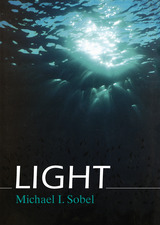 Light
Michael I. Sobel
University of Chicago Press, 1989 Rainbows and exploding stars, ancient Greek optics and modern lasers—these are but a few facets of this entertaining exploration of light in all areas of science and technology.
"Like the denizens of some brilliant ocean, humans are awash in light. Surrounded by illuminations both natural and artificial, we remain blissfully unaware of how light determines most of life's rhythms and rituals or how it dominates every field of modern science. Michael I. Sobel, a professor of physics at Brooklyn College, has attempted no less a task than to enlighten us (see how it pervades our language) about the many facets of this ubiquitous phenomenon, from its earliest stirrings of emotion and wonder in ancient savants to its modern applications in lasers and silicon chips. His broader objective, however, is to show the unity of the natural sciences by using light as a central theme. . . . As a guide along the path of light Mr. Sobel is excellent."—James Cornell, New York Times Book Review "At long last, here is a book about a technical subject that anyone can read with interest and understand. . . . The author's technical genius and communication skills are combined with excellent lucid sketches, concise meaty captions, and fascinating photographs."—Jason R. Taylor, Science Books and Films
“The title says it all. It is simply a magnificent dissertation on every aspect of light. Its lucid and attractive prose may be read for pleasure and wonder, yet the book is also a reference book of authority. I doubt whether any question about light cannot be answered by consulting it, whether the question is about glow-worms or the aurora borealis, black bodies of the structure of the eye, mirages or fluorescence. This is a marvelous book, one of the best paperbacks I have ever encountered.”—New Scientist
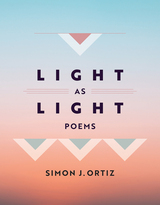 Light As Light: Poems
Simon J. Ortiz
University of Arizona Press, 2023 Light As Light is acclaimed poet Simon J. Ortiz’s first collection in twenty years. The poems in this volume celebrate the wonders and joy of love in the present while also looking back with both humorous and serious reflections on youth and the stories, scenes, people, and places that shape a person’s life. Light As Light brims with giddy, wistful long-distance love poems that offer a dialogue between the speaker and his beloved. Written in Ortiz’s signature conversational style, this volume claims poetry for everyday life as the poems find the speaker on a morning run, burnt out from academic responsibilities, missing his beloved, reflecting on sobriety, walking the dog, and pondering the act of poem making. The collection also includes prayer poems written for the speaker’s son; poems that retell traditional Acoma stories and history; and poems that engage environmental, political, and social justice issues—making for a well-rounded collection that blends the playful and the profound.
The poems in Light As Light travel far across both space and memory, landing everywhere from the New Mexico of the speaker’s childhood, to California, Tucson, and present-day Beijing, and many airports, highways, and way stations in between. The central concern uniting this collection is language itself: the weight and significance of English and Keres, as well as the nature and power of poetry as a way of life. No collection of Indigenous literature is complete without the work of Simon Ortiz, and this book is a powerful journey through the poet’s life—both a love letter to the future, and a sentimental, authentic celebration of the past.
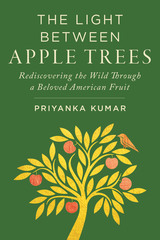 The Light Between Apple Trees: Rediscovering the Wild Through a Beloved American Fruit
Priyanka Kumar
Island Press, 2025 “A deeply meditative book in the vein of Robin Wall Kimmerer's Braiding Sweetgrass.”
—Sy Montgomery, author of The Soul of an Octopus
As a child in the foothills of the Himalayas, Priyanka Kumar was entranced by forest-like orchards of diverse and luscious fruit—especially apples. These biodiverse orchards seemed worlds away from the cardboard apples that lined supermarket shelves in the United States. Yet on a small patch of woods near her home in Santa Fe, Kumar discovered a wild apple tree—and the seeds of an odyssey were planted. Could the taste of a feral apple offer a doorway to the wild? In The Light Between Apple Trees, Kumar takes us on a dazzling and transformative journey to rediscover apples, unearthing a rich and complex history while illuminating how we can reimagine our relationship with nature.
Apples are popular, but in our everyday lives we rarely encounter more than a handful of varieties: of the sixteen thousand apple varieties once celebrated in America, scarcely a fifth remain accessible. Kumar reveals the richness of a hidden world, bringing readers to the vibrant forests and orchards where historic trees still survive. These mature and wild orchards offer more than just fruit: they are havens for creatures from hummingbirds to bears and a living connection to generations past. She brilliantly weaves together science and childhood memories with the apple’s storied history, from its roots in Kazakhstan to Spanish orchards in the Southwest and Thomas Jefferson’s beloved Monticello fruitery.
The Light Between Apple Trees is a lyric odyssey that will forever change how you look at an “apple a day.” Kumar shows how—if we follow untamed paths—the tang and texture of an apple can lead us back to the wild.
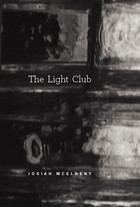 The Light Club: On Paul Scheerbart's "The Light Club of Batavia"
Josiah McElheny
University of Chicago Press, 2010 Paul Scheerbart (1863–1915) was a visionary German novelist, theorist, poet, and artist who made a lasting impression on such icons of modernism as Walter Benjamin, Bruno Taut, and Walter Gropius. Fascinated with the potential of glass architecture, Scheerbart’s satirical fantasies envisioned an electrified future, a world composed entirely of crystalline, colored glass.
In 1912, Scheerbart published The Light Club of Batavia, a Novelle about the formation of a club dedicated to building a spa for bathing—not in water, but in light—at the bottom of an abandoned mineshaft. Translated here into English for the first time, this rare story serves as a point of departure for Josiah McElheny, who, with an esteemed group of collaborators, offers a fascinating array of responses to this enigmatic work.
The Light Club makes clear that the themes of utopian hope, desire, and madness in Scheerbart’s tale represent a part of modernism’s lost project: a world based on political and spiritual ideals rather than efficiency and logic. In his compelling introduction, McElheny describes Scheerbart’s life as well as his own enchantment with the writer, and he explains the ways in which The Light Club of Batavia inspired him to produce art of uncommon breadth. The Light Club also features inspired writings from Gregg Bordowitz and Ulrike Müller, Andrea Geyer, and Branden W. Joseph, as well as translations of original texts by and about Scheerbart. A unique response by one visionary artist to another, The Light Club is an unforgettable examination of what it might mean to see radical potential in absolute illumination.
Light Filaments: Structures, challenges and applications
Jean-Claude Diels
The Institution of Engineering and Technology, 2022 A laser of sufficient intensity traveling through air will - by itself - engineer a narrow channel over which light will propagate for tens or even hundreds of meters. Such filaments of laser light were first created at the end of the twentieth century, and investigators are now beginning to explore new applications for them.
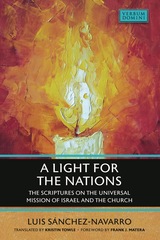 Light for the Nations: The Scriptures on the Universal Mission of Israel and the Church
Luis Sanchez-Navarro
Catholic University of America Press, 2024 Universality belongs to the very being of the Catholic Church. This claim of the Gospel is rooted in the ministry of Jesus, witnessed to by the canonical Gospels and the other books of the New Testament, all of which present the universal openness of salvation as a fulfillment of the Scriptures of Israel. In this book, after addressing the universality of salvation in the writings of the Old Covenant, we examine the differentiated and concordant witness of the synoptic Gospels, John and Paul, as well as the Letter to the Hebrews and the Apocalypse. In this way, we intend to show how this apostolic witness responds to the will of the Lord Jesus, while highlighting its harmony with Torah, Prophets and Writings.
Light for the Nations, by reviewing the main biblical passages on the universal dimension of salvation, aims to show how the fact that the Gospel of Jesus Christ has a claim to universality does not diminish, but rather enhances, the importance of the people of the first Covenant: Israel is called to be an active mediator of salvation. The canonical perspective is based on a differentiated exegetical study of each testimony. The scope is broad, since this theme of biblical theology is also relevant for Christology and soteriology, for anthropology and for ecclesiology. The main contribution lies in showing how the various biblical testimonies, in their diversity (which is fully taken into account), offer at the same time a concurring testimony on this fundamental question of Christian theology,
forming a true symphony within its polyphony.
Light Image Imagination
Edited by Martha Blassnigg
Amsterdam University Press, 2013 The essays in this collection consider the creation, perception, and projection of images, both mental and material, and their specific relationship with light and imagination. With contributions from scholars working at the interdisciplinary intersections of art, science, and the humanities, Light Image Imagination extends disciplinary boundaries in order to amplify and enrich the current thinking about mediated images. The unique layout of the book, which juxtaposes text and image essays, is intended to stimulate dialogue and associative connections.
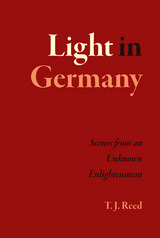 Light in Germany: Scenes from an Unknown Enlightenment
T. J. Reed
University of Chicago Press, 2015 Germany’s political and cultural past from ancient times through World War II has dimmed the legacy of its Enlightenment, which these days is far outshone by those of France and Scotland. In this book, T. J. Reed clears the dust away from eighteenth-century Germany, bringing the likes of Kant, Goethe, Friedrich Schiller, and Gotthold Lessing into a coherent and focused beam that shines within European intellectual history and reasserts the important role of Germany’s Enlightenment.
Reed looks closely at the arguments, achievements, conflicts, and controversies of these major thinkers and how their development of a lucid and active liberal thinking matured in the late eighteenth century into an imaginative branching that ran through philosophy, theology, literature, historiography, science, and politics. He traces the various pathways of their thought and how one engendered another, from the principle of thinking for oneself to the development of a critical epistemology; from literature’s assessment of the past to the formulation of a poetic ideal of human development. Ultimately, Reed shows how the ideas of the German Enlightenment have proven their value in modern secular democracies and are still of great relevance—despite their frequent dismissal—to us in the twenty-first century.
Light in My Darkness
HELEN KELLER
Swedenborg Foundation Publishers, 2000 One of Time's women of the century, Helen Keller, reveals her mystical side in this best-selling spiritual autobiography. Writing that her first reading of Emanuel Swedenborg at age fourteen gave her truths that were "to my faculties what light, color and music are to the eye and ear," she explains how Swedenborg's works sustained her throughout her life.
This new edition includes a foreword by Dorothy Herrmann, author of the acclaimed Helen Keller: A Life, and a new chapter, "Epilogue: My Luminous Universe."
Light in the Dark/Luz en lo Oscuro: Rewriting Identity, Spirituality, Reality
Gloria E. Anzaldua
Duke University Press, 2015 Light in the Dark is the culmination of Gloria E. Anzaldúa's mature thought and the most comprehensive presentation of her philosophy. Focusing on aesthetics, ontology, epistemology, and ethics, it contains several developments in her many important theoretical contributions.
 Light in the Trees
Gail Folkins
Texas Tech University Press, 2016 From the book
At the end of our visit in the big snow, I hiked the mountain behind Dad’s house with my brother, stepping into his size 13 footprints. With trail signposts long buried, we kept to the main road, a route once used for logging. Although almost every trip home included this steep climb, I’d never hiked it in two feet of snow. The muffled whiteness made it difficult to tell how far we’d come, how much farther we had to go. More than once I sat on a log saying I’d stay there and wait for Ken, whose long strides made it look easy, to go up without me. Each time I did this, he stopped, waited, and told me we were almost there, although I suspected we weren’t.
A memoir of home, nature, and change in the American West, Light in the Trees makes cultural and environmental topics personal through a narrator’s travels between past and present, rural and urban. Growing up on a mountain foothill in western Washington, Gail Folkins offers a small-town viewpoint of the Pacific Northwest. Sasquatch myths and serial killer realities, a runaway Appaloosa, and turbulent volcanoes beneath serene mountaintops help chronicle a coming of age for both a narrator and a place. Later, a move to the Southwest expands Folkins’s view of the West. From this new perspective paired with frequent journeys to the Northwest, she explores challenges of the natural world, from wildlife habitat and water quality to a changeable climate and wildfires, navigating new versions of home and self along the way.
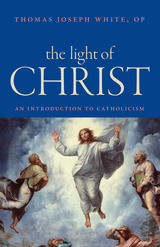 The Light of Christ: An Introduction to Catholicism
Thomas Joseph White, OP
Catholic University of America Press, 2017 The Light of Christ provides an accessible presentation of Catholicism that is grounded in traditional theology, but engaged with a host of contemporary questions or objections. Inspired by the theologies of Iranaeus, Thomas Aquinas and John Henry Newman, and rooted in a post-Vatican II context, Fr. Thomas Joseph White presents major doctrines of the Christian religion in a way that is comprehensible for non-specialists: knowledge of God, the mystery of the Trinity, the Incarnation and the atonement, the sacraments and the moral life, eschatology and prayer.
At the same time, The Light of Christ also addresses topics such as evolution, the modern historical study of Jesus and the Bible, and objections to Catholic moral teaching. Touching on the concerns of contemporary readers, Fr. White examines questions such as whether Christianity is compatible with the findings of the modern sciences, do historical Jesus studies disrupt or confirm the teaching of the faith, and does history confirm the antiquity of Catholic claims.
This book serves as an excellent introduction for young professionals with no specialized background in theology who are interested in learning more about Catholicism, or as an introduction to Catholic theology. It will also serve as a helpful text for theology courses in a university context.
As Fr. White states in the book’s introduction: “This is a book that offers itself as a companion. I do not presume to argue the reader into the truths of the Catholic faith, though I will make arguments. My goal is to make explicit in a few broad strokes the shape of Catholicism. I hope to outline its inherent intelligibility or form as a mystery that is at once visible and invisible, ancient and contemporary, mystical and reasonable.”
 The Light of Desire: La Luz del Deseo
Marjorie Agosín
Swan Isle Press, 2009 Marjorie Agosín’s intensely personal long poem The Light of Desire is both a secular and sacred meditation on love and its meanings in the land of Israel. Following the tradition of the Song of Songs and the secular poetry of Sepharad, the beloved in The Light of Desire is both physical and metaphorical. The lovers’ bodies are the paths, the geography, leading not only from desire to sensual pleasure, but to memory and illumination. The light on the pink stones of Jerusalem, the sunlight of Galilee, from hills to the sea, the fragrant air and “mantle of stars,” all become one in this tender, rhapsodic expression of longing and desire. This is not unrequited love, but rather a reciprocal passion that brings exquisite pleasure, pain, a sense of fragility, and the hope and belief in that which is eternal. The poem was written over a four-year span in Jerusalem’s Mishkenot Sha’ananim neighborhood, overlooking the wall of the Second Temple, and these hallowed surroundings imbued Agosín’s poetic voice. Lori Marie Carlson’s sensitive translation maintains the spirit of the original Spanish in this bilingual edition.
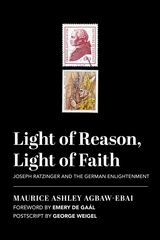 Light of Reason, Light of Faith: Joseph Ratzinger and the German Enlightenment
Maurice Ashley Agbaw-Ebai
St. Augustine's Press, 2021 Fr. Maurice Ashley Agbaw-Ebai, a native of Cameroon, has written a fresh, exciting new study of the lifelong engagement of Josef Ratzinger, later Pope Benedict XVI, with the German Enlightenment and its contemporary manifestations and heirs. Contemporary European disdain for organized religion and the rise in secularism on that continent has deep roots in the German Enlightenment. To understand contemporary Europe, one must return to this crucial epoch in its history, to those who shaped the European mind of this era, and to a study of the ideas they espoused and propagated. These ideas, for good or for ill, have taken hold in other parts of the modern world, being incarnated in many minds and institutions in contemporary society and threatening to enthrone a disfigured rationality without faith or a sense of Transcendence.
Ratzinger’s extraordinary and sympathetic understanding of the sources of contemporary secularism equipped him to appreciate the gains of the Enlightenment, while still being a fierce critic of the losses humanity has suffered when reason falsely excludes faith. Fr. Agbaw-Ebai’s account reveals Ratzinger, in relation to his various interlocutors, to be the truly “enlightened” one because he demonstrates a truly balanced understanding of the human mind. To be truly rational one must be able to hold to faith and reason both, reason informed by faith in Jesus Christ.
A particular merit of this book is Agbaw-Ebai’s presentation of Ratzinger’s treatment of the German Enlightenment’s greatest contributors: Kant, Nietzche, Hegel and Habermas, among others. In the postscript George Weigel characterizes what this study accomplishes in the larger framework of scholarship. “[Ratzinger’s] position remains too often misunderstood, and sometimes deliberately misinterpreted, throughout the whole Church. And to misunderstand, or misinterpret, Ratzinger is to misunderstand or misinterpret both the modern history of theology and the Second Vatican Council.” Agbaw-Ebai masterfully positions Ratzinger correctly in the history of ideas, and exhibits why Ratzinger will be remembered as one of its main players. Pure rationalists and true believers are equally indebted to him.
 Light of the Everlasting Life: Disability and Crip Eschatology in Old English Literature
Leah Pope Parker
University of Michigan Press, 2025 From disability metaphors to narratives structured around bodies presented as aberrant, early medieval English thoughtworlds conveyed the promise of resurrection and the hope of salvation through crip and disabled bodies. Light of the Everlasting Life argues that early medieval Christian eschatology, as manifested in Old English literary texts, was a crip eschatology: a theology of the afterlife that relied upon disabled bodies and concepts related to disability in order to convey promises of resurrection and salvation. In addition to demonstrating how literature manifested theological approaches to the afterlife, Leah Pope Parker articulates the ways of thinking about bodies and disability that were available to ordinary early medieval people, many of whom experienced their bodies in ways that resonate with what we call disability today, but who rarely appear in the historical record.
By analyzing Old English texts, including Alfredian translations, Ælfric’s saints’ lives, and poetry from the Exeter and Vercelli Books, Parker introduces novel ways of characterizing disability’s effects in literature. “Spiritual prosthesis” reveals rhetorical, narrative, and theological reliance upon disability to convey the promise of a Christian afterlife. “Systems of aberrance” emerge as a result, in which bodies marked as deviant—including disabled, monstrous, heroic, saintly, and dead bodies—form a network of embodiments that reinforce the narratives they inhabit and that of Christian salvation history. Locating crip eschatology in early medieval literature, Light of the Everlasting Life rewrites standard histories of disability, of the body, and of medieval Christian eschatology.
The Light of the Home: An Intimate View of the Lives of Women in Victorian America
Harvey Green
University of Arkansas Press, 2003 From the greatest collection of American Victoriana comes a wonderful evocation of the lives of women 100 years ago. Harvey Green culls from letters and diaries, quotes from magazines, and looks at the clothes, samplers, books, appliances, toys, and dolls of the era to provide a rare portrait of daily life in turn-of-the-century America.
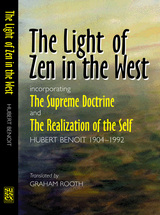 The Light of Zen in the West: Incorporating The Supreme Doctrine and The Realization of the Self
Hubert Benoit
Sussex Academic Press, 2022 Following the success of the publication of The Supreme Doctrine in 1998, Sussex Academic Press is proud to announce a completely new and updated translation by Graham Rooth, MD, MRCPsych, of this seminal work. The Light of Zen in the West also includes a new translation of one of Benoit's other major texts, The Realization of the Self. The volume also contains two lesser known works - Buddha and the Intuition of the Universal and Techniques of Timeless Realization - and has a glossary and index. Benoit's writings on the human predicament were influenced by his studies in Zen Buddhism and psychoanalysis. Both books foreshadow contemporary transpersonal and integral psychology: through the re-integration of psychology and metaphysics, Benoit invites us to make our own journey toward spiritual transformation and the intuitive understanding of universal truths.
Light on the Devils: Coming of Age on the Klamath
Louise Wagenknecht
Oregon State University Press, 2011 When Louise Wagenknecht’s family arrived in the remote logging town of Happy Camp in 1962, a boundless optimism reigned. Whites and Indians worked together in the woods and the lumber mills of northern California’s Klamath country. Logging and lumber mills, it seemed, would hold communities together forever. But that booming prosperity would come to an end. Looking back on her teenage years spent along the Klamath River, Louise Wagenknecht recounts a vanishing way of life. She explores the dynamics of family relationships and the contradictions of being female in a western logging town in the 1960s. And she paints an evocative portrait of the landscape and her relationship with it. Light on the Devils is a captivating memoir of place. It will appeal to general readers interested in the rural West, personal memoir, history, and natural history.
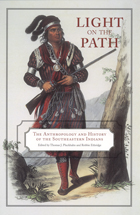 Light on the Path: The Anthropology and History of the Southeastern Indians
Thomas J. Pluckhahn
University of Alabama Press, 2006 Social history of the native peoples of the American South, bridging prehistory and history The past 20 years have witnessed a change in the study of the prehistory and history of the native peoples of the American South. This paradigm shift is the bridging of prehistory and history to fashion a seamless social history that includes not only the 16th-century Late Mississippian period and the 18th-century colonial period but also the largely forgotten--and critically important--century in between. The shift is in part methodological, for it involves combining methods from anthropology, history, and archaeology. It is also conceptual and theoretical, employing historical and archaeological data to reconstruct broad patterns of history--not just political history with Native Americans as a backdrop, nor simply an archaeology with added historical specificity, but a true social history of the Southeastern Indians, spanning their entire existence in the American South.
The scholarship underlying this shift comes from many directions, but much of the groundwork can be attributed to Charles Hudson. The papers in this volume were contributed by Hudson’s colleagues and former students (many now leading scholars themselves) in his honor. The assumption links these papers is that of a historical transformation between Mississippian societies and the Indian societies of the historic era that requires explanation and critical analysis.
In all of the chapters, the legacy of Hudson’s work is evident. Anthropologists, archaeologists, and historians are storming the bridge that connects prehistory and history in a manner unimaginable 20 years ago. While there remains much work to do on the path toward understanding this transformation and constructing a complete social history of the Southeastern Indians, the work of Charles Hudson and his colleagues have shown the way.
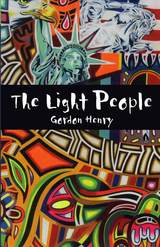 The Light People: A Novel
Gordon Henry
Michigan State University Press, 1994 The Light People is a multi-genre novel that includes a series of nested stories about a tribal community in Northern Minnesota. Major themes include Oskinaway’s search for his parents and the legal wrangling over the possession of a leg that has been removed from a tribal elder. Each story is linked to previous and successive stories to form a discourse on identity and cultural appropriation, all told with humor and wisdom.
Taking inspiration from traditional Anishinabe stories and drawing from his own family's storytelling tradition, Gordon Henry, Jr., has woven a tapestry of interlocking narratives in The Light People, a novel of surpassing emotional strength. His characters tell of their experiences, dreams, and visions in a multitude of literary styles and genres. Poetry, drama, legal testimony, letters, and essays combine with more conventional narrative techniques to create a multifaceted, deeply rooted, and vibrant portrait of the author's own tribal culture. Keenly aware of Eurocentric views of that culture, Henry offers a "corrective history" where humor and wisdom transcend the political.
In the contemporary Minnesota village of Four Bears, on the mythical Fineday Reservation, a young Chippewa boy named Oskinaway is trying to learn the whereabouts of his parents. His grandparents turn for help to a tribal elder, one of the light people, Jake Seed. Seed's assistant, a magician who performs at children's birthday parties, tells Oskinaway's family his story, which gives way to the stories of those he encounters. Narratives unfold into earlier narratives, spinning back in time and encompassing the intertwined lives of the Fineday Chippewas, eventually revealing the place of Oskinaway and his parents in a complex web of human relationships.
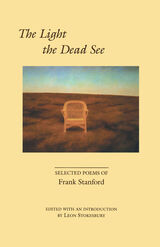 The Light the Dead See: Selected Poems of Frank Stanford
Frank Stanford
University of Arkansas Press, 1991 Between 1972, when he published his first book, The Signing Knives, and 1978, when he died at the age of twenty-nine, Frank Stanford published seven volumes of poetry. Within a year of his death, two posthumous collections were published. At the time of this death, as Leon Stokesbury asserts in his introduction, “Stanford was the best poet in America under the age of thirty-five.” The Light the Dead See collects the best work from those nine volumes and six previously unpublished poems. In the earlier poems, Stanford creates a world where he could keep childhood alive, deny time and mutability, and place a version of himself at the center of great myth and drama. Later, the denial of time and mutability gives way to an obsessive and familiar confrontation with death. Although Stanford paid an enormous price for his growing familiarity with Death as a presence, the direct address to that presence is a source of much of the striking originality and stunning power in the poetry.
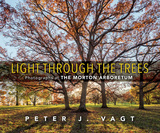 Light Through the Trees: Photographs at The Morton Arboretum
Peter J. Vagt
University of Illinois Press, 2022 “I don’t compose pictures, I find them in the colors, patterns, and shadows of the trees in front of me. While I walk, I let my feelings well up in my consciousness. My feelings guide me to find what I’m seeing and feeling and distill it into a picture.” A beloved and popular Illinois institution, The Morton Arboretum welcomes one million annual visitors to walk its trails and view the 4,200 tree species on the grounds. Peter Vagt has photographed the Arboretum for over twenty years. This collection showcases eighty-five of his favorite works, each one in full color. Vagt's close attention to place and time reflects both his profound connection to the Arboretum and its preeminence as a sanctuary for anyone in search of transcendence in nature. A celebration of The Morton Arboretum in its centenary year, Light Through the Trees is the perfect keepsake or gift for anyone who admires trees and believes in their restorative power.
Light without Heat: Stories
Matthew Kirkpatrick
University of Alabama Press, 2012 Matthew Kirkpatrick’s debut, Light without Heat, is an inventive, surprising collection of short stories full of odd, marginal characters rendered with surreal humor and lyrical, often beautiful language.
Formally playful, these stories take the shape of biographies, instructions, glossaries, and diagrams, all ultimately in the service of depicting characters with emotional intensity.
Stories in the collection explore the flawed nature of memory, workplace malaise, the isolation of home, and the last throes of ending love. No two stories in Light without Heat are the same, yet all of them work toward sharing human experience in new, innovative ways.
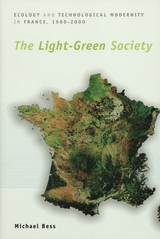 The Light-Green Society: Ecology and Technological Modernity in France, 1960-2000
Michael Bess
University of Chicago Press, 2003 The accelerating interpenetration of nature and culture is the hallmark of the new "light-green" social order that has emerged in postwar France, argues Michael Bess in this penetrating new history. On one hand, a preoccupation with natural qualities and equilibrium has increasingly infused France's economic and cultural life. On the other, human activities have laid an ever more potent and pervasive touch on the environment, whether through the intrusion of agriculture, industry, and urban growth, or through the much subtler and more well-intentioned efforts of ecological management.
The Light-Green Society limns sharply these trends over the last fifty years. The rise of environmentalism in the 1960s stemmed from a fervent desire to "save" wild nature-nature conceived as a qualitatively distinct domain, wholly separate from human designs and endeavors. And yet, Bess shows, after forty years of environmentalist agitation, much of it remarkably successful in achieving its aims, the old conception of nature as a "separate sphere" has become largely untenable. In the light-green society, where ecology and technological modernity continually flow together, a new hybrid vision of intermingled nature-culture has increasingly taken its place.
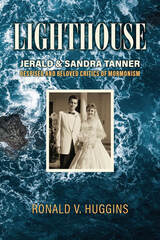 Lighthouse: Jerald and Sandra Tanner, Despised and Beloved Critics of Mormonism
Ronald V. Huggins
Signature Books, 2022 While some may view Jerald and Sandra Tanner only as despised critics of the Church of Jesus Christ of Latter-day Saints, it is impossible to trace the course of Mormon history over the past sixty years without acknowledging their contribution. Many both inside and outside of Mormonism respect them for their unflinching quest for truth no matter the cost, as when Jerald declared Mark Hofmann’s notorious Salamander Letter a forgery months before some experts declared it authentic. Their Utah Lighthouse Ministry has operated for decades only blocks from church headquarters, where their many works on Mormonism are still printed and sold. Jerald died in 2006 but Sandra continues to oversee the ministry.
The Tanners consistently challenged the church’s position on many historical issues. Utah Lighthouse was long the only source for Mormon scholars to obtain crucial historical reprints, which they still happily or begrudgingly purchase; for others, the Tanners’ writings have been the source of disillusionment with the church. Despised or beloved, the influence of Jerald and Sandra Tanner cannot be underestimated or ignored.
Lighting in Early Byzantium
Laskarina Bouras and Maria G. Parani
Harvard University Press, 2008 This book stands alone as the first general survey of lighting in Byzantium. Although relatively well known by specialists, Byzantine lighting devices have not been treated independently, but rather presented and discussed in connection with other Byzantine minor arts. The first part of the book discusses the technology and types of lighting devices and explains their decorative symbolism and social function. The second half illustrates this narrative by drawing on a Dumbarton Oaks exhibition, “Lighting in Early Byzantium,” which presented to the public some of the finest surviving late Roman and early Byzantine lighting devices. Some of these are now published for the first time.
Lighting the Shadow
Rachel Eliza Griffiths
Four Way Books, 2015 Lighting the Shadow is about a woman’s evolving journey through desire, grief, trauma, and the peculiar historical American psyche of desire and violence. These poems explore the international and psychological wars women survive—wars inflicted through various mediums that employ art, race, and literature. Furthermore, the collection is about a woman’s transformation and acceptance of her complicated attempts to balance her spirit’s own spectrum. Pulling the poet away from death, these poems insist that she open her life to her own powers and the powers of a greater world—a world that is both bright and dark.
Lighting the Shakespearean Stage, 1567 - 1642
R. B. Graves
Southern Illinois University Press, 1999 In Lighting the Shakespearean Stage, 1567–1642,R. B. Graves examines the lighting of early modern English drama from both historical and aesthetic perspectives. He traces the contrasting traditions of sunlit amphitheaters and candlelit hall playhouses, describes the different lighting techniques, and estimates the effect of these techniques both indoors and outdoors. Graves discusses the importance of stage lighting in determining the dramatic effect, even in cases where the manipulation of light was not under the direct control of the theater artists. He devotes a chapter to the early modern lighting equipment available to English Renaissance actors and surveys theatrical lighting before the construction of permanent playhouses in London. Elizabethan stage lighting, he argues, drew on both classical and medieval precedents.
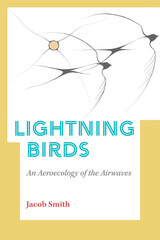 Lightning Birds: An Aeroecology of the Airwaves
Jacob Smith
University of Michigan Press, 2021 The aerosphere is a literal and figurative contact zone for birds and media. Transmission towers become obstacles in birds’ flight paths; radar systems emit signals that reveal the large-scale movements of birds; parabolic microphones directed at the sky detect avian flight calls; and miniature radio transmitters are attached to birds to track their global travels.
Lightning Birds is a multi-media project that consists of a five-episode, podcast-style audiobook, a curatorial essay, and a bibliography. It tells a new story about radio, describes important scientific discoveries about bird migration through interviews with key researchers, and explores a mode of ecocriticism that combines traditional forms of text-based scholarship with sound art, music, and audio storytelling. At a moment when 13% of all bird species are threatened with extinction, Smith writes not only to those working in media studies, environmental studies, and ornithology, but also to a broader public. He argues that by knowing more about how birds use the sky, we might begin to minimize the damage that our buildings, media, and environmental degradation do to the aerosphere.
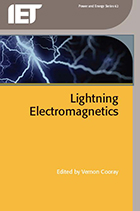 Lightning Electromagnetics
Vernon Cooray
The Institution of Engineering and Technology, 2012 Lightning research is an interdisciplinary subject where several branches of engineering and physics converge. Lightning Electromagnetics is a book that caters for the needs of both physicists and engineers. It provides: The physicist with information on how to simulate: the charge generation in thunderclouds, different discharge processes in air that ultimately lead to a lightning flash, and the mechanism through which energetic radiation in the form of X-rays and Gamma rays are produced by lightning flashes; The power engineer with several numerical tools to study the interaction of lightning flashes with power transmission and distribution systems; The telecommunication engineer with numerical procedures with which to calculate the electromagnetic fields generated by lightning flashes and their interactions with overhead and underground telecommunication systems; The electromagnetic specialist with the basic theory necessary to simulate the propagation of lightning electromagnetic fields over the surface of the Earth; The atmospheric scientist with numerical procedures to quantify interactions between lightning flashes and the Earth's atmosphere, including the production of NOx by lightning flashes occurring in the atmosphere. This book also contains a chapter on the stimulation of visual phenomena in humans by electromagnetic fields of lightning flashes, which is essential reading for those who are interested in ball lightning.
Lightning Electromagnetics: Electrical processes and effects, Volume 2
Vernon Cooray
The Institution of Engineering and Technology, 2022 Lightning is important for all scientists and engineers involved with electric installations. It is gaining further relevance since climate warming is causing an increase in lightning strikes, and since the rising numbers of renewable power generators, the electricity grid, and charging infrastructure are susceptible to lightning damage. This is the second edition to this comprehensive work.
Lightning Electromagnetics: Return stroke modelling and electromagnetic radiation, Volume 1
Vernon Cooray
The Institution of Engineering and Technology, 2022 Lightning is important for all scientists and engineers involved with electric installations. It is gaining further relevance since climate warming is causing an increase in lightning strikes, and since the rising numbers of renewable power generators, the electricity grid, and charging infrastructure are susceptible to lightning damage. This is the second edition to this comprehensive work.
The Lightning Flash
Vernon Cooray
The Institution of Engineering and Technology, 2003 This unique book provides the reader with a thorough background in almost every aspect of lightning and its impact on electrical and electronic equipment. The contents range from basic discharge processes in air through transient electromagnetic field generation and interaction with overhead lines and underground cables, to lightning protection and testing techniques. This book is of value to anyone designing, installing or commissioning equipment which needs to be secured against lightning strikes, as well as being a sound introduction to research students working in the field.
The Lightning Flash
Vernon Cooray
The Institution of Engineering and Technology, 2014 This updated and expanded new edition of Cooray's classic text provides the reader with a thorough background in almost every aspect of lightning and its impact on electrical and electronic equipment. The contents range from basic discharge processes in air through transient electromagnetic field generation and interaction with overhead lines and underground cables, to lightning protection and testing techniques. New to this edition are discussions of high-speed video recordings of lightning; rocket-and-wire triggered lightning experiments; tower initiated lightning discharges; upper atmospheric electrical discharges; attachment of lightning flashes to grounded structures; energetic radiation from thunderstorms and lightning; global lightning nitrogen oxides production; and lightning and global temperature change.
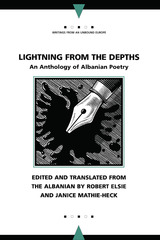 Lightning from the Depths: An Anthology of Albanian Poetry
Robert Elsie and Janice Mathie-Heck
Northwestern University Press, 2008 If a people Have no poets And no poetry of their own For a National Anthology Then treachery and barking Will do the trick With these words, a challenge is laid down in this new volume of Albanian poetry. Albania, however, has a dynamic tradition of literature. Lightning from the Depths is the first English collection to present the full range of Albanian verse. Albanian literature has had many lives. The early Christian traditions disappeared as Islam and the Ottoman Empire took over. Muslim literature, too, withered when the nation strove to become an independent European country. The beginnings of a modern tradition were quashed by the Stalinists. All along this rocky path, poets have turned the political strife, poverty, and isolation their nation has often experienced into culture, both celebrating and questioning the society in which they live. Lightning from the Depths opens readers’ eyes to a new political and cultural world populated artists who can spin despair into poetry.
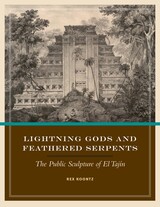 Lightning Gods and Feathered Serpents: The Public Sculpture of El Tajín
By Rex Koontz
University of Texas Press, 2009 El Tajín, an ancient Mesoamerican capital in Veracruz, Mexico, has long been admired for its stunning pyramids and ballcourts decorated with extensive sculptural programs. Yet the city's singularity as the only center in the region with such a wealth of sculpture and fine architecture has hindered attempts to place it more firmly in the context of Mesoamerican history. In Lightning Gods and Feathered Serpents, Rex Koontz undertakes the first extensive treatment of El Tajín's iconography in over thirty years, allowing us to view its imagery in the broader Mesoamerican context of rising capitals and new elites during a period of fundamental historical transformations. Koontz focuses on three major architectural features—the Pyramid of the Niches/Central Plaza ensemble, the South Ballcourt, and the Mound of the Building Columns complex—and investigates the meanings of their sculpture and how these meanings would have been experienced by specific audiences. Koontz finds that the iconography of El Tajín reveals much about how motifs and elite rites growing out of the Classic period were transmitted to later Mesoamerican peoples as the cultures centered on Teotihuacan and the Maya became the myriad city-states of the Early Postclassic period. By reexamining the iconography of sculptures long in the record, as well as introducing important new monuments and contexts, Lightning Gods and Feathered Serpents clearly demonstrates El Tajín's numerous iconographic connections with other areas of Mesoamerica, while also exploring its roots in an indigenous Gulf lowlands culture whose outlines are only now emerging. At the same time, it begins to uncover a largely ignored regional artistic culture of which Tajín is the crowning achievement.
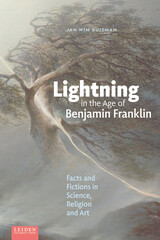 Lightning in the Age of Benjamin Franklin: Facts and Fictions in Science, Religion, and Art
Jan Wim Buisman
Leiden University Press, 2023 Thunder and lightning have been seen from time immemorial as God’s instruments of punishment. Until the invention of the lightning rod by Benjamin Franklin in 1752. In Lightning in the Age of Benjamin Franklin. Facts and Fictions in Science, Religion, and Art Jan Wim Buisman shows how the Enlightenment and Romanticism have changed our scientific, religious and artistic image of natural violence forever. In the eighteenth century, thunderstorms are experienced less and less as a threat and more and more as something extraordinary. The image of God and the image of nature changed radically. The religion of enlightened people, for example, was more determined by joy than by fear. And nature was almost experienced as a girlfriend. That had significant consequences because those who no longer had to be afraid of the thunderstorm could play with it without hesitation. That’s what poets, painters and musicians did to their heart’s content. Never before the beauty of the storm was depicted as much in the western culture as during the transition from the Enlightenment to Romanticism.
Lightning Interaction with Power Systems
Alexandre Piantini
The Institution of Engineering and Technology, 2019 The need to improve the reliability and robustness of power systems and smart grids makes protection of sensitive equipment and power transmission and distribution lines against lightning-related effects a primary concern. Renewable electricity generation capacity has been increasing all over the world, and lightning can cause failures either by hitting the turbines or panels directly or inducing transients on the control systems that lead to equipment failure, malfunction or degradation.
Lightning Interaction with Power Systems
Alexandre Piantini
The Institution of Engineering and Technology, 2019 The need to improve the reliability and robustness of power systems and smart grids makes protection of sensitive equipment and power transmission and distribution lines against lightning-related effects a primary concern. Renewable electricity generation capacity has been increasing all over the world, and lightning can cause failures either by hitting the turbines or panels directly or inducing transients on the control systems that lead to equipment failure, malfunction or degradation.
Lightning Interaction with Power Systems: Applications, Volume 2
Alexandre Piantini
The Institution of Engineering and Technology, 2020 The need to improve the reliability and robustness of power systems and smart grids makes protection of sensitive equipment and power transmission and distribution lines against lightning-related effects a primary concern. Renewable electricity generation capacity has been increasing all over the world, and lightning can cause failures either by hitting the turbines or panels directly or inducing transients on the control systems that lead to equipment failure, malfunction or degradation.
Lightning Interaction with Power Systems: Fundamentals and modelling, Volume 1
Alexandre Piantini
The Institution of Engineering and Technology, 2020 The need to improve the reliability and robustness of power systems and smart grids makes protection of sensitive equipment and power transmission and distribution lines against lightning-related effects a primary concern. Renewable electricity generation capacity has been increasing all over the world, and lightning can cause failures either by hitting the turbines or panels directly or inducing transients on the control systems that lead to equipment failure, malfunction or degradation.
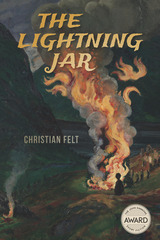 The Lightning Jar
Christian Felt
University of Iowa Press, 2018 The Lightning Jar is about lonely children. It may be more about lonely children than any other book. These children are good at making imaginary friends but have trouble keeping them. For instance, there’s the Morra, who plunges the world into eternal winter. But she also teaches Mons the meaning of love and helps him burn down his house after some Gypsies turn it into a middle school. Then there’s the Gorbel. Amanda invented it to scare the Guest, but it ended up liking him best. A bit like a cat but more like a spider, it turned out a lot cuter than she’d intended. And the Wisps—they’re pretty unhappy about being dead. Karl accidentally turned his smallest cousin into a Wisp. They were trying to catch some lightning in a jar, but they caught the smallest cousin’s ghost instead. Karl had to drown it for its own good. Something similar happened with his grandma Astrid and a rock named Melisande. But the loneliest character is probably Christian. He insists on being from Jämtland, where Karl and Amanda live. When his cousin Eskild got married, Christian rewrote their past so it’s like The Little Mermaid, except Eskild drowns and Christian doesn’t earn a soul. In the spirit of Tove Jansson, William Blake, and Calvin & Hobbes, The Lightning Jar contains a volatile mix of innocence and experience, faith and doubt, nostalgia and a sense of all there is to gain by accepting reality on fresh terms.
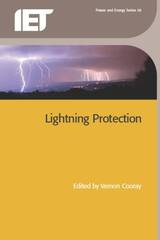 Lightning Protection
Vernon Cooray
The Institution of Engineering and Technology, 2009 Lightning is a natural phenomenon that has always fascinated humans. It is also a destructive force, and the science of protecting humans and their belongings on earth is called lightning protection. This book provides the reader with a thorough background in almost every aspect of lightning protection. The contents of the book, distributed over 23 chapters, covers all aspects of lightning protection including lightning parameters of engineering interest, the evaluation of the risk imposed by lightning strikes, the art of installing lightning protection systems on various structures, basic principles and procedures necessary to protect electronic equipment in buildings from lightning flashes, grounding in lightning protection, the function of surge protection devices, protection of power transmission lines and telecommunication towers from lightning, the interaction of lightning flashes with wind turbines, various aspects of lightning strikes to trees, medical and engineering aspects of lightning strikes to humans, and lightning warning systems. In addition to providing essential information on lightning protection for engineers and scientists, the book is intended for use as a textbook on lightning protection at both undergraduate and postgraduate level.
The Lightning Stick: Arrows, Wounds, And Indian Legends
H. Henrietta Stockel
University of Nevada Press, 1995 More than simply a history of the bow and arrow, The Lightening Stick brings together a broad range of significant people and events, spiritual usages, medicinal treatments, and an unusual array of subject matter related to the weapon itself. Henrietta Stockel conveys a host of information derived from primary documents and provides readers with a fascinating book. Her descriptive storytelling—serious, humorous, and even gory at times—takes the reader from modern uses of bows and arrows (including a previously little-known incident in the atomic city of Los Alamos, New Mexico) to an early era of western history, before guns changed the frontier forever.
The Lightning That Strikes the Neighbors’ House
Nick Lantz
University of Wisconsin Press, 2010 Nick Lantz explores the transformative power of tragic and miraculous experiences, through these poems that illuminate near misses of tragedy and transcendence. His gaze is both roving and microscopic—the Challenger explosion, Bigfoot, a love letter written from inside a missile silo, a mother naming and re-naming a family’s short-lived pets, and a plea for post-9/11 redemption. Lantz never lets his subjects or his readers off the hook, plunging head first into worlds that are both eccentric and familiar, alarming and hopeful.
Finalist, Foreword Magazine’s Poetry Book of the Year
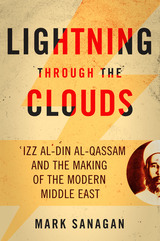 Lightning through the Clouds: ?Izz al-Din al-Qassam and the Making of the Modern Middle East
By Mark Sanagan
University of Texas Press, 2020 Lightning through the Clouds is the first English-language life-and-times biography of ‘Izz al-Din al-Qassam, a preeminent figure who helped to reshape the political and religious landscape of the region. A Syrian-born, Egyptian-educated cleric, he went from the battlefields of World War I to join the anticolonialist fight against the French in Syria. Sentenced to be executed by the French military, he managed to escape to Palestine, where he became an increasingly popular presence, moved by the plight of the poor and disenfranchised. Outraged by British rule and the encroachment of Zionism, he formed a secret society to resist the colonization of Palestine first by the British and then by Jewish immigrants from Europe, once again taking up arms and advocating for a moral, political, and military jihad as the only solution. His death at the hands of Palestine Police in 1935 drew thousands to his funeral and sparked the 1936–1939 Arab Revolt. His influence continues to be felt in the region; for example, the military wing of the Palestinian Hamas organization is named the ‘Izz al-Din al-Qassam Brigades. Al-Qassam is either revered or reviled, depending on the observers’ perspective, but he is without doubt a fascinating and historically significant individual whose influence on the past, and our present, makes this examination of his life both important and timely.
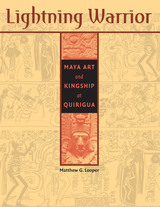 Lightning Warrior: Maya Art and Kingship at Quirigua
By Matthew G. Looper
University of Texas Press, 2003 The ancient Maya city of Quirigua occupied a crossroads between Copan in the southeastern Maya highlands and the major centers of the Peten heartland. Though always a relatively small city, Quirigua stands out because of its public monuments, which were some of the greatest achievements of Classic Maya civilization. Impressive not only for their colossal size, high sculptural quality, and eloquent hieroglyphic texts, the sculptures of Quirigua are also one of the few complete, in situ series of Maya monuments anywhere, which makes them a crucial source of information about ancient Maya spirituality and political practice within a specific historical context. Using epigraphic, iconographic, and stylistic analyses, this study explores the integrated political-religious meanings of Quirigua's monumental sculptures during the eighth-century A.D. reign of the city's most famous ruler, K'ak' Tiliw. In particular, Matthew Looper focuses on the role of stelae and other sculpture in representing the persona of the ruler not only as a political authority but also as a manifestation of various supernatural entities with whom he was associated through ritual performance. By tracing this sculptural program from its Early Classic beginnings through the reigns of K'ak' Tiliw and his successors, and also by linking it to practices at Copan, Looper offers important new insights into the politico-religious history of Quirigua and its ties to other Classic Maya centers, the role of kingship in Maya society, and the development of Maya art.
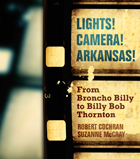 Lights! Camera! Arkansas!: From Broncho Billy to Billy Bob Thornton
Robert Cochran
University of Arkansas Press, 2015 Lights! Camera! Arkansas! traces the roles played by Arkansans in the first century of Hollywood’s film industry, from the first cowboy star, Broncho Billy Anderson, to Mary Steenburgen, Billy Bob Thornton, and many others. The Arkansas landscape also plays a starring role: North Little Rock’s cameo in Gone with the Wind, Crittenden County as a setting for Hallelujah (1929), and various locations in the state’s southeastern quadrant in 2012’s Mud are all given fascinating exploration. Robert Cochran and Suzanne McCray screened close to two hundred films—from laughable box-office bombs to laudable examples of filmmaking -- in their research for this book. They’ve enhanced their spirited chronological narrative with an appendix on documentary films, a ratings section, and illustrations chosen by Jo Ellen Maack of the Old State House Museum, where Lights! Camera! Arkansas! debuted as an exhibit curated by the authors in 2013. The result is a book sure to entertain and inform those interested in Arkansas and the movies for years to come.
Lights in Cold Rooms: A Psychologist Reflects on Family, Aging, Love & Loss
Joan Cusack Handler
CavanKerry Press, 2025 An honest account of depression from poet and psychologist Joan Cusack Handler.
Lights in Cold Rooms shares Joan Cusack Handler’s personal experiences with depression as a licensed psychologist with forty years of experience treating patients. For many, including Handler, quarantine precluded the preferred treatment of psychotherapy. Handler turned to her own pathology to teach herself and others how to navigate both isolation and depression. Feelings of anxiousness and impending mortality intensified as she faced the death of her older sister and grappled with the guilt that erupted when she learned that an in-person memorial service was impossible. Opening both her personal history and pathology to public view, Handler chronicles her confrontation with eighty years of family dynamics and explores the path she took to return to a place of hope.
Lights in the Forest: Rabbis Respond to Twelve Essential Jewish Questions
Rabbi Paul Citrin
Central Conference of American Rabbis, 2014 An anthology of essays written by a wide cross-section of rabbis, Lights in the Forest presents a range of Jewish responses to both theological and philosophical questions pertaining to God, humanity, and the Jewish people. Thoughtful and engaging, these responses are meant to strengthen the reader's sense of Jewish identity through expanding his or her knowledge and understanding of Jewish life, practice, and tradition.
Perfect for self-study, group study, adult learning, and conversion, the collection strives to encourage further study and ongoing discussion through presenting Judaism's intellectual and spiritual tools as means for leading a life full of purpose and commitment.
Questions addressed by the anthology can found below:
-Questions about God
-Questions about Our Humanity
-Questions about the Jewish People
Lightwork: Texts on and from Collaborative Multimedia Theatre
Edited by Alex Mermikides and Andy Lavender
Intellect Books, 2021 Insight into the collaborative, multi-layered, and sometimes messy business of theater.
The artist-led theater company Lightwork specializes in collaborative multimedia performance. The company experimented with several performance forms that emerged at the turn of the twenty-first century including devised and improvisation-led approaches. This volume brings together performance texts from nine productions by Lightwork and one play-text from Lightwork’s precursor company Academy Productions. The twelve-year span covered by the work reflects a period in British performance practice when the interrelation of page and stage, process and production, and text and “non-text” were being radically rethought.
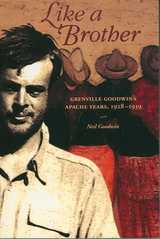 Like a Brother: Grenville Goodwin’s Apache Years, 1928-1939
Neil Goodwin
University of Arizona Press, 2004 When the anthropologist Grenville Goodwin died in 1940 at the age of 32, he had published several papers and one book, Myths and Tales of the White Mountain Apache, and had already achieved a stature that has only continued to grow. His posthumous landmark monograph, The Social Organization of the Western Apache, was hailed by anthropologist Edward Spicer as "one of the most detailed and best-documented studies of Indian social organization". Yet, although he was highly regarded by colleagues within the profession, Goodwin himself was largely self-taught, with neither formal training nor academic degrees. This volume is the latest in series of books derived from his unpublished papers. It helps broaden our understanding of Goodwin's life and work. It includes selections from his field notes, diaries, and letters, along with those of his wife Jan and other family members.
Assembled by Goodwin's son Neil, who never knew his father, these writings are gathered in thematic chapters that extend Neil Goodwin's earlier work, The Apache Diaries, and shed light on Grenville Goodwin's deepening understanding of the Apache people and their culture, and of the wrenching problems which reservation life forced on them. In two of the chapters Neil tells how he retraced his father's search for the Sierra Madre Apache, re-discovering abandoned Apache campsites and conveying even more personally than his father's diaries what was for both father and son the adventure of a lifetime. Other chapters trace Goodwin's interest in children of the Sierra Madre Apaches who were captured in Mexican raids on these camps during the early decades of the twentieth century. The full stories of the lives of three of these children are for the first time pieced together from newly gathered research.
Grenville was quiet, self-effacing and rarely revealed his inner life, but one chapter affords a closer look: a portrait of his marriage to Neil's mother, Jan. Her diary entries, juxtaposed with her vivid poetry and her paintings and drawings, illuminate her relationship with Grenville and throw his elusive personality into deeper relief than his own writings do. Here too are letters from Goodwin's Apache friends that paint a powerful and poignant portrait of their daily lives and of their relationship with him. Goodwin's daily diary excerpts relate his own experiences on the San Carlos Apache reservation from 1928 to 1936: what was happening at the store, how the cattle were doing, who was in jail, and thousands of other details that give readers a sharp sense of what the reservation was like in the 1930s. As these writings also show, Goodwin was powerfully drawn to Apache spirituality and became steeped in their sacred knowledge. His simple description of a day in the life of an Apache family captures the expression of this spirituality in the rhythms of everyday life, whether greeting the rising sun, curing an injury, plowing the earth, or simply being good to one's family.
More than half a century after his death, Grenville Goodwin continues to be regarded as one of the most enigmatic and romantic figures in American anthropology. Like a Brother gives us a fuller understanding of the man and his work as it broadens our knowledge of Apache history and culture.
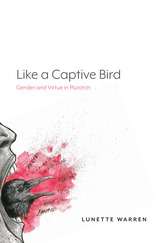 Like a Captive Bird: Gender and Virtue in Plutarch
Lunette Warren
Lever Press, 2023 The full extent of Plutarch’s moral educational program remains largely understudied, at least in those aspects pertaining to women and the gendered other. As a result, scholarship on his views on women have differed significantly in their conclusions, with some scholars suggesting that he is overwhelmingly positive towards women and marriage and perhaps even a “precursor to feminism,” and others arguing that he was rather negative on the issue. Like a Captive Bird: Gender and Virtue in Plutarch is an examination of these educational methods employed in Plutarch’s work to regulate the expression of gender identity in women and men. In six chapters, author Lunette Warren analyzes Plutarch’s ideas about women and gender in Moralia and Lives. The book examines the divergences between real and ideal, the aims and methods of moral philosophy and psychagogic practice as they relate to identity formation, and Plutarch’s theoretical philosophy and metaphysics. Warren argues that gender is a flexible mode of being that expresses a relation between body and soul, and that gender and virtue are inextricably entwined. Plutarch’s expression of gender is also an expression of a moral condition that signifies relationships of power, Warren claims, especially power relationships between the husband and wife. Uncovered in these texts is evidence of a redistribution of power, which allows some women to dominate other women and, in rare cases, men too. Like a Captive Bird offers a unique and fresh interpretation of Plutarch’s metaphysics which centers gender as one of the organizational principles of nature. It is aimed at scholars of Plutarch, ancient philosophy, and ancient gender studies, especially those who are interested in feminist studies of antiquity.
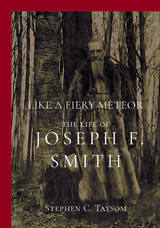 Like a Fiery Meteor: The Life of Joseph F. Smith
Stephen C. Taysom
University of Utah Press, 2023 Joseph F. Smith was born in 1838 to Hyrum Smith and Mary Fielding Smith. Six years later both his father and his uncle, Joseph Smith Jr., the founding prophet of the Church of Jesus Christ of Latter-day Saints, were murdered in Carthage, Illinois. The trauma of that event remained with Joseph F. for the rest of his life, affecting his personal behavior and public tenure in the highest tiers of the LDS Church, including the post of president from 1901 until his death in 1918. Joseph F. Smith laid the theological groundwork for modern Mormonism, especially the emphasis on temple work. This contribution was capped off by his “revelation on the redemption of the dead,” a prophetic glimpse into the afterlife. Taysom’s book traces the roots of this vision, which reach far more deeply into Joseph F. Smith’s life than other scholars have previously identified.
In this first cradle-to-grave biography of Joseph F. Smith, Stephen C. Taysom uses previously unavailable primary source materials to craft a deeply detailed, insightful story of a prominent member of a governing and influential Mormon family. Importantly, Taysom situates Smith within the historical currents of American westward expansion, rapid industrialization, settler colonialism, regional and national politics, changing ideas about family and masculinity, and more. Though some writers tend to view the LDS Church and its leaders through a lens of political and religious separatism, Taysom does the opposite, pushing Joseph F. Smith and the LDS Church closer to the centers of power in Washington, DC, and elsewhere.
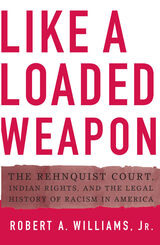 Like a Loaded Weapon: The Rehnquist Court, Indian Rights, and the Legal History of Racism in America
Robert Williams Jr.
University of Minnesota Press, 2005 Robert A. Williams Jr. boldly exposes the ongoing legal force of the racist language directed at Indians in American society. Fueled by well-known negative racial stereotypes of Indian savagery and cultural inferiority, this language, Williams contends, has functioned “like a loaded weapon” in the Supreme Court’s Indian law decisions.
Beginning with Chief Justice John Marshall’s foundational opinions in the early nineteenth century and continuing today in the judgments of the Rehnquist Court, Williams shows how undeniably racist language and precedent are still used in Indian law to justify the denial of important rights of property, self-government, and cultural survival to Indians. Building on the insights of Malcolm X, Thurgood Marshall, and Frantz Fanon, Williams argues that racist language has been employed by the courts to legalize a uniquely American form of racial dictatorship over Indian tribes by the U.S. government.
Williams concludes with a revolutionary proposal for reimagining the rights of American Indians in international law, as well as strategies for compelling the current Supreme Court to confront the racist origins of Indian law and for challenging bigoted ways of talking, thinking, and writing about American Indians.
Robert A. Williams Jr. is professor of law and American Indian studies at the James E. Rogers College of Law, University of Arizona. A member of the Lumbee Indian Tribe, he is author of The American Indian in Western Legal Thought: The Discourses of Conquest and coauthor of Federal Indian Law.
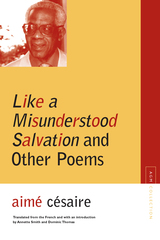 Like a Misunderstood Salvation and Other Poems
Aime Cesaire
Northwestern University Press, 2013 Annette Smith and Dominic Thomas’s new translations of Aimé Césaire’s Like a Misunderstood Salvation and Solar Throat Slashed (poems deleted) expose to a new audience a pivotal figure in twentieth-century French literature. This collection presents the early and last stages of a poet’s course, encapsulating in one volume Césaire’s entire literary career and creative evolution as perhaps the only French poet writing simultaneously at the crossroads of the avant-garde and classical movements.
This volume’s inclusion of previously deleted poems from Solar Throat Slashed is politically important; despite their initial exclusion from a French republication of Soleil Cou Coupé in 1961, these thirty-one poems are crucial to understanding Césaire’s legacy and remain of tremendous pertinence today as they provide helpful ways of thinking about and contextualizing discussions on race, identity, global identities, and the links between “black consciousness” and “social consciousness.”
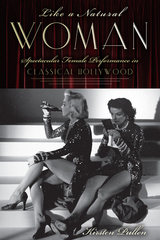 Like a Natural Woman: Spectacular Female Performance in Classical Hollywood
Pullen, Kirsten
Rutgers University Press, 2014 Bathing beauty Esther Williams, bombshell Jane Russell, exotic Carmen Miranda, chanteuse Lena Horne, and talk-show fixture Zsa Zsa Gabor are rarely hailed as great actors or as naturalistic performers. Those terms of praise are given to male stars like Marlon Brando and James Dean, whose gritty dramas are seen as a departure from the glossy spectacles in which these stars appeared. Like a Natural Woman challenges those assumptions, revealing the skill and training that went into the work of these five actresses, who employed naturalistic performance techniques, both onscreen and off.
Bringing a fresh perspective to film history through the lens of performance studies, Kirsten Pullen explores the ways in which these actresses, who always appeared to be “playing themselves,” responded to the naturalist notion that actors should create authentic characters by drawing from their own lives. At the same time, she examines how Hollywood presented these female stars as sex objects, focusing on their spectacular bodies at the expense of believable characterization or narratives.
Pullen not only helps us appreciate what talented actresses these five women actually were, but also reveals how they sought to express themselves and maintain agency, even while meeting the demands of their directors, studios, families, and fans to perform certain feminine roles. Drawing from a rich collection of classic films, publicity materials, and studio archives, Like a Natural Woman lets us take a new look at both Hollywood acting techniques and the performance of femininity itself.
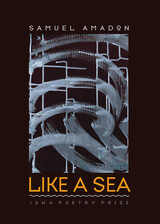 Like a Sea
Samuel Amadon
University of Iowa Press, 2010 Drawing equally from Wallace Stevens, Gertrude Stein, John Berryman, and Robert Frost, Samuel Amadon’s award-winning Like a Sea is a collection of poems where personality is foregrounded and speech is both bizarre and familiar. Central to this weirdly talky work is “Each H,” a sequence of eleven monologues and dialogues wherein an unknown number of speakers examine their collective and singular identities while simultaneously distorting them. From a sequence of pared-down sonnets to a more traditional lyric to a procedural collage inspired by J. D. Salinger, Ezra Pound, Robert Lowell, Walter Benjamin, Jane Kenyon, Joris-Karl Huysmans, Primo Levi, Eugenio Montale, and Edwin Arlington Robinson, Like a Sea is a book of significant variation and originality.
Amadon’s electric collection begins with the line “I could not sound like anyone but me,” and through a wide range of forms and styles and voices he tests the true limits of that statement. The image of a half-abandoned Hartford, Connecticut, remains in the background of these poems, casting a tone of brokenness and haplessness. Ultimately Amadon’s poems present the confusion and fear of the current moment, of Stevens’s “river that flows nowhere, like a sea,” equally alongside its joyful ridiculousness and possibility. Rather than create worlds, they point out what a strange world already exists.
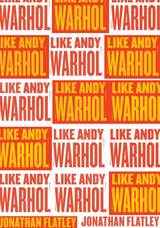 Like Andy Warhol
Jonathan Flatley
University of Chicago Press, 2017 Scholarly considerations of Andy Warhol abound, including very fine catalogues raisonné, notable biographies, and essays in various exhibition catalogues and anthologies. But nowhere is there an in-depth scholarly examination of Warhol’s oeuvre as a whole—until now.
Jonathan Flatley’s Like Andy Warhol is a revelatory look at the artist’s likeness-producing practices, not only reflected in his famous Campbell’s soup cans and Marilyn Monroe silkscreens but across Warhol’s whole range of interests including movies, drag queens, boredom, and his sprawling collections. Flatley shows us that Warhol’s art is an illustration of the artist’s own talent for “liking.” He argues that there is in Warhol’s productions a utopian impulse, an attempt to imagine new, queer forms of emotional attachment and affiliation, and to transform the world into a place where these forms find a new home. Like Andy Warhol is not just the best full-length critical study of Warhol in print, it is also an instant classic of queer theory.
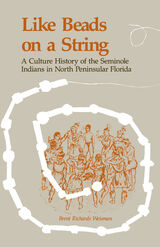 Like Beads on a String: A Culture History of the Seminole Indians in North Peninsular Florida
Brent Richards Weisman
University of Alabama Press, 1989 Florida's Seminole Indians are exerting an ever increasing influence on crucial issues in state politics, economy, and law. From a position of near obscurity less than a century ago, these Native Americans have staged a remarkable comeback to take an active hand in shaping Florida society, present and future. Anthropologists have long been fascinated with the Seminoles and have often remarked upon their ability to adapt to new circumstances while preserving the core features of their traditional culture. Early observers of the Seminoles also commented on the dynamic tension that existed for the individual, clan, and tribe, that drew them together, "like beads on a string," into a resilient and viable society. This study traces the emergence of these qualities in the late prehistoric and early historic period in the Southeast and demonstrates their influence on the course of Seminole culture history.
Like Bits of Wind: Selected Poetry and Poetic Prose, 1974-2014
Pierre Chappuis
Seagull Books, 2016 One of the central figures from a remarkable generation of French-language poets, Pierre Chappuis has thus far only been represented in English translation in fragments: a few poems here and there in magazines, online reviews, and anthologies. Like Bits of Wind rights that wrong, offering a generous selection of Chappuis’s poetry and prose from the past forty years, drawn from several of his books. In these pages, Chappuis delves into long-standing questions of the essence of life, our relationship to landscape, the role of the perceiving self, and much more. His skeletal, haiku-like verse starkly contrasts with his more overtly poetic prose, which revels in sinuous lines and interpolated parentheticals. Together, the different forms are invigorating and exciting, the perfect introduction for English-language readers.
 Like Blood in Water: Five Mininovels
Yuriy Tarnawsky
University of Alabama Press, 2007 A surrealist account of the creative and descriptive arts. In these five surrealist collages, waking life continually gives way before the onslaught of dreams. Yuriy Tarnawsky has condensed the vastness of scope typical of novels into shorter fragments—mininovels—that require the reader’s active participation. The tone is a balance of dead-pan comedy and solemn gothic, sometimes a near-parody of wide-eyed candor, sometimes recounting utterly mad or barely conceivable states of affairs.
A candidate for major surgery struggles unsuccessfully to avoid it. Two strangers meet, and eventually marry, after participating in scream therapy. A pianist stops playing because he believes his hand is not there when he sits at the keyboard. A character sees the giant blue and white flowers he has craved his whole life only at the instance of his electrocution. Tyler Pavarotti, a tailor, voluntarily takes a role in a production in which he will be killed.
Tarnawsky’s language is elegant and careful, and his studied concentration of rhythm allows his work to transcend prose, nestling somewhere within the realm of musical composition. Both tragic and beautiful, in these stories life dissolves in time like blood in water.
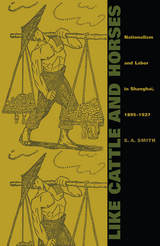 Like Cattle and Horses: Nationalism and Labor in Shanghai, 1895-1927
S. A. Smith
Duke University Press, 2002 In Like Cattle and Horses Steve Smith connects the rise of Chinese nationalism to the growth of a Chinese working class. Moving from the late nineteenth century, when foreign companies first set up factories on Chinese soil, to 1927, when the labor movement created by the Chinese Communist Party was crushed by Chiang Kai-shek, Smith uses a host of documents—journalistic accounts of strikes, memoirs by former activists, police records—to argue that a nationalist movement fueled by the effects of foreign imperialism had a far greater hold on working-class identity than did class consciousness.
While the massive wave of labor protest in the 1920s was principally an expression of militant nationalism rather than of class consciousness, Smith argues, elements of a precarious class identity were in turn forged by the very discourse of nationalism. By linking work-related demands to the defense of the nation, anti-imperialist nationalism legitimized participation in strikes and sensitized workers to the fact that they were worthy of better treatment as Chinese citizens. Smith shows how the workers’ refusal to be treated “like cattle and horses” (a phrase frequently used by workers to describe their condition) came from a new but powerfully felt sense of dignity. In short, nationalism enabled workers to interpret the anger they felt at their unjust treatment in the workplace in political terms and to create a link between their position as workers and their position as members of an oppressed nation. By focusing on the role of the working class, Like Cattle and Horses is one of very few studies that examines nationalism “from below,” acknowledging the powerful agency of nonelite forces in promoting national identity.
Like Cattle and Horses will interest historians of labor, modern China, and nationalism, as well as those engaged in the study of revolutions and revolt.
 Like Clockwork: Steampunk Pasts, Presents, and Futures
Rachel A. Bowser
University of Minnesota Press, 2016 Co-winner, Ray & Pat Browne Award for Best Edited Collection in Popular Culture and American Culture
Once a small subculture, the steampunk phenomenon exploded in visibility during the first years of the twenty-first century, its influence and prominence increasing ever since. From its Victorian and literary roots to film and television, video games, music, and even fashion, this subgenre of science fiction reaches far and wide within current culture. Here Rachel A. Bowser and Brian Croxall present cutting-edge essays on steampunk: its rise in popularity, its many manifestations, and why we should pay attention. Like Clockwork offers wide-ranging perspectives on steampunk’s history and its place in contemporary culture, all while speaking to the “why” and “why now” of the genre. In her essay, Catherine Siemann draws on authors such as William Gibson and China Miéville to analyze steampunk cities; Kathryn Crowther turns to disability studies to examine the role of prosthetics within steampunk as well as the contemporary culture of access; and Diana M. Pho reviews the racial and national identities of steampunk, bringing in discussions of British chap-hop artists, African American steamfunk practitioners, and multicultural steampunk fan cultures. From disability and queerness to ethos and digital humanities, Like Clockwork explores the intriguing history of steampunk to evaluate the influence of the genre from the 1970s through the twenty-first century. Contributors: Kathryn Crowther, Perimeter College at Georgia State University; Shaun Duke, University of Florida; Stefania Forlini, University of Calgary (Canada); Lisa Hager, University of Wisconsin–Waukesha; Mike Perschon, MacEwan University in Edmonton, Alberta; Diana M. Pho; David Pike, American University; Catherine Siemann, New Jersey Institute of Technology; Joseph Weakland, Georgia Institute of Technology; Roger Whitson, Washington State University.
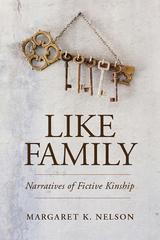 Like Family: Narratives of Fictive Kinship
Margaret K. Nelson
Rutgers University Press, 2020 For decades, social scientists have assumed that “fictive kinship” is a phenomenon associated only with marginal peoples and people of color in the United States. In this innovative book, Nelson reveals the frequency, texture and dynamics of relationships which are felt to be “like family” among the white middle-class. Drawing on extensive, in-depth interviews, Nelson describes the quandaries and contradictions, delight and anxiety, benefits and costs, choice and obligation in these relationships. She shows the ways these fictive kinships are similar to one another as well as the ways they vary—whether around age or generation, co-residence, or the possibility of becoming “real” families. Moreover she shows that different parties to the same relationship understand them in some similar – and some very different – ways. Theoretically rich and beautifully written, the book is accessible to the general public while breaking new ground for scholars in the field of family studies.
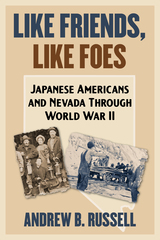 Like Friends, Like Foes: Japanese Americans and Nevada through World War II
Andrew B. Russell
University of Nevada Press, 2026 Like Friends, Like Foes offers a comprehensive analysis of how Nevada residents responded and reacted to the “Japanese Question” during World War II. Both before and during the war, the experience of Japanese American residents of Nevada varied widely. Once the war started, Japanese immigrants experienced an unusual case of mass internment fromthe mining towns of Ruth and McGill, Nevada, while Japanese American railroad workers and their families, scattered across the state, faced sudden layoffs and evictions. At the same time, most of the Japanese Americans living in Nevada fared much better than their counterparts who resided in the surrounding states.
Andrew Russell’s study examines how variations in local history and local circumstances generated starkly different perspectives and responses to the supposed “Japanese problems” confronting Nevada’s small communities, the state, and the larger region. While Russell’s interpretive history spotlights some highly unusual developments, it nevertheless offers fresh evidence of how individuals or small groups can play significant roles in combating the abuse of civil rights during times of fear and uncertainty.
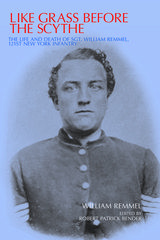 Like Grass before the Scythe: The Life and Death of Sgt. William Remmel 121st New York Infantry
William Remmel
University of Alabama Press, 2007 Uncommonly articulate letters from a young German-American soldier with the Union forces
Sergeant William Remmel was a German immigrant who had settled with his parents and family in far upstate New York. His letters collected in Like Grass before the Scythe cover more than two full years of his service and provide details on military and social history in the eastern theater of operations and on the experience of the home front in upstate New York among a largely immigrant, working-class family and community.
Remmel wrote in English and apparently his parents responded in German. In addition to the important material on an immigrant family’s experience, Remmel also deals with the question of slavery, illness and hospital care (when he was wounded), the problem of hard war/total war, as well as the campaigns of Chancellorsville, Gettysburg, and the Shenandoah Valley in 1864.
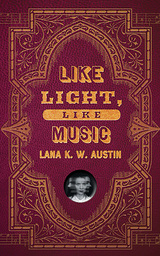 Like Light, Like Music
Lana K. W. Austin
West Virginia University Press, 2020 Emme McLean never imagined that in 1999 she would be living out the lyrics of the ancient murder ballads she grew up singing. But now Emme is back in Red River, Kentucky, using her skills as a journalist to prove her cousin did not kill her husband and to find out what is terrifying the town after many of its women went half-mad on the same night.
But to help her hometown’s haunted women, Emme must also face the things that haunt her, things she thought she had lost when she chose to move away: the majestic music of her family’s beloved hills and hollows, the mysterious old ways of her Appalachian kin, and the memory of her remarkable first love, Evan. Through it all, she must reckon with her magical “mountain gift”—is it real, or merely a unique synesthesia? And can she trust it to help heal her family and her town, a place still plagued by the social injustice that first drove her away? Can she trust it to help heal herself?
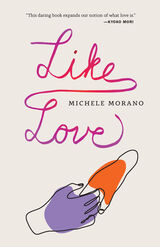 Like Love
Michele Morano
Ohio State University Press, 2020 Longlisted for the PEN/Diamonstein-Spielvogel Award for the Art of the Essay
Crushes. Infatuations. Attractions. Unexpected, inexplicable allure. Entanglements steeped in taboo and disruption. In Like Love, nothing is off limits.
In these remarkable essays, Michele Morano explores the pleasures, possibilities, strangeness, and lessons of unconsummated romance. With insight and imagination, Like Love interweaves poignant, humorous episodes from adulthood with the backstory of a young family’s turbulent breakup. When Morano was an adolescent in blue-collar Poughkeepsie, New York, her mother left her father for a woman in an era when LGBTQ parents were widely viewed as “unfit.” Through the turmoil, adolescent Morano paid attention, tucking away the stories that were shaping her and guiding her understanding of love.
Turning romantic clichés inside out and challenging us to rethink our notions about what it means to love, Like Love tells hard and necessary truths about the importance of desire in growing, traveling, mourning, parenting, and figuring out who you are in the world. With precision and depth, Morano explores what it means to find ourselves in relationships that are not quite—but almost—like love.
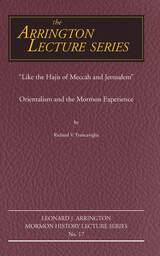 Like the Hajis of Meccah and Jerusalem: Orientalism and the Mormon Experience
Richard Francaviglia
Utah State University Press, 2012 The series, established by one of the twentieth-century West's most distinguished historians, Leonard Arrington, has become a leading forum for prominent historians to address topics related to Mormon history. The first lecturer was Arrington himself. He was followed by Richard Lyman Bushman, Richard E. Bennett, Howard R. Lamar, Claudia L. Bushman, Kenneth W. Godfrey, Jan Shipps, Donald Worster, Laurel Thatcher Ulrich, and F. Ross Peterson. Utah State University hosts the Leonard J. Arrington Mormon History Lecture Series. The University Libraries' Special Collections and Archives houses the Arrington collection. The state's land grant university began collecting records very early, and in the 1960s became a major depository for Utah and Mormon records. Leonard and his wife Grace joined the USU faculty and family in 1946, and the Arringtons and their colleagues worked to collect original diaries, journals, letters, and photographs. Although trained as an economist at the University of North Carolina, Arrington became a Mormon historian of international repute. Working with numerous colleagues, the Twin Falls, Idaho, native produced the classic Great Basin Kingdom: An Economic History of the Latter-day Saints in 1958. Utilizing available collections at USU, Arrington embarked on a prolific publishing and editing career. He and his close ally, Dr. S. George Ellsworth helped organize the Western History Association, and they created the Western Historical Quarterly as the scholarly voice of the WHA. While serving with Ellsworth as editor of the new journal, Arr ington also helped both the Mormon History Association and the independent journal Dialogue get established.
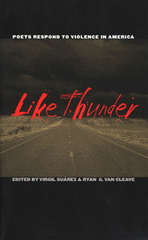 Like Thunder: Poets Respond to Violence in America
Virgil & Ryan G. Suarez & Van Cleave
University of Iowa Press, 2002
More than 140 poems by 120 of America's best poets that focus on the effects of violence in contemporary America.
From Waco to Columbine, from Oklahoma City to New York City, from domestic abuse and drive-by shootings to religious fanaticism and acts of terrorism, the poems in Like Thunder are for those who have perished and those who have survived. More than 140 poems by 120 poets focus, in the editors' words, on “the violence in the news, the violence in our schools, the violence in our homes, as well as the violence in our own minds.”
The poets gathered here articulate terror and suffering but also present images of hope and redemption; they write of individual menaces and individual victims and the melding of the two that potentially exists in everyone. By transforming horrifying details into larger truths, they create a poetry of witness, of survival, and of remembrance.
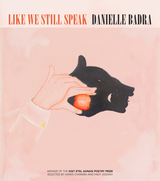 Like We Still Speak
Danielle Badra
University of Arkansas Press, 2021 Winner of the 2021 Etel Adnan Poetry Prize
Conversation and memory are at the heart of Danielle Badra’s Like We Still Speak, winner of the 2021 Etel Adnan Poetry Prize. In her elegiac and formally inventive debut, Badra carries on talking with the sister and father she has lost, often setting her words alongside theirs and others’ in polyphonic poems that can be read in multiple directions. Badra invites the reader to engage in this communal space where she investigates inheritance, witnessing, intimacy, and survival.
“This is a deeply spiritual book, all the more so because of its clarity and humility. Yet, we cannot walk away from the addictive command that so many of these poems ask us to follow: to read them along plural paths whose order changes while their immeasurable spirit remains unbound. Each poem is a singular vessel—of narratives, embodiments that correspond with memories, memories that recollect passion. . . . Like We Still Speak is a sanctum. Inside it, we are enthralled by beauty, consoled by light, sustained by making.”
—Fady Joudah and Hayan Charara, from the Preface
Like What We Imagine: Writing and the University
David Bartholomae
University of Pittsburgh Press, 2021 David Bartholomae has been a prominent figure in the field of composition and rhetoric for almost five decades. This is an end-of-career book, a collection of late essays that reflect on the teaching of reading and writing, on the challenges and value of students’ work, and on the place of English in the university curriculum. The chapters are unified by a thread that connects some of the books and ideas, people and places, students and courses that shaped and sustained his work as a scholar and teacher over time. Several chapters present and discuss extended examples of student writing. The essays trace his formation from the early days of “Basic Writing” to his final engagements with study abroad and travel writing, where he had the chance to think again, and in radically different settings, about the fundamental problems of communication across linguistic and cultural divides.
Likeness
Samsun Knight
University of Iowa Press, 2025 On a summer evening in the 1990s, Anne learns that one of her husband’s lovers is expecting his child, only a few weeks after learning that she too is pregnant. He tells her casually, as if it’s just another colorful story about his day. And the tenuous understanding between them—the careful balance of privacy and flexibility that has sustained their open marriage to date—is shattered. Meanwhile, Sandy, the lover, works to find her own path forward through her surprise pregnancy and all the million tiny miracles and catastrophes that she must now navigate, often entirely on her own. Searching through diaries and grocery lists and seances with the dead, Sandy tries to remember just enough of her original sense of direction to make her own way home.
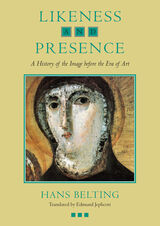 Likeness and Presence: A History of the Image before the Era of Art
Hans Belting
University of Chicago Press, 1993 Before the Renaissance and Reformation, holy images were treated not as "art" but as objects of veneration which possessed the tangible presence of the Holy. In this magisterial book, Hans Belting traces the long history of the sacral image and its changing role in European culture.
Likeness and Presence looks at the beliefs, superstitions, hopes, and fears that come into play as people handle and respond to sacred
images, and presents a compelling interpretation of the place of the image in Western history.
"A rarity within its genre—an art-historical analysis of iconography which is itself iconoclastic. . . . One of the most intellectually exciting and historically grounded interpretations of Christian iconography." —Graham Howes, Times Literary Supplement
"Likeness and Presence offers the best source to survey the facts of what European Christians put in their churches. . . . An impressively detailed contextual analysis of medieval objects." —Robin Cormack, New York Times Book Review
"I cannot begin to describe the richness or the imaginative grandeur of Hans Belting's book. . . . It is a work that anyone interested in art, or in the history of thought about art, should regard as urgent reading. It is a tremendous achievement."—Arthur C. Danto, New Republic
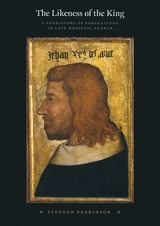 The Likeness of the King: A Prehistory of Portraiture in Late Medieval France
Stephen Perkinson
University of Chicago Press, 2009 Anyone who has strolled through the halls of a museum knows that portraits occupy a central place in the history of art. But did portraits, as such, exist in the medieval era? Stephen Perkinson’s The Likeness of the King challenges the canonical account of the invention of modern portrait practices, offering a case against the tendency of recent scholarship to identify likenesses of historical personages as “the first modern portraits.” Unwilling to accept the anachronistic nature of these claims, Perkinson both resists and complicates grand narratives of portraiture art that ignore historical context. Focusing on the Valois court of France, he argues that local practice prompted shifts in the late medieval understanding of how images could represent individuals and prompted artists and patrons to deploy likeness in a variety of ways. Through an examination of well-known images of the fourteenth- and early fifteenth-century kings of France, as well as largely overlooked objects such as wax votive figures and royal seals, Perkinson demonstrates that the changes evident in these images do not constitute a revolutionary break with the past, but instead were continuous with late medieval representational traditions. “A lively, well-researched, and insightful work of scholarship on late-medieval portraiture and its cultural and intellectual context. The Likeness of the King provides a strong account of late-medieval aesthetics and specific, concrete examples of image-making and the often political needs it served. It offers smart handling of literary, philosophical, and archival sources; close and insightful reading of images; and a willingness to counter received ideas.”—Rebecca Zorach, University of Chicago
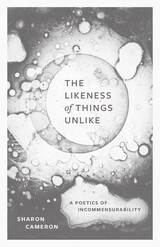 The Likeness of Things Unlike: A Poetics of Incommensurability
Sharon Cameron
University of Chicago Press, 2025 A study of the incommensurable, often discordant elements that define major works of American literature.
In Sharon Cameron’s essays, a magnetic constellation gathers works of Emerson, Whitman, Dickinson, Cather, and Stevens—each manifesting in its own terms “the likeness of things unlike”—to form a loose commonality in a strain of American writing in which incommensurable elements can’t be integrated and can’t be separated. The Likeness of Things Unlike is concerned with discordant elements of an aesthetic work and argues that these elements refigure the aesthetic wholes whose integrity they apparently violate. These intertwined, subversive elements are challenges to literary systems and are essentially philosophical in their rethinking of categories, and thus go beyond the aesthetic particulars that exemplify them.
Cameron is known for rigorously and brilliantly connecting artistic achievement to radical ways of thinking. Georg Lukcás describes the essayist as one who “adapts himself to the essay’s ‘smallness’ of form—the eternal smallness of the most profound work of the intellect in [the] face of life.” With The Likeness of Things Unlike Cameron powerfully demonstrates Lukács’s remarkable insight.
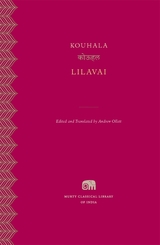 Lilavai
Kouhala
Harvard University Press, 2021 Women’s voices and their desires are in the spotlight in this celebrated ninth-century Prakrit romance, set in modern-day coastal Andhra Pradesh.
The Prakrit romance Lilavai, an early ninth-century poem attributed to Kouhala and set in modern-day coastal Andhra Pradesh, is the most celebrated work in the genre. Complexly narrated in the alternating voices of its heroines and heroes and featuring a cast of semi-divine and magical beings, it centers on three young women: Lilavai, princess of Sinhala (today’s Sri Lanka); her cousin Mahanumai, princess of the mythical city Alaka; and Kuvalaavali, Mahanumai’s adopted sister. Following a prophecy that Lilavai’s husband will rule the earth, the princess happens upon a portrait of King Hala of Pratishthana and immediately falls in love. While journeying to meet him, she hears her cousins’ tales of their lost loves, and then vows not to marry until they are reunited. To win Lilavai’s hand, King Hala journeys to the underworld, faces monsters, and overcomes armies.
Lilavai explores themes of karma and female desire, notably privileging women as storytellers. A new edition of the Prakrit text, presented in the Devanagari script, accompanies a new English prose translation.
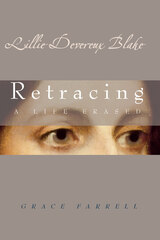 Lillie Devereux Blake: Retracing a Life Erased
Grace Farrell
University of Massachusetts Press, 2002 Fiction writer, journalist, and essayist, Lillie Devereux Blake (1833–1913) published seven novels, two collections of stories and essays, and hundreds of other pieces during her lifetime. She also played a major role in the struggle for women's rights, eventually becoming Elizabeth Cady Stanton's candidate to succeed Susan B. Anthony as president of the National American Woman Suffrage Association.
Yet for all her remarkable accomplishments, Lillie Blake's story has been all but forgotten. As Grace Farrell reveals in this richly textured biography, Blake's creative writings did not survive the canonical purges of women authors at the turn of the twentieth century, and her contributions to the suffrage movement were simply ignored in the official histories sanctioned by Susan B. Anthony. From the traces that remain, Farrell reconstructs an extraordinary life of passion and purpose. She chronicles Blake's literary career from Civil War correspondent to novelist and provides an inside view of suffrage politics, correcting some long held misconceptions perpetuated by Anthony and her supporters.
At the same time, Farrell expands the generic boundaries of biography by recounting not only a life and the causes of its erasure but also her own process of recovering that life. She brings the reader along with her as she follows Blake's path in the world, touches her diary, reads her letters, and campaigns to prevent Yale University from demolishing Blake's childhood home in New Haven.
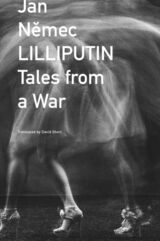 Lilliputin: Tales from a War
Jan Nemec
Seagull Books, 2023 Written in the first four months of the war in Ukraine, fuelled by anger towards mindless violence, Nemec’s stories tackle the present moment and confront what really matters at times of abundant destruction.
A Czech man in Ukraine in search of his alter ego. A gang of homeless kids driven from a cellar by tenants using it as a shelter from the war. A German couple who ‘rented a womb’ in Ukraine, whose child is now stuck in Kyiv. A teenager partnered with a Valkyrie for the distribution of lavash in besieged Mariupol delays his flight until it is too late. A Russian academic mounting a protest in the center of Moscow dressed in a costume from Swan Lake. They may not be soldiers at the front, but for the characters in these stories, life will never again be as it was before the Russian invasion of Ukraine. In this collection of short stories—two set in Ukraine, two in the West, and one in Russia—Czech author Jan Nemec has produced a work of remarkable immediacy.
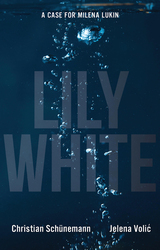 Lily White
Christian Schünemann and Jelena Volic
Haus Publishing, 2021 A thrilling crime novel set in Belgrade that dives into Serbia’s troubled history.
Jelena Volić and Christian Schünemann’s latest thriller follows a case for criminologist Milena Lukin, the protagonist of their previous novels Cornflower Blue and Peony Red. Set in Belgrade, a city of flux between East and West, Lily White is a complex and riveting new story that once again will take Lukin to the dark heart of Serbia’s past.
Bouquets of white lilies are mysteriously laid in a Belgrade street where, years earlier, a small Romani boy was beaten to death by two youths. One of the attackers was apprehended and imprisoned. The other was allowed to flee and, after twenty-five years on the run, he returns to Belgrade to confront his past. Days later, his corpse is found floating in the Danube River. After a cursory investigation, the police declare it to have been suicide and close the case, but the dead man’s lawyer and the criminologist Milena Lukin begin an investigation of their own. They soon stumble upon a clue that leads them into the darkest recesses of Serbian politics and to the root of a murder that shaped the fate of a country.
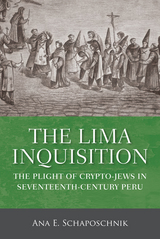 The Lima Inquisition: The Plight of Crypto-Jews in Seventeenth-Century Peru
Ana E. Schaposchnik
University of Wisconsin Press, 2017 Established in Peru in 1570, the Holy Office of the Inquisition operated there until 1820, prosecuting, torturing, and sentencing alleged heretics. Ana Schaposchnik offers a deeply researched history of the Inquisition's tribunal in the capital city of Lima, with a focus on cases of crypto-Judaism—the secret adherence to Judaism while publicly professing Christianity.
Delving into the records of the tribunal, Schaposchnik brings to light the experiences of individuals on both sides of the process. Some prisoners, she discovers, developed a limited degree of agency as they managed to stall trials or mitigate the most extreme punishments. Training her attention on the accusers, Schaposchnik uncovers the agendas of specific inquisitors in bringing the condemned from the dungeons to the 1639 Auto General de Fe ceremony of public penance and execution. Through this fine-grained study of the tribunal's participants, Schaposchnik finds that the Inquisition sought to discipline and shape culture not so much through frequency of trials or number of sentences as through the potency of individual examples.
The Lima Reader: History, Culture, Politics
Carlos Aguirre and Charles F. Walker, editors
Duke University Press, 2017 Covering more than 500 years of history, culture, and politics, The Lima Reader seeks to capture the many worlds and many peoples of Peru’s capital city, featuring a selection of primary sources that consider the social tensions and cultural heritages of the “City of Kings.”
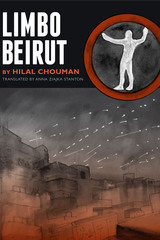 Limbo Beirut
By Hilal Chouman
Translated by Anna Ziajka Stanton
University of Texas Press, 2016 In Hilal Chouman’s Limbo Beirut, a gay artist, a struggling novelist, a pregnant woman, a disabled engineering student, a former militia member, and a medical intern all take turns narrating the violent events of May 2008, when Hezbollah militants and Sunni fighters clashed in the streets of Beirut. For most of these young men and women, the Lebanese Civil War (1975–1990) is but a vague recollection, but the brutality of May 2008 serves to reawaken forgotten memories and stir up fears of a revival of sectarian violence. Yet despite these fears, the violence these characters witness helps them to break free from the mundane details of their lives and look at the world anew. The multiple narrative voices and the dozens of pen-and-ink illustrations that accompany the text allow Chouman to achieve a mesmerizing cinematic quality with this novel that is unique in modern Arabic fiction. Not only will readers appreciate the meaningful exploration of the effects of violence on the psyche, but they will also enjoy discovering how the lives of these characters—almost all of whom are strangers to one another—intersect in surprising ways.
A Liminal Life: A Medium's Memoir
Antoinette "Tiyi" Schippers
Parkhurst Brothers, Inc., 2023 Book Two of the Gatekeeper Series explores the author's early encounters with angels, allies, and adversaries. She grew up in a house where the veil was remarkably permeable, exposing her and several other family members to multiple spirits. Her formative years were filled with experiences of both the physical and unseen worlds, enabling her to discover how to unlock the wholeness of reality both seen and unseen. This extraordinary, true story tells of many unusual circumstances that propelled her on her path to becoming a gatekeeper; one who holds a key to unlock the nature of the world in its entirety, both corporeal and intangible.
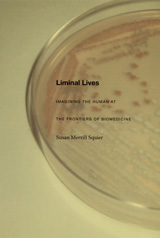 Liminal Lives: Imagining the Human at the Frontiers of Biomedicine
Susan Merrill Squier
Duke University Press, 2004 Embryo adoptions, stem cells capable of transforming into any cell in the human body, intra- and inter-species organ transplantation—these and other biomedical advances have unsettled ideas of what it means to be human, of when life begins and ends. In the first study to consider the cultural impact of the medical transformation of the entire human life span, Susan Merrill Squier argues that fiction—particularly science fiction—serves as a space where worries about ethically and socially charged scientific procedures are worked through. Indeed, she demonstrates that in many instances fiction has anticipated and paved the way for far-reaching biomedical changes. Squier uses the anthropological concept of liminality—the state of being on the threshold of change, no longer one thing yet not quite another—to explore how, from the early twentieth century forward, fiction and science together have altered not only the concept of the human being but the contours of human life. Drawing on archival materials of twentieth-century biology; little-known works of fiction and science fiction; and twentieth- and twenty-first century U.S. and U.K. government reports by the National Institutes of Health, the Parliamentary Advisory Group on the Ethics of Xenotransplantation, and the President’s Council on Bioethics, she examines a number of biomedical changes as each was portrayed by scientists, social scientists, and authors of fiction and poetry. Among the scientific developments she considers are the cultured cell, the hybrid embryo, the engineered intrauterine fetus, the child treated with human growth hormone, the process of organ transplantation, and the elderly person rejuvenated by hormone replacement therapy or other artificial means. Squier shows that in the midst of new phenomena such as these, literature helps us imagine new ways of living. It allows us to reflect on the possibilities and perils of our liminal lives.
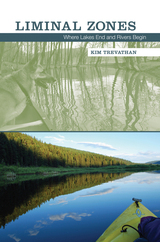 Liminal Zones: Where Lakes End and Rivers Begin
Kim Trevathan
University of Tennessee Press, 2013 After the death of his paddling companion, a German shepherd–labrador retriever mix named Jasper, Kim Trevathan began a series of solitary upstream kayaking quests in search of what he calls “liminal zones,” transitional areas where dammed reservoirs give way to the current of the rivers that feed them. For four years he scoured the rivers and lakes of America, where environmentally damaging, and now decaying, man-made structures have transformed the waterways. In this thoughtful work, he details his upriver adventures, describing the ecological and aesthetic differences between a dammed river and a free-flowing river and exploring the implications of what liminal zones represent—a reassertion of pure, unadulterated nature over engineered bodies of water.
Trevathan began by exploring the rivers and creeks of his childhood: the Blood River and Clarks River in western Kentucky. He soon ventured out to the Wolf River, the Big South Fork of the Cumberland, and other waterways in Tennessee. In 2008, he looped around the country with trips to Indiana’s Tippecanoe River, Montana’s Clearwater River, Oregon’s Deschutes and Rogue Rivers, and Colorado’s Dolores River, as well as adventures on such southeastern rivers as the Edisto, the Tellico, and the Nantahala. To Trevathan, paddling upstream became a sort of religion, with a vaporous deity that kept him searching. Each excursion yielded something unexpected, from a near-drowning in the Rogue River to a mysterious fog bank that arose across the Nantahala at midday.
Throughout Liminal Zones, Trevathan considers what makes certain places special, why some are set aside and protected, why others are not, and how free-flowing streams remain valuable to our culture, our history, and our physical and spiritual health. This contemplative chronicle of his journeys by water reveals discoveries as varied and complex as the rivers themselves.
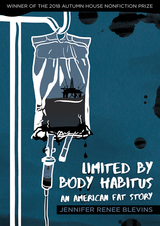 Limited by Body Habitus: An American Fat Story
Jennifer Renee Blevins
Autumn House Press, 2019 Jennifer Renee Blevins’s debut memoir, Limited by Body Habitus: An American Fat Story, sheds light on her experiences living with the emotional and psychological struggles of taking up space in a fat-phobic world. Bringing together experiences of personal and national trauma, Blevins adeptly weaves the tale of her father’s gastric bypass surgery and subsequent prolonged health crisis with the environmental catastrophe of the Deepwater Horizon oil spill. Blevins looks to each of these events as a “leak” of American society’s pitfalls and shortcomings. These intertwined narratives, both disasters that could have been avoided, reveal points of failure in our systems of healthcare and environmental conservation.
Incorporating pieces from her life, such as medical transcripts and quotes from news programs, Blevins composes a mosaic of our modern anxieties. Even through despair, she finds hope in mending broken relationships and shows us how we can flourish as individuals and as a nation despite our struggles. Fierce and haunting, this memoir creates a space of narrative through body, selfhood, family, and country.
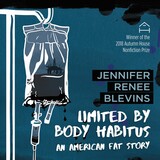 Limited by Body Habitus: An American Fat Story
Jennifer Renee Blevins
Autumn House Press, 2021 Jennifer Renee Blevins’s debut memoir, Limited by Body Habitus: An American Fat Story, sheds light on her experiences living with the emotional and psychological struggles of taking up space in a fat-phobic world. Bringing together experiences of personal and national trauma, Blevins adeptly weaves the tale of her father’s gastric bypass surgery and subsequent prolonged health crisis with the environmental catastrophe of the Deepwater Horizon oil spill. Blevins looks to each of these events as a “leak” of American society’s pitfalls and shortcomings. These intertwined narratives, both disasters that could have been avoided, reveal points of failure in our systems of healthcare and environmental conservation.
Incorporating pieces from her life, such as medical transcripts and quotes from news programs, Blevins composes a mosaic of our modern anxieties. Even through despair, she finds hope in mending broken relationships and shows us how we can flourish as individuals and as a nation despite our struggles. Fierce and haunting, this memoir creates a space of narrative through body, selfhood, family, and country.
 Limited Government and the Bill of Rights
Patrick M. Garry
University of Missouri Press, 2012 Eric Hoffer Award Grand Prize Short List, 2015
What was the intended purpose and function of the Bill of Rights? Is the modern understanding of the Bill of Rights the same as that which prevailed when the document was ratified? In Limited Government and the Bill of Rights, Patrick Garry addresses these questions. Under the popular modern view, the Bill of Rights focuses primarily on protecting individual autonomy interests, making it all about the individual. But in Garry’s novel approach, one that tries to address the criticisms of judicial activism that have resulted from the Supreme Court’s contemporary individual rights jurisprudence, the Bill of Rights is all about government—about limiting the power of government. In this respect, the Bill of Rights is consistent with the overall scheme of the original Constitution, insofar as it sought to define and limit the power of the newly created federal government.
Garry recognizes the desire of the constitutional framers to protect individual liberties and natural rights, indeed, a recognition of such rights had formed the basis of the American campaign for independence from Britain. However, because the constitutional framers did not have a clear idea of how to define natural rights, much less incorporate them into a written constitution for enforcement, they framed the Bill of Rights as limited government provisions rather than as individual autonomy provisions. To the framers, limited government was the constitutional path to the maintenance of liberty. Moreover, crafting the Bill of Rights as limited government provisions would not give the judiciary the kind of wide-ranging power needed to define and enforce individual autonomy.
With respect to the application of this limited government model, Garry focuses specifically on the First Amendment and examines how the courts in many respects have already used a limited government model in their First Amendment decision-making. As he discusses, this approach to the First Amendment may allow for a more objective and restrained judicial role than is often applied under contemporary First Amendment jurisprudence.
Limited Government and the Bill of Rights will appeal to anyone interested in the historical background of the Bill of Rights and how its provisions should be applied to contemporary cases, particularly First Amendment cases. It presents an innovativetheory about the constitutional connection between the principle of limited government and the provisions in the Bill of Rights.
Limited Inc
Jacques Derrida
Northwestern University Press, 1988 Limited Inc is a major work in the philosophy of language by the celebrated French thinker Jacques Derrida. The book's two essays, "Limited Inc" and "Signature Event Context," constitute key statements of the Derridean theory of deconstruction. They are the clearest exposition to be found of Derrida's most controversial idea, that linguistic meaning is fundamentally indeterminate because the contexts that fix meaning are never stable. Limited Inc includes an important new afterword by the author.
Limited Views: Essays on Ideas and Letters
Zhongshu Qian
Harvard University Press, 1998 This translation of 65 pieces from Qian Zhongshu's Guanzhui bian (Limited Views) makes available for the first time in English a representative selection from Qian's massive four-volume collection of essays and reading notes on the classics of early Chinese literature. First published in 1979, it has been hailed as one of the most insightful and comprehensive treatments of themes and motifs in early Chinese writing to appear in this century. Scholar, novelist, and essayist Qian Zhongshu (b. 1910) is arguably contemporary China's foremost man of letters, and Limited Views is recognized as the culmination of his study of literature in both the Chinese and the Western traditions.
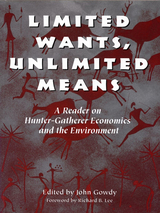 Limited Wants, Unlimited Means: A Reader On Hunter-Gatherer Economics And The Environment
Edited by John Gowdy
Island Press, 1998 For roughly 99% of their existence on earth, Homo sapiens lived in small bands of semi-nomadic hunter-gatherers, finding everything they needed to survive and thrive in the biological richness that surrounded them. Most if not all of the problems that threaten our own technologically advanced society -- from depletion of natural capital to the ever-present possibility of global annihilation -- would be inconceivable to these traditional, immediate-return societies. In fact, hunter-gatherer societies appear to have solved problems of production, distribution, and social and environmental sustainability that our own culture seems incapable of addressing. Limited Wants, Unlimited Means examines the hunter-gatherer society and lifestyle from a variety of perspectives. It provides a brief introduction to the rich anthropological and sociological literature on non-agricultural societies, bringing together in one volume seminal writings on the few remaining hunter-gatherer cultures including, the !Kung, the Hadza, and the Aborigines. It examines the economics of traditional societies, and concludes with a multifaceted investigation of how such societies function and what they can teach us in our own quest for environmental sustainability and social equality. Limited Wants, Unlimited Means is an important work for students of cultural anthropology, economic anthropology, environmental studies, and sustainable development, as well as for professionals, researchers, and anyone interested in prehistoric societies, environmental sustainability, or social justice.
 Limiting Government: An Introduction to Constitutionalism
András Sajó
Central European University Press, 1999 Until the previous decade, constitutionalism in Eastern Europe was considered to be an outmoded concept of the nineteenth century. Changes in the region, however, have brought back the fundamental question of the need to restrict government power through social self-binding. This book discusses the mechanisms of such restriction, including different forms of the separation of powers and constitutional review. It relates the theoretical and practical importance of the issue to the present world-wide discontent with majoritarian democracy and the growing disrepute of parliaments. Increasing executive efficiency is, however, a threat to fundamental rights, and the battlecry of efficiency is often only a means to new despotism and inefficiency. A careful re-evaluation of the concept of constitutionalism assists in the search for a useful balance between majoritarianism and rights, and in the avoidance of all forms of public tyranny. Written in non-technical language and using the most important English, American, French, and German examples of constitutional history, the book also examines East European (in particular, Russian) and Latin American examples, in part to illustrate certain dead-ends in constitutional development. It is intended to be an introduction for all those concerned with liberty.
 Limiting Secularism: The Ethics of Coexistence in Indian Literature and Film
Priya Kumar
University of Minnesota Press, 2008 With a backdrop of religious violence and escalating regional tensions in South Asia, Priya Kumar’s Limiting Secularism probes the urgent topic of secularism and tolerance in Indian culture and life. Kumar explores Partition as the founding trauma of the Indian nation-state and traces the consequences of its marking off of “Indian” from “Pakistani” and the positioning of Indian Muslims as strangers within the nation. Kumar unpacks the implications of the Nehruvian doctrine of tolerance-with all of its resonances of condescension and inequality-and asks whether more ethical cohabitation can replace the “arrogant compulsive tolerance” of the state and the majority. Informed by Jacques Derrida’s recent work on hospitality and living together, Kumar argues for the emergence of an “ethics of coexistence” in Indian fiction and film. Considering narratives ranging from the cosmopolitan English novels of Rushdie and Ghosh to literature in South Asian languages as well as recent Hindi cinema, Kumar demonstrates that these fictions are important resources for reimagining tolerance and coexistence. Distinctive and timely in its investigation of secularism and communalism, Limiting Secularism works to envision the radical possibilities of going beyond tolerance to living well together. Priya Kumar is associate professor of English at the University of Iowa.
 The Limitless City: A Primer on the Urban Sprawl Debate
Oliver Gillham
Island Press, 2002 One of the great debates of our time concerns the predominant form of land use in America today -- the all too familiar pattern of commercial and residential development known as sprawl. But what do we really know about sprawl? Do we know what it is? Where did it come from? Is it really so bad? If so, what are the alternatives? Can anything be done to make it better? The Limitless City offers an accessible examination of those and related questions. Oliver Gillham, an architect and planner with more than twenty-five years of experience in the field, considers the history and development of sprawl and examines current debates about the issue. The book: - offers a comprehensive definition of sprawl in America
- traces the roots of sprawl and considers the factors that led to its preeminence as an urban and suburban form
- reviews both its negative impacts (loss of open space, increased pollution, gridlock) as well as its positive aspects (economic development, personal freedom, privacy)
- considers responses to sprawl including "smart growth," urban growth boundaries, regional planning, and the New Urbanism
- looks at what can be done to improve and counterbalance sprawl
The author argues that whether we like it or not, sprawl is here to stay, and only by understanding where it came from and why it developed will we be able to successfully address the problems it has created and is likely to create in the future. The Limitless City is the first book to provide a realistic look at sprawl, with a frank recognition of its status as the predominant urban form in America, now and into the near future. Rather than railing against it, Gillham charts its probable future course while describing critical efforts that can be undertaken to improve the future of sprawl and our existing urban core areas.
 Limits and Possibilities: The Crisis of Yugoslav Socialism and State Socialist Systems
Bogdan Denitch
University of Minnesota Press, 1990
Limits and Possibilities was first published in 1990. Minnesota Archive Editions uses digital technology to make long-unavailable books once again accessible, and are published unaltered from the original University of Minnesota Press editions.
The nature of the Eastern European Socialist state and its potential for transformation without sacrificing its specific identity is the subject of extensive current debate. Limits and Possibilities is the first book to be written that deals conceptually and historically with the myriad kinds of change a state might undergo. Bogdon Denitch has chosen the Yugoslavian model to frame his analysis because it initiated these "modernizing" changes in the 1960s and can therefore provide a case study of the limits of reforms possible in Communist regimes. In using the Yugoslav case paradigmatically, the volume addresses in a more general sense the issues of decentralization, autonomy for nonparty and nonstate institutions, multi-ethnicity, new social movements, including the "greens," and the role of women and women's movements.
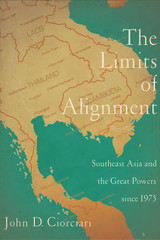 The Limits of Alignment: Southeast Asia and the Great Powers since 1975
John D. Ciorciari
Georgetown University Press, 2011 The Limits of Alignment is an engaging and accessible study that explores how small states and middle powers of Southeast Asia ensure their security in a world where they are overshadowed by greater powers. John D. Ciorciari challenges a central concept in international relations theory—that states respond to insecurity by either balancing against their principal foes, “bandwagoning” with them, or declaring themselves neutral. Instead, he shows that developing countries prefer limited alignments that steer between strict neutrality and formal alliances to obtain the fruits of security cooperation without the perils of undue dependency. Ciorciari also shows how structural and normative shifts following the end of the Cold War and the advent of U.S. primacy have increased the prevalence of limited alignments in the developing world and that these can often place constraints on U.S. foreign policy. Finally, he discusses how limited alignments in the developing world may affect the future course of international security as China and other rising powers gather influence on the world stage.
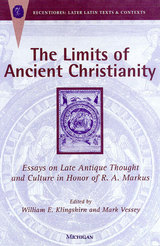 The Limits of Ancient Christianity: Essays on Late Antique Thought and Culture in Honor of R. A. Markus
William E. Klingshirn and Mark Vessey, Editors
University of Michigan Press, 1999 Once considered a period of decline, Late Antiquity (third through eighth centuries C.E.) is now seen as a creative period of transition between the ancient and medieval worlds. Ostensibly an "otherworldly" religion, Christianity became a powerful worldly cultural force. But this power was shaped and severely limited by a large number of factors, including its own highly diverse traditions, scriptures, practices, and theologies.
William Klingshirn and Mark Vessey have assembled some of the most influential scholars in the study of Late Antiquity to test the limits of Christianity. The sixteen essays in this collection investigate the ways in which the concept of "limits" (temporal, spatial, ideological, social, and cultural) can help us to understand the texture of Christianity during this formative period. Taken together, the essays in this volume constitute as yet the most sustained study of cultural transformations evoked by Robert Markus's phrase "the end of ancient Christianity."
This timely volume will interest students of early Christian history and theology, as well as historians of the Roman empire and early middle ages. Because it examines a formative period of western civilization, it will also speak to anyone who wonders why Christianity takes the form it does today.
Contributors include Gerald Bonner, Peter Brown, Virginia Burrus, John Cavadini, Elizabeth Clark, Paula Fredriksen, Sidney Griffith, David Hunter, Conrad Leyser, Paul Meyvaert, Oliver Nicholson, James O'Donnell, Philip Rousseau, Frederick Russell, Carole Straw, and Robert Wilken.
William E. Klingshirn is Associate Professor of Greek and Latin, The Catholic University of America. Mark Vessey is Associate Professor of English, University of British Columbia.
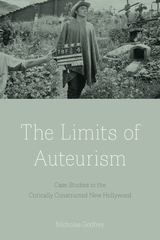 The Limits of Auteurism: Case Studies in the Critically Constructed New Hollywood
Godfrey, Nicholas
Rutgers University Press, 2018 The New Hollywood era of the late 1960s and early 1970s has become one of the most romanticized periods in motion picture history, celebrated for its stylistic boldness, thematic complexity, and the unshackling of directorial ambition. The Limits of Auteurism aims to challenge many of these assumptions. Beginning with the commercial success of Easy Rider in 1969, and ending two years later with the critical and commercial failure of that film’s twin progeny, The Last Movie and The Hired Hand, Nicholas Godfrey surveys a key moment that defined the subsequent aesthetic parameters of American commercial art cinema.
The book explores the role that contemporary critics played in determining how the movies of this period were understood and how, in turn, strategies of distribution influenced critical responses and dictated the conditions of entry into the rapidly codifying New Hollywood canon. Focusing on a small number of industrially significant films, this new history advances our understanding of this important moment of transition from Classical to contemporary modes of production.
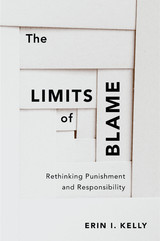 The Limits of Blame: Rethinking Punishment and Responsibility
Erin I. Kelly
Harvard University Press, 2018 Faith in the power and righteousness of retribution has taken over the American criminal justice system. Approaching punishment and responsibility from a philosophical perspective, Erin Kelly challenges the moralism behind harsh treatment of criminal offenders and calls into question our society’s commitment to mass incarceration.
The Limits of Blame takes issue with a criminal justice system that aligns legal criteria of guilt with moral criteria of blameworthiness. Many incarcerated people do not meet the criteria of blameworthiness, even when they are guilty of crimes. Kelly underscores the problems of exaggerating what criminal guilt indicates, particularly when it is tied to the illusion that we know how long and in what ways criminals should suffer. Our practice of assigning blame has gone beyond a pragmatic need for protection and a moral need to repudiate harmful acts publicly. It represents a desire for retribution that normalizes excessive punishment.
Appreciating the limits of moral blame critically undermines a commonplace rationale for long and brutal punishment practices. Kelly proposes that we abandon our culture of blame and aim at reducing serious crime rather than imposing retribution. Were we to refocus our perspective to fit the relevant moral circumstances and legal criteria, we could endorse a humane, appropriately limited, and more productive approach to criminal justice.
 The Limits of Change: Essays on Conservative Alternatives in Republican China
Charlotte Furth
Harvard University Press, 1976 The Limits of Change disputes the impression that the conservative ideas and styles of China's Republican period were neither strong nor persuasive enough to counter the ideas or the revolution of Mao. As the contributors to the book point out, these conservative movements reflected a modern outlook and shared a framework of common concepts with the radical movements they opposed.
In these essays we see the broad range of responses that conservatism in the Republican period took--from a new nativist historical consciousness, to quasi-Fascist theories of political mobilization, to efforts at a revival of Confucianism as a moral faith. Individual writers analyze the early Republican National Essence movement, the new Confucian humanism of the 1920s and afterwards, political ideology under Republican military dictatorships, and the ideas of modern literary conservatives. Two major interpretive essays placeChinese trends in the context of worldwide conservative responses to industrialization, political modernism, and the challenge of secularism.Through its far-reaching, detailed, and sympathetic assessment of the role of conservative ideology in China's modern intellectual experience, Limits of Change makes a distinguished contribution to Chinese studies.
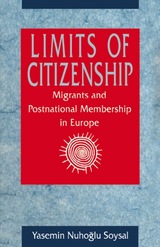 Limits of Citizenship: Migrants and Postnational Membership in Europe
Yasemin Nuhoglu Soysal
University of Chicago Press, 1994 In many Western countries, rights that once belonged solely to citizens are being extended to immigrants, a trend that challenges the nature and basis of citizenship at a time when nation-states are fortifying their boundaries through restirictive border controls and expressions of nationalist ideologies. In this book, Yasemin Soysal compares the different ways European nations incorporate immigrants, how these policies evolved, and how they are influenced by international human rights discourse.
Soysal focuses on postwar international migration, paying particular attention to "guestworkers." Taking an in-depth look at France, Germany, the Netherlands, Sweden, Switzerland, and the United Kingdom, she identifies three major patterns that reflect the varying emphasis particular states place on individual versus corporate groups as the basis for incorporation. She finds that the global expansion and intensification of human rights discourse puts nation-states under increasing outside pressure to extend membership rights to aliens, resulting in an increasingly blurred line between citizen and noncitizen. Finally, she suggests a possible accommodation to these shifts: specifically, a model of post-national membership that derives its legitimacy from universal personhood, rather than national belonging.
This fresh approach to the study of citizenship, rights, and immigration will be invaluable to anyone involved in issues of human rights, international migration, and transnational cultural interactions, as well as to those who study the contemporary transformation of the nation-state, nationalism, and globalization.
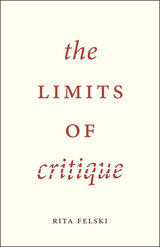 The Limits of Critique
Rita Felski
University of Chicago Press, 2015 A powerful examination of the very idea of critique and its dominance in literary studies
Why must critics unmask and demystify literary works? Why do they believe that language is always withholding some truth, that the critic’s task is to reveal the unsaid or repressed? In this book, Rita Felski examines critique, the dominant form of interpretation in literary studies, and situates it as but one method among many, a method with strong allure—but also definite limits.
Felski argues that critique is a sensibility best captured by Paul Ricoeur’s phrase “the hermeneutics of suspicion.” She shows how this suspicion toward texts forecloses many potential readings while providing no guarantee of rigorous or radical thought. Instead, she suggests, literary scholars should try what she calls “postcritical reading”: rather than looking behind a text for hidden causes and motives, literary scholars should place themselves in front of it and reflect on what it suggests and makes possible.
By bringing critique down to earth and exploring new modes of interpretation, The Limits of Critique offers a fresh approach to the relationship between artistic works and the social world.
 The Limits of Critique
Rita Felski
University of Chicago Press, 2015 This is an auto-narrated audiobook version of this book.
Why must critics unmask and demystify literary works? Why do they believe that language is always withholding some truth, that the critic’s task is to reveal the unsaid or repressed? In this book, Rita Felski examines critique, the dominant form of interpretation in literary studies, and situates it as but one method among many, a method with strong allure—but also definite limits.
Felski argues that critique is a sensibility best captured by Paul Ricoeur’s phrase “the hermeneutics of suspicion.” She shows how this suspicion toward texts forecloses many potential readings while providing no guarantee of rigorous or radical thought. Instead, she suggests, literary scholars should try what she calls “postcritical reading”: rather than looking behind a text for hidden causes and motives, literary scholars should place themselves in front of it and reflect on what it suggests and makes possible.
By bringing critique down to earth and exploring new modes of interpretation, The Limits of Critique offers a fresh approach to the relationship between artistic works and the social world.
 The Limits of Enlightenment: Jews, Germans, and the Eighteenth-Century Study of Scripture
Edward Breuer
Harvard University Press This book explores the early Jewish confrontation with modernity and its attendant cultural and religious challenges. Focusing on the burgeoning eighteenth-century interest in the study of Scripture, Edward Breuer examines the complex relationship between the Jewish Enlightenment and the German Aufklärung. The revival of a textual and linguistic approach to Bible study among Jews, exemplified by the new translation and commentary published by Moses Mendelssohn, was largely reflective of the aesthetic and literary concerns of contemporary Europeans.
The Limits of Enlightenment demonstrates that this revival was also informed by an acute awareness of critical European scholarship and an attempt to respond to its modern challenges. Alongside its openness to European society and culture, the German-Jewish Enlightenment was thus also shaped by a newly perceived need to defend centuries of Jewish learning and tradition.
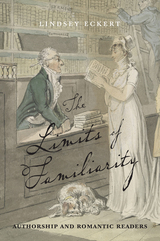 The Limits of Familiarity: Authorship and Romantic Readers
Lindsey Eckert
Bucknell University Press, 2022 Finalist for the British Association of Romantic Studies First Book Prize
What did Wordsworth wear, and where did he walk? Who was Byron’s new mistress, and how did his marriage fare? Answers—sometimes accurate, sometimes not—were tantalizingly at the ready in the Romantic era, when confessional poetry, romans à clef, personal essays, and gossip columns offered readers exceptional access to well-known authors. But at what point did familiarity become overfamiliarity? Widely recognized as a social virtue, familiarity—a feeling of emotional closeness or comforting predictability—could also be dangerous, vulgar, or boring. In The Limits of Familiarity, Eckert persuasively argues that such concerns shaped literary production in the Romantic period. Bringing together reception studies, celebrity studies, and literary history to reveal how anxieties about familiarity shaped both Romanticism and conceptions of authorship, this book encourages us to reflect in our own fraught historical moment on the distinction between telling all and telling all too much.
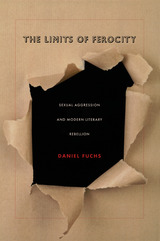 The Limits of Ferocity: Sexual Aggression and Modern Literary Rebellion
Daniel Fuchs
Duke University Press, 2011 The Limits of Ferocity is a powerful critique of the culture of extremity represented in the works of D. H. Lawrence, Georges Bataille, Henry Miller, and Norman Mailer. Daniel Fuchs provides close readings of their literary and intellectual texts, which convey a loathing of middle-class culture or, as the case may be, society itself, in favor of a rebellion often expressed as an aggressive, even apocalyptic, sexuality. The Marquis de Sade is the precursor of this literature, which idealizes the self that violates taboos and laws in the search for erotic transcendence. Fuchs shows as well how these writers reflected and contributed to a broader cultural assault on liberal moderation and Freudian humanism. He explains Freud’s theories of culture and sexual aggression and describes how they were rejected or reworked, sometimes in favor of a liberating violence, by theorists including Wilhelm Reich, Norman O. Brown, and Gilles Deleuze and Félix Guattari. Fuchs concludes with a reflection on books by William Burroughs, Bret Easton Ellis, and the sociologist Philip Rieff. This absorbing study illuminates the utopianism and narcissism in works of intellectual and artistic “ferocity” that characterized the turn in American consciousness from the period after the Second World War to the late 1960s and 1970s.
The Limits of Freedom of Contract
Michael J. Trebilcock
Harvard University Press, 1993 Our legal system is committed to the idea that private markets and the law of contracts that supports them are the primary institutions for allocating goods and services in a modern economy. Yet the market paradigm, this book argues, leaves substantial room for challenge. For example, should people be permitted to buy and sell blood, bodily organs, surrogate babies, or sexual favors? Is it fair to allow people with limited knowledge about a transaction and its consequences to enter into it without guidance from experts?
The Limits of Heroism: Homer and the Ethics of Reading
Mark Buchan
University of Michigan Press, 2005 The plots of Homeric poems depend upon the uncertainty of Odysseus and Achilles getting what they want, while the endings imply that getting what one wants may itself be a disaster. By examining specific episodes of the Odyssey, Mark Buchan illustrates the centrality of hazard and doubt to decision-making, and argues that such uncertainty affects not only the heroes themselves, but also the world around them. Buchan goes on to introduce the paradoxes of female desire in the poems, uncovering the ways that female desire at once upholds and threatens the poems' heroic male ideology. Finally, The Limits of Heroism questions the interplay between desire and ideals of heroism, and finds that the poems critique the very ideology that motivates their heroes.
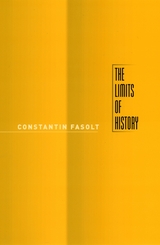 The Limits of History
Constantin Fasolt
University of Chicago Press, 2003 History casts a spell on our minds more powerful than science or religion. It does not root us in the past at all. It rather flatters us with the belief in our ability to recreate the world in our image. It is a form of self-assertion that brooks no opposition or dissent and shelters us from the experience of time.
So argues Constantin Fasolt in The Limits of History, an ambitious and pathbreaking study that conquers history's power by carrying the fight into the center of its domain. Fasolt considers the work of Hermann Conring (1606-81) and Bartolus of Sassoferrato (1313/14-57), two antipodes in early modern battles over the principles of European thought and action that ended with the triumph of historical consciousness. Proceeding according to the rules of normal historical analysis—gathering evidence, putting it in context, and analyzing its meaning—Fasolt uncovers limits that no kind of history can cross. He concludes that history is a ritual designed to maintain the modern faith in the autonomy of states and individuals. God wants it, the old crusaders would have said. The truth, Fasolt insists, only begins where that illusion ends.
With its probing look at the ideological underpinnings of historical practice, The Limits of History demonstrates that history presupposes highly political assumptions about free will, responsibility, and the relationship between the past and the present. A work of both intellectual history and historiography, it will prove invaluable to students of historical method, philosophy, political theory, and early modern European culture.
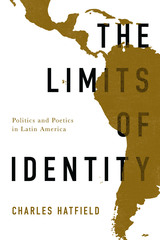 The Limits of Identity: Politics and Poetics in Latin America
By Charles Hatfield
University of Texas Press, 2015 The Limits of Identity is a polemical critique of the repudiation of universalism and the theoretical commitment to identity and difference embedded in Latin American literary and cultural studies. Through original readings of foundational Latin American thinkers (such as José Martí and José Enrique Rodó) and contemporary theorists (such as John Beverley and Doris Sommer), Charles Hatfield reveals and challenges the anti-universalism that informs seemingly disparate theoretical projects. The Limits of Identity offers a critical reexamination of widely held conceptions of culture, ideology, interpretation, and history. The repudiation of universalism, Hatfield argues, creates a set of problems that are both theoretical and political. Even though the recognition of identity and difference is normally thought to be a form of resistance, The Limits of Identity claims that, in fact, the opposite is true.
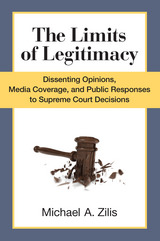 The Limits of Legitimacy: Dissenting Opinions, Media Coverage, and Public Responses to Supreme Court Decisions
Michael A. Zilis
University of Michigan Press, 2015 When the U.S. Supreme Court announces a decision, reporters simplify and dramatize the complex legal issues by highlighting dissenting opinions and thus emphasizing conflict among the justices themselves. This often sensationalistic coverage fosters public controversy over specific rulings despite polls which show that Americans strongly believe in the Court’s legitimacy as an institution. In The Limits of Legitimacy, Michael A. Zilis illuminates this link between case law and public opinion. Drawing on a diverse array of sources and methods, he employs case studies of eminent domain decisions, analysis of media reporting, an experiment to test how volunteers respond to media messages, and finally the natural experiment of the controversy over the Affordable Care Act, popularly known as Obamacare.
Zilis finds that the media tends not to quote from majority opinions. However, the greater the division over a particular ruling among the justices themselves, the greater the likelihood that the media will criticize that ruling, characterize it as "activist," and employ inflammatory rhetoric. Hethen demonstrates that the media’s portrayal of a decision, as much as the substance of the decision itself, influences citizens’ reactions to and acceptance of it.
This meticulously constructed study and its persuasively argued conclusion advance the understanding of the media, judicial politics, political institutions, and political behavior.
The Limits of Liberty: Between Anarchy and Leviathan
James M. Buchanan
University of Chicago Press, 1977 "The Limits of Liberty is concerned mainly with two topics. One is an attempt to construct a new contractarian theory of the state, and the other deals with its legitimate limits. The latter is a matter of great practical importance and is of no small significance from the standpoint of political philosophy."—Scott Gordon, Journal of Political Economy
James Buchanan offers a strikingly innovative approach to a pervasive problem of social philosophy. The problem is one of the classic paradoxes concerning man's freedom in society: in order to protect individual freedom, the state must restrict each person's right to act. Employing the techniques of modern economic analysis, Professor Buchanan reveals the conceptual basis of an individual's social rights by examining the evolution and development of these rights out of presocial conditions.
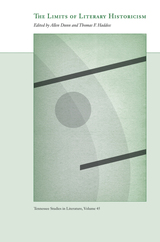 The Limits of Literary Historicism
Allen Dunn
University of Tennessee Press, 2012
The Limits of Literary Historicism is a collection of essays arguing that historicism, which has come to dominate the professional study of literature in recent decades, has become ossified. By drawing attention to the limits of historicism—its blind spots, overreach, and reluctance to acknowledge its commitments—this provocative new book seeks a clearer understanding of what historicism can and cannot teach us about literary narrative.
Editors Allen Dunn and Thomas F. Haddox have gathered contributions from leading scholars that challenge the dominance of contemporary historicism. These pieces critique historicism as it is generally practiced, propose alternative historicist models that transcend mere formula, and suggest alternatives to historicism altogether. The volume begins with the editors’ extended introduction, “The Enigma of Critical Distance; or, Why Historicists Need Convictions,” and then is divided into three sections: “The Limits of Historicism,” “Engagements with History,” and “Alternatives to History.”
Defying convention, The Limits of Literary Historicism shakes up established modes to move beyond the claustrophobic analyses of contemporary historicism and to ask larger questions that envision more fulfilling and more responsible possibilities in the practice of literary scholarship.
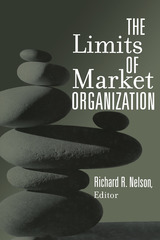 The Limits of Market Organization
Richard R. Nelson
Russell Sage Foundation, 2005 The last quarter century has seen a broad, but qualified, belief in the efficacy of market organization slide into an unyielding dogma that the market, as unconstrained as possible, is the best way to govern virtually all economic activity. However, unrestricted markets can often lead to gross inequalities in access to important resources, the creation of monopolies, and other negative effects that require regulation or public subsidies to remedy. In The Limits of Market Organization, editor Richard Nelson and a group of economic experts take a more sophisticated look at the public/private debate, noting where markets are useful, where they can be effective only if augmented by non-market mechanisms, and where they are simply inappropriate. The Limits of Market Organization examines the appropriateness of markets in four areas where support for privatization varies widely: human services, public utilities, science and technology, and activities where market involvement is altogether inappropriate. Richard Murnane makes the case that a social interest in providing equal access to high quality education means that for school voucher plans to be effective, substantial government oversight is necessary. Federal involvement in a transcontinental railroad system was initially applauded, but recent financial troubles at Amtrak have prompted many to call for privatization of the rails. Yet contributor Elliot Sclar argues that public subsidies are the only way to maintain this vital part of the American transportation infrastructure. While market principles can promote competition and foster innovation, applying them in certain areas can actually stifle progress. Nelson argues that aggressive patenting has hindered scientific research by restricting access to tools and processes that could be used to generate new findings. He suggests that some kind of exception to patent law should be made for scientists who seek to build off of patented findings and then put their research results into the public domain. In other spheres, market organization is altogether unsuitable. Legal expert Richard Briffault looks at one such example—the democratic political process—and profiles the successes and failures of campaign finance reform in preventing parties from buying political influence. This important volume shows that market organization has its virtues, but also its drawbacks. Just as regulation can be over-applied, so too can market principles. The Limits of Market Organization encourages readers to think more discriminately about the march toward privatization, and to remember the importance of public institutions.
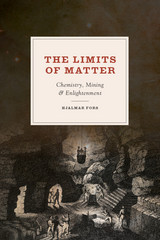 The Limits of Matter: Chemistry, Mining, and Enlightenment
Hjalmar Fors
University of Chicago Press, 2014 During the seventeenth and eighteenth centuries, Europeans raised a number of questions about the nature of reality and found their answers to be different from those that had satisfied their forebears. They discounted tales of witches, trolls, magic, and miraculous transformations and instead began looking elsewhere to explain the world around them. In The Limits of Matter, Hjalmar Fors investigates how conceptions of matter changed during the Enlightenment and pins this important change in European culture to the formation of the modern discipline of chemistry.
Fors reveals how, early in the eighteenth century, chemists began to view metals no longer as the ingredients for “chrysopoeia”—or gold making—but as elemental substances, or the basic building blocks of matter. At the center of this emerging idea, argues Fors, was the Bureau of Mines of the Swedish State, which saw the practical and profitable potential of these materials in the economies of mining and smelting.
By studying the chemists at the Swedish Bureau of Mines and their networks, and integrating their practices into the wider European context, Fors illustrates how they and their successors played a significant role in the development of our modern notion of matter and made a significant contribution to the modern European view of reality.
The Limits of Medicine: How Science Shapes Our Hope for the Cure
Edward S. Golub
University of Chicago Press, 1997 Edward Golub, distinguished researcher and former professor of immunology, shows that
major advances in medicine are caused by changes in the way scientists describe disease.
Bleeding, sweating, and other treatments we consider barbaric were standard treatments for
centuries because they conformed to a conception of disease shared by patients and doctors.
Scientific breakthroughs in the understanding of disease in the nineteenth century transformed
treatment and the goals of medicine. Golub argues that the ongoing revolution in molecular
genetics has opened the door to the "biology of complexity," again transforming our view of
disease. This thought-provoking, timely book reveals a crucial but overlooked role of science
in medicine, and offers a new vision for the goals of both science and medicine as we enter the
twenty-first century.
The Limits of Money: Three Perceptions of Our Most Comprehensive Value System
Simon Goudsmit
Eburon Academic Publishers, 2005 The Limits of Money examines money as a historical phenomenon and speculates on its future possibilities and limitations. The volume opens with a concise history of monetary systems and then examines how the advent of numbers transformed money into the main determinant of fiscal value. Simon Goudsmit concludes by looking at the tension between the power of financial incentives and the civic structures and behaviors needed to maintain Western democracy.
The Limits of Money is an intriguing and much-needed study of the role of money in daily life and human societies.
|
|

